- Skip to right header navigation
- Skip to main content
- Skip to secondary navigation
- Skip to primary sidebar
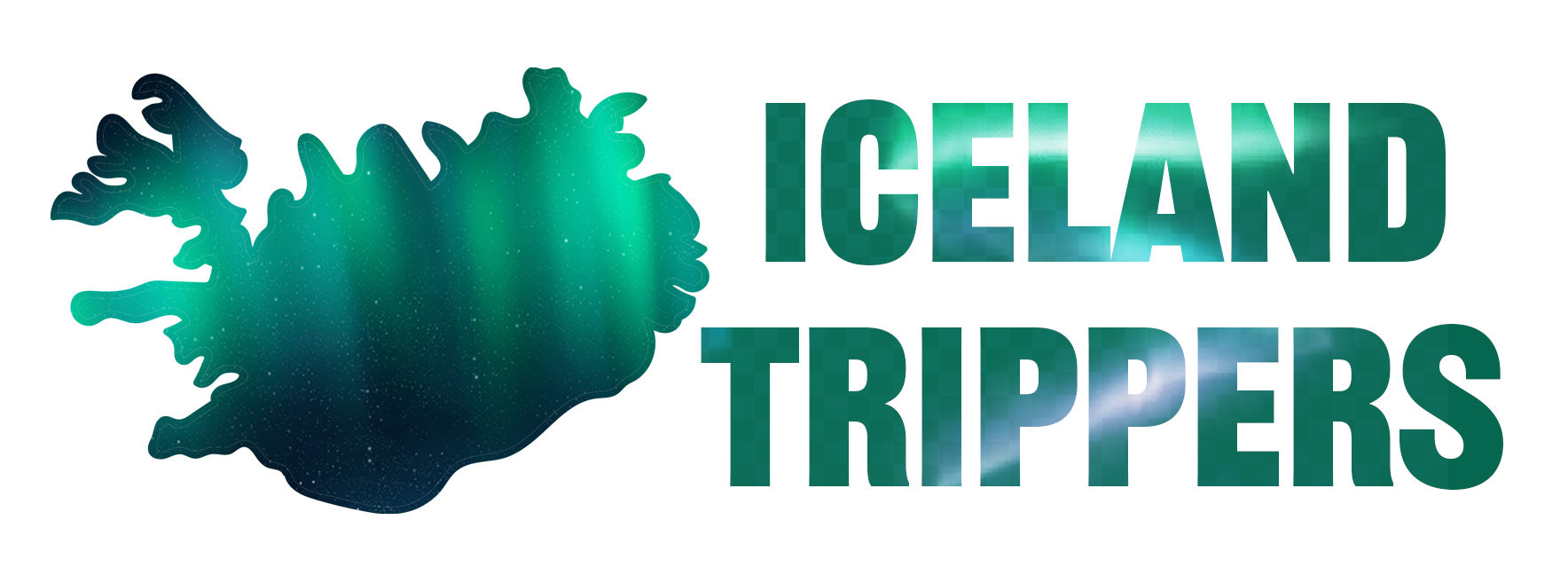
Learn how to easily plan your dream trip to Iceland with helpful guides and tips!
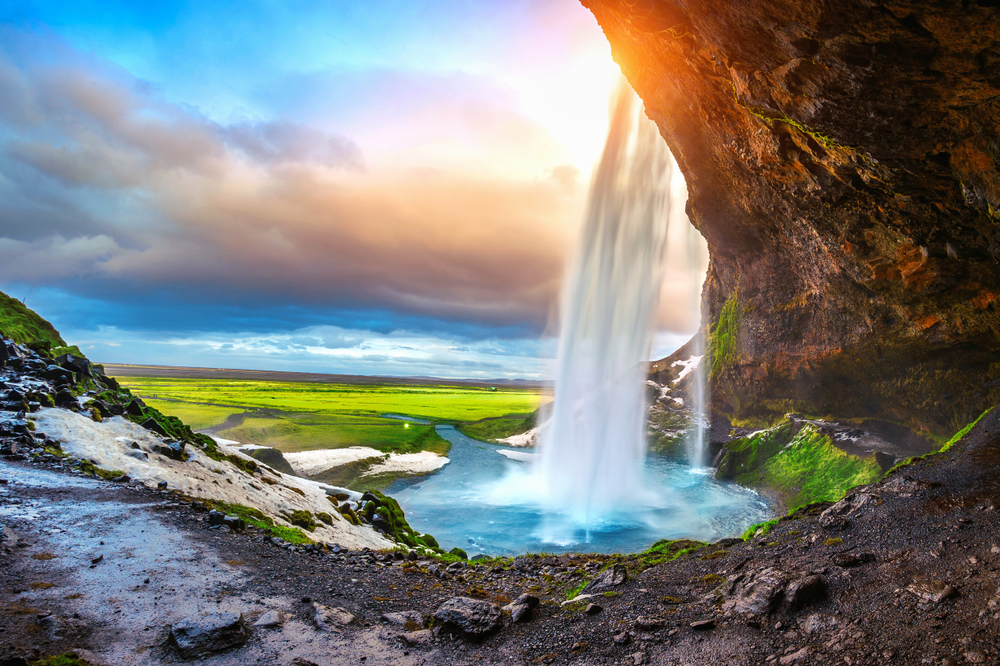

Best (And Worst) Time To Visit Iceland (Month By Month!)
February 19, 2022 // by Iceland Trippers // Leave a Comment
Deciding on the best time to visit Iceland for your needs is one of the most important parts of planning an Iceland trip. If you are unsure where to start, we have made it super easy for you by explaining what you can expect month by month.
This complete guide to the months and seasons of Iceland will fully prepare you for your trip. All of the most common questions are answered, such as when to see special things like the Northern Lights, lupine flowers, and puffins.
Planning your trip to Iceland last minute?
Make sure to book your hotels and tours in Iceland in advance to ensure availability! The longer you wait, the more difficult it gets. Here are my top picks for your trip :
Top Experiences And Tours In Iceland:
- Golden Circle Full Day Tour From Reykjavik (Likely to sell out!)
- Silfra Snorkeling Tour (Includes photos + only small group)
- South Of Iceland Full Day Trip (Our pick!)
- Whale Watching In Reykjavik (On a luxury yacht)
- Northern Lights Bus Tour (Great to go with a local)
- Ice Cave Tour And Glacier Hike (Likely to sell out)
Tickets You MUST book in advance:
- Keflavik > Reykjavik Bus Airport Transfer (Skip the line!)
- Sky Lagoon Entrance Ticket (Includes 7-step spa ritual)
- Blue Lagoon Entry Ticket With Drink (Likely to sell out!)
Top picks for places to stay in Iceland:
- Hotel South Coast (Great central location)
- Grandi Reykjavik (Includes free breakfast)
- Hotel Kria (Close to black sand beach)
- Hotel Skaftafell (Mid-range price)
Iceland is amazing , but it is also a country that must be taken seriously. Winter in Iceland is beautiful, but you must plan accordingly if that is when you are planning to visit. However, even summer has its drawbacks.
Not to worry, we have all the information you need to check off all of your Iceland dreams. The best months to visit Iceland might depend a little bit on the season, but it depends the most on you!
Get a FREE printable “Hidden Gems In Iceland” E-book by joining our private Iceland Facebook Group and sharing your photos and asking for tips and tricks.
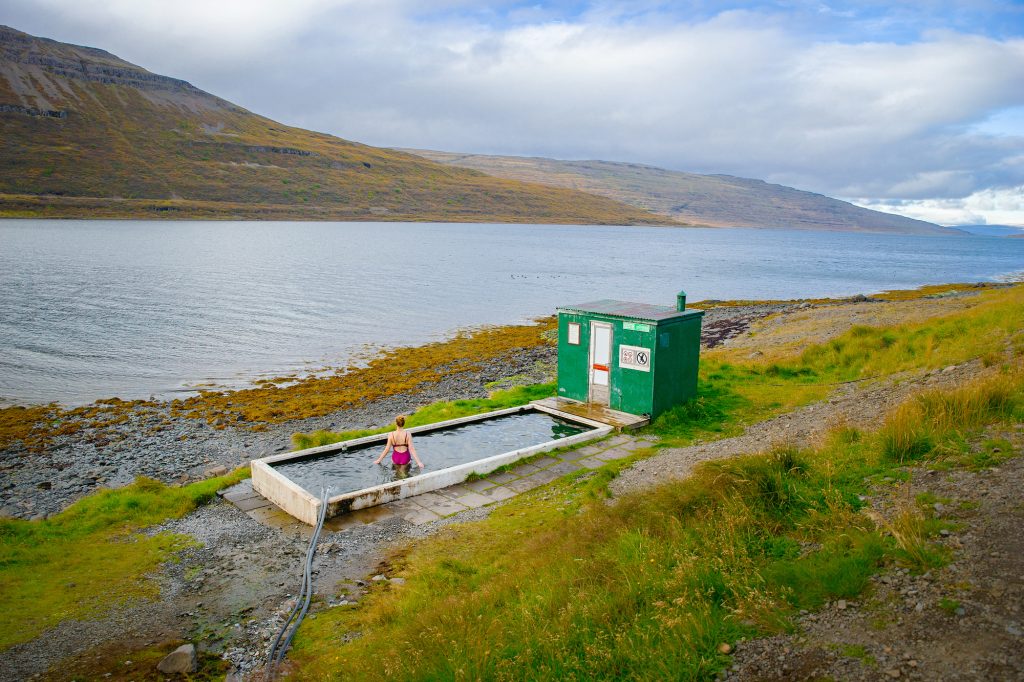
High and Low Seasons for Visiting Iceland
Like any popular tourist destination, Iceland has an “on” season and an “off” season. These times are otherwise referred to as high and low seasons (with the in-betweens being called shoulders).
The high season is when the majority of the tourists come to visit. This is generally due to the nice weather and ease of access. This is when most people plan their Iceland itinerary !
But just because the weather is colder in the low season does not mean you should not visit! Many people enjoy the low and shoulder seasons more because there are fewer crowds and it is cheaper, making it the best time to travel to Iceland for a lot of people.
You might be surprised to learn that there are indoor and outdoor activities for all of the seasons. Iceland is beautiful inside and out no matter when you visit.
High Season: June-August
Summer, summer, summer! This is the high season in Iceland for the obvious reasons: weather and temperature. It is undeniably the best weather to visit Iceland with much more sun and higher temperatures.
However, this is also by far the most expensive time to visit Iceland. Airfare, hotel fees, food prices–everything costs a pretty penny during the summer.
Not to mention the crowds. The high season is high season because it is when most people visit Iceland.
While the cost and the crowds are pretty big negatives, the high season has phenomenal positives as well. Especially if you are wanting to go to Iceland for the great outdoors. Most roads will be open during this time as well.
At the end of the day, it is all about your priorities. If weather and being able to spend the maximum time outside every day is your top priority, you are going to want to come to Iceland during the high season.

Shoulder Season: Sept-Oct & April-May
Shoulder seasons are the traveling industry’s best-kept secret. Okay, so it is not super-secret, but it still is not something people talk about as much as they should.
We hear about the high and low seasons all the time, but not so much about the shoulder seasons. They are the very beginning and the very ending of the classic tourism season.
This means that there are still more people than in the low season, but not the huge crowds of the high season. Prices are a little higher too, but still generally reasonable.
The best part of the shoulder season is that the weather is still reasonable. It may not be as great as the high season, but still totally tolerable!
Low Season: November-March
The low season in Iceland is during the typical winter months. For a country named after ice, Iceland’s winters are not that bad!
While there are some road closures, the country is still quite explorable and traversable during the cold months. And if you are coming to see the Northern Lights, this is the time to do it!
This is also the time to come if you are on a serious budget and need to take advantage of the low season prices. Traveling does not have to empty out your bank account.
The lack of crowds makes it the best season to visit Iceland on a budget! There are some trade-offs for coming during the off-season in Iceland, but there are some definite benefits too. This is actually our favorite time to go!
As we said above, the best time to visit Iceland depends on your Iceland priorities!
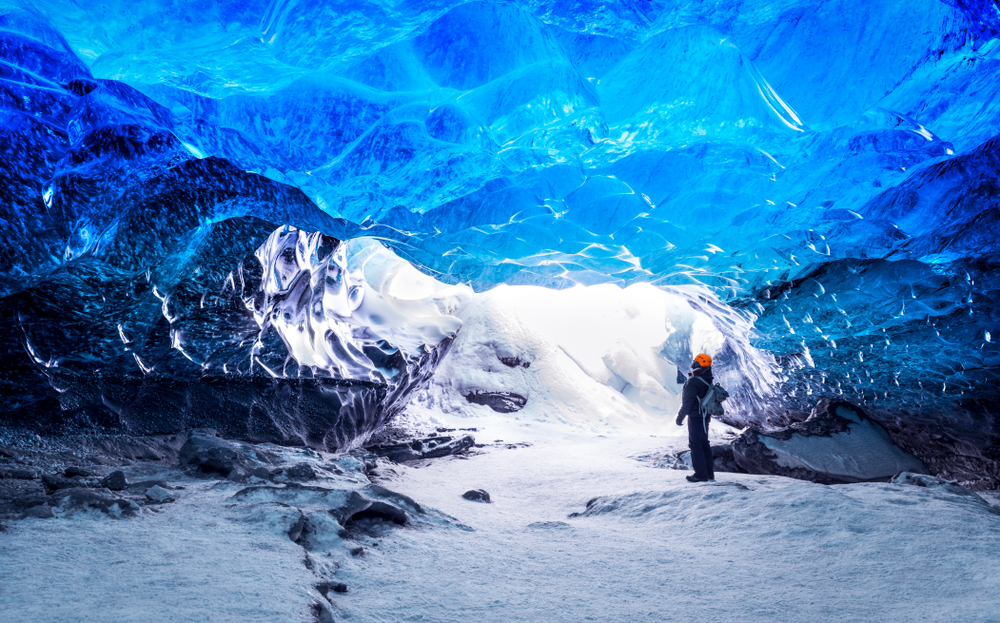
Visit Iceland in Summer if You:
-Love the idea of 24-hour sunshine. Ah, the midnight sun–you are not alone if this is on your bucket list ! If you have dreamt of Iceland’s 24-hour daylight, the summer might be the best time for you to visit.
-Are enamored with the brilliant green of summer. Iceland starts greening back up in the spring, but summer is the best time to visit Iceland if you want to see green everywhere.
The iconic lupine flowers bloom in June and July as well, creating swatches of purple across the landscape. If you want to photograph these flowers make sure to time your trip right.
-Want the best chance to spot whales. Whale watching is a popular tour in Iceland. The magnificent beasts can be spotted offshore from April through October, but the peak time to see them is in the summer.
In summer, more species are in the area and boat tours are less likely to get canceled because of weather.
-Plan on camping. Since the weather is calmer and less unpredictable during the summer, camping in Iceland is a better option for this season. You will have the least rainfall and less wind. This is especially good if you are tent camping.
-Are not bothered by crowds. Everyone loves the gorgeous, summer Iceland scenery. And we mean everyone . Iceland is a super crowded place in summer so keep that in mind.
If you hate crowds, you can still do alright coming in the summer. You will just want to visit the less popular places in the country. They may be less popular, but Iceland is amazing no matter where you go.
-Are totally invested in the traditional sense (read: financially). If you are not concerned about how much your trip to Iceland is going to cost, that saves you a lot of seasonal concerns.
Iceland is stunning in the summer, and we cannot blame you for wanting to visit when everything is so vibrant.
Just keep in mind that it is already expensive to travel to Iceland, let alone during the summer. During the high season, top tourist destinations and locations charge top dollar for everything.

Visit Iceland in Winter if You:
-Want to spot the Northern Lights. You can see the Northern Lights in the fall, but there is a caveat. You will have to stay up until around 2 am. If staying up all night is not your vibe, then winter is the best time to go to Iceland to see the Northern Lights!
In winter, there are not many daylight hours. The sun is only up from around 11 am to 3 pm. However, the increased darkness means a better chance of spotting the Northern Lights. Around midnight is the best time to spot them, but earlier or later is possible too.
-Want to visit an ice cave. The incredibly-formed ice caves are some of the best natural features in Iceland and can only be visited in the winter. Tours are lead from November to March.
-Love a good winter wonderland. There is just something magical about the way snow completely changes Iceland’s landscape. Many people absolutely love coming to Iceland during this time of year because of this.
If you love the beauty of winter, then it is the best time to visit Iceland! Keep in mind that snow has drawbacks since some roads will be closed.
-Want to stand out from the crowd. While a lot of people enjoy Iceland in the winter, the number of people who go is nothing compared to the summer.
If you are looking to do something a little different and unique, winter just might be the best time for your visit to Iceland. It certainly is not a bad time!

Visit Iceland in Fall if You:
-Do not like crowds but still want to see the Northern Lights. Even though this is the off-season, it is prime viewing time for the Northern Lights.
This is because the weather is so nice! You do not have to freeze to see the Northern Lights, just come during the fall.
An extra bonus is that there are really not very many tourists during this time. Fall is the best time of the year to visit Iceland if you want to miss the crowds and do not mind coming when it is a little colder.
-Love fall colors. Iceland is not a country that is typically praised for its fall foliage, mostly because there are not many trees. However, what trees there are turn golden along with the grasses, to create a beautiful landscape.
-Want to experience the Iceland Airwaves music festival. If you have not already heard about it then you might not know what a big deal the Iceland Airwaves music festival is. But if you have heard of it then you already know that it is a must-see!
It is a super popular music festival that happens each fall in Iceland. Usually, it is held sometime in November, but do an internet search to find the exact date.
If you love music, this festival is a great addition to your Iceland plans! Fall is the best time to go to Iceland to check it out!

Visit Iceland in Spring if You:
-Love puffins! Spring is the best time to visit Iceland if you want to see puffins . These adorable birds start arriving around April for their yearly nesting.
Puffins are some of the cutest birds out there, and you can find them all over! If you are coming to catch sight of or photograph them, just check in advance to make sure they will be in the area where you are going.
-Want to road trip without snow. As we said above, some of the roads can close in the winter. Spring is the best time to come to Iceland for better weather and open roads. That melting snow also helps to make the waterfalls flow stronger.
Not to mention that the world is coming back to life in the most beautiful way! There is something about the colorful bursts of color against the gray of winter that makes spring like no other season.
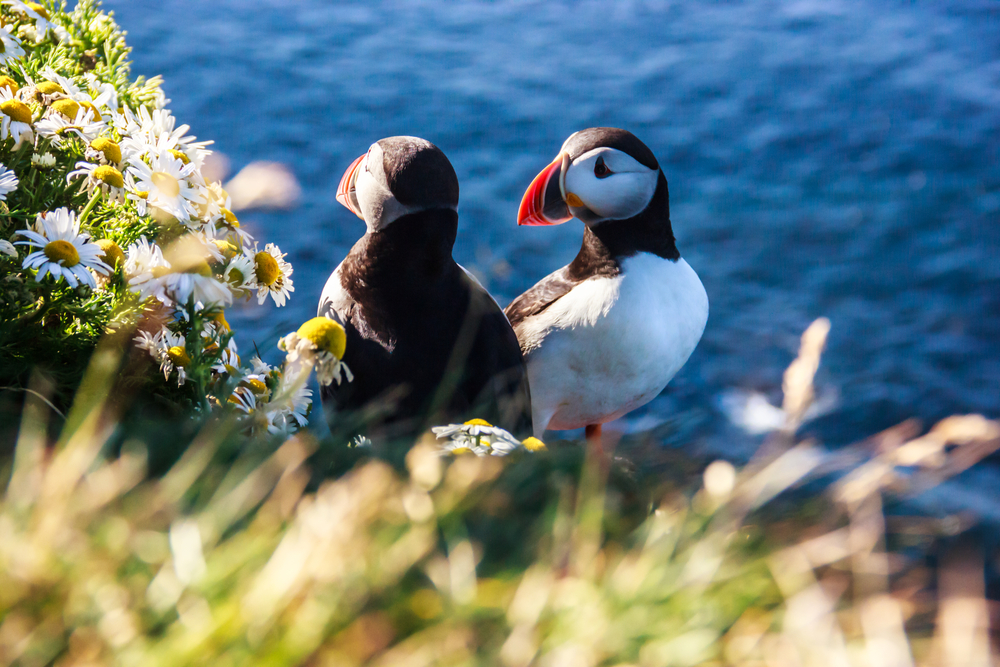
Best Time to See Northern Lights in Iceland
If you are interested in the Northern Lights, you are interested in Iceland! While there are many different places to see the Northern Lights in the world, Iceland is hard to beat.
Especially considering that there are places where you can watch them from a hot tub! The Northern Lights In Iceland are a huge draw, and if they are the reason you are coming you are not alone!
If you are wondering what is the best month to see the Northern Lights in Iceland, there are a few choices. It is possible to see the Northern Lights any month between the end of September and the end of March.
Just like the sun is out all night during summer, the nights are very long in the winter. The closer to mid-winter you visit, the longer the night and thus the higher chance of seeing the lights.
You definitely will not be able to see them during the summer! Winter is when you should book your Iceland trip if the Northern Lights are a priority.
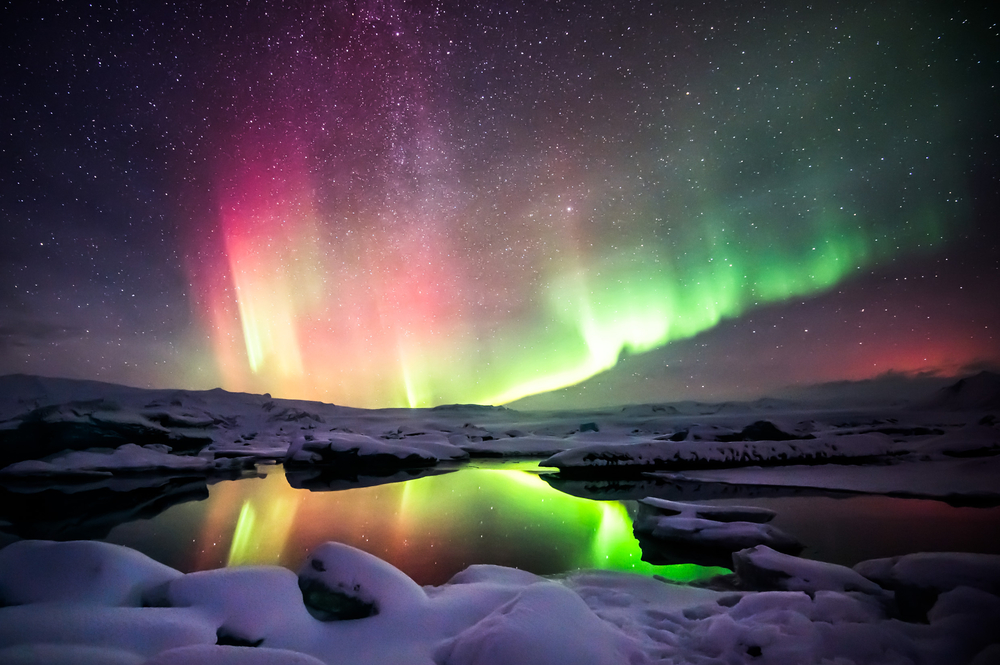
Cheapest Time to Visit Iceland
Unfortunately, Iceland is one of the more expensive countries to visit. We have gone over and over because we believe the experience is worth the money .
However, there are things you can do to make your trip much less expensive. One of those things is visiting during the Iceland off-season.
If it is your goal to do Iceland without dumping a ton of cash, we absolutely recommend the shoulder seasons or winter. Visiting right before or right after the high season of summer can save you a lot of money.
If saving money is a high priority, winter is absolutely the best time to visit Iceland. And pro tip: use grocery stores to cut down on costs even more!
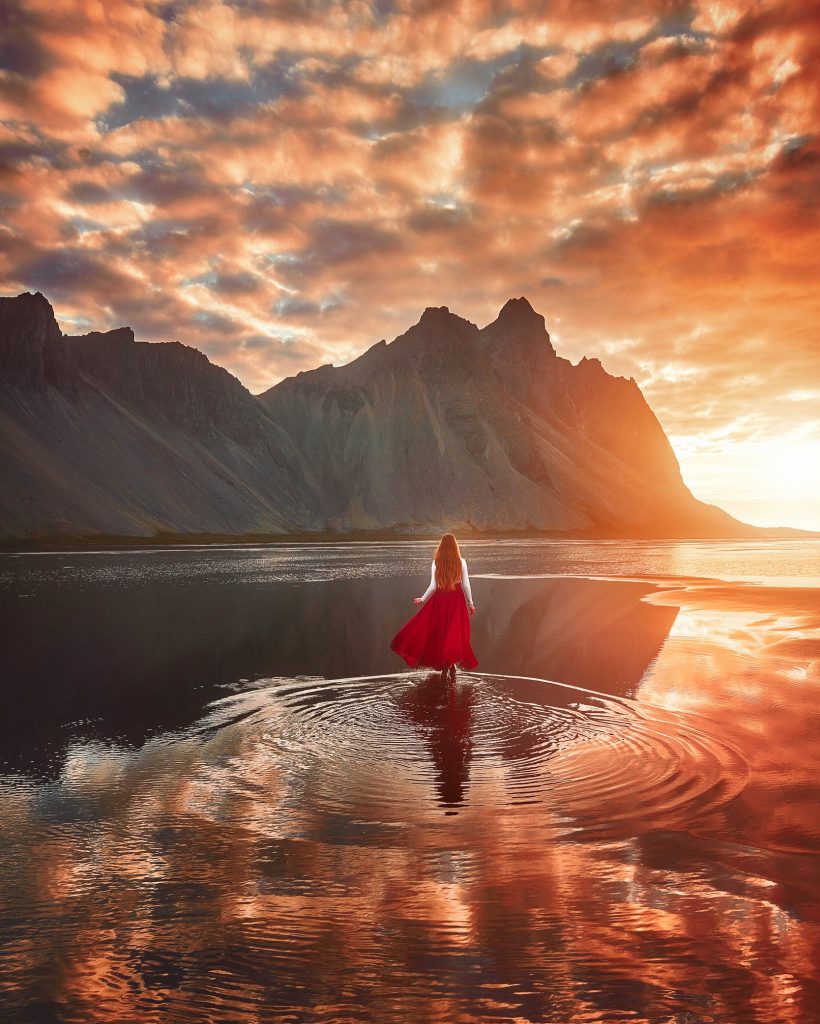
Iceland Weather Breakdown by Month
So far we have been referring to entire seasons, but we know that is kind of broad. Especially when you are planning the trip of a lifetime!
That is why we are going to break everything about Iceland Weather down month by month . This way you can know exactly what to expect.
After all, sometimes the best time to visit Iceland is simply when it best fits into your life. Whenever you make the trip, our month-by-month breakdown will help you make the most of it.
Iceland Weather in January
Happy New Year! January is a great time to visit Iceland. During this time of year you will find highs of about 36 ° F and lows of about 27 ° F.
Is that warmer than you expected? For a country named after ice, Iceland’s winters are actually quite moderate when compared with a lot of other places in the world!
That being said, January in Iceland is the coldest and windiest month. You will want to bring warm clothing and dress appropriately! Expect lots of snow and ice.
Iceland Weather in February
Honestly, the temperatures do not change much in February. What does change is the hours of daylight!
At the beginning of January, you will only get about 4 hours of daylight a day. By the end of February, this increases to about 10 hours.
February is a great month to come because there is more daylight but the crowds and costs are still at a minimum. Check out our post on things to know before you visit Iceland in February!

Iceland Weather in March
March continues with the increase in daylight hours, with about 13 hours of sunshine a day by the end of the month.
Winter weather continues in Iceland in March , although it starts sticking more to the mountaintops and less to the streets. As with most places, the weather is also better in southern Iceland than in northern Iceland.
However, it is still cold pretty much everywhere. We are getting closer to spring, but you would not really know it yet. The temperatures are still averaging between 27 ° F and 36 ° F.
Iceland Weather in April
The weather finally begins to make a bit of a change in April. Temperatures range between 32 ° F and 41 ° F during this warmer month.
What is more, there is a lot less snow! Spring starts to show its face about this time, with the country beginning to green back up again. Migratory birds start to return, including puffins.
We are also looking at around 17 hours of daylight in April as we officially move out of the low season and into the shoulder season. Don’t forget to check out this post about visiting Iceland in April!
Iceland Weather in May
May is seriously one of the best times to visit Iceland! Especially if you love the sun! The days have 20 hours or more of sunlight. It is also the driest month, with the least rainfall.
The highs are also much closer to 50 ° F, which means you almost do not even need a jacket depending on where you are from.
Of course, you will still want to bring your jackets . While the weather is much more temperate, there will still be some cold days. However, it is totally livable and the country is also becoming so much more green!
Iceland in May is also still shoulder season, which means you will not have to try so hard to find your own space while enjoying the sunshine.
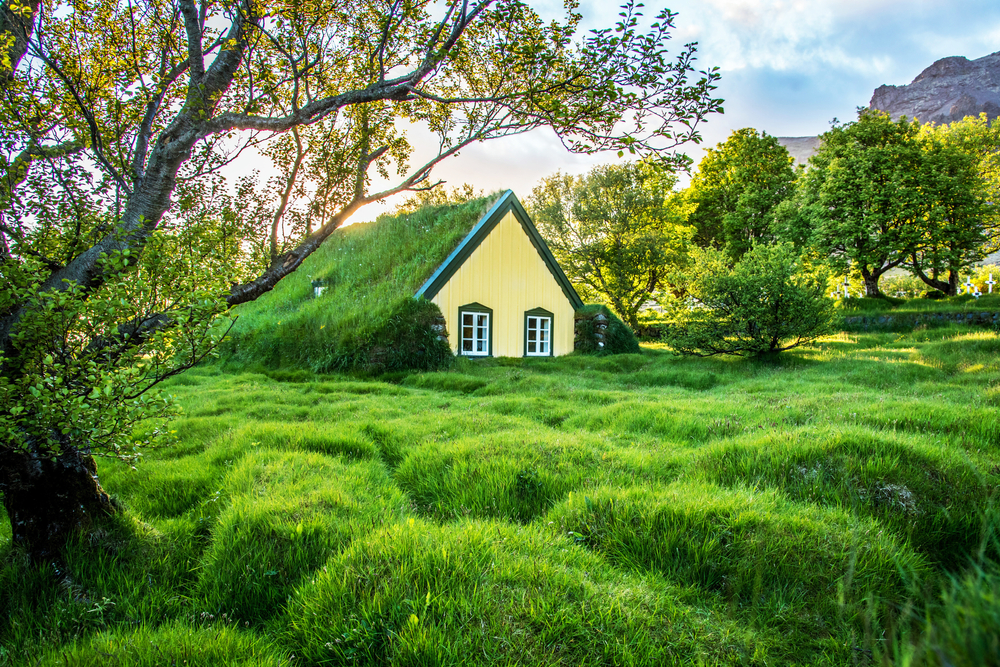
Iceland Weather in June
Welcome to high season! While it is called the high season because it is most popular among tourists, June in Iceland is also the high season for the longest days.
If getting the most out of each day is important to you, then June is the best month to visit Iceland. You can explore for many more hours in daylight.
June nights only last for about 3 hours, beginning around 11:30 PM! Yeah, blackout curtains are a big thing in Iceland summers!
While the highs average around 52 ° F, they can get much higher than that. June is the beginning of summer, and also the beginning of real warmth.
Iceland Weather in July
Now, if you are interested in heat rather than warmth , July might be a better time to visit Iceland. It is the best time of year to visit Iceland for heat, as the hottest month of the year. It is also the least windy month.
The weather in Iceland in July is generally extremely pleasant during this time of the year. While the nights are a little longer, at about 4 hours long, they do not increase by much!
Keep in mind that “hot” does not mean the same thing in Iceland as it does in other places. The average highs are around 56°F. That is part of why it is one of the most popular times to visit because it does not get any warmer than this.
Iceland Weather in August
August is the last month of the high season. While the beginning of the month is still as warm as July, temperatures start to go down by the end of the month.
August is the best time to go to Iceland if you do not mind the crowds due to the fairly standard daylight hours. The sun sets around 9 PM and rises around 5 AM. August has the least cloudy days as well.
Do keep in mind that August in Iceland goes quickly from summer to fall. By the end of the month, the slight bite to the air will have you wishing for warm pumpkin pie and spiced apple cider.
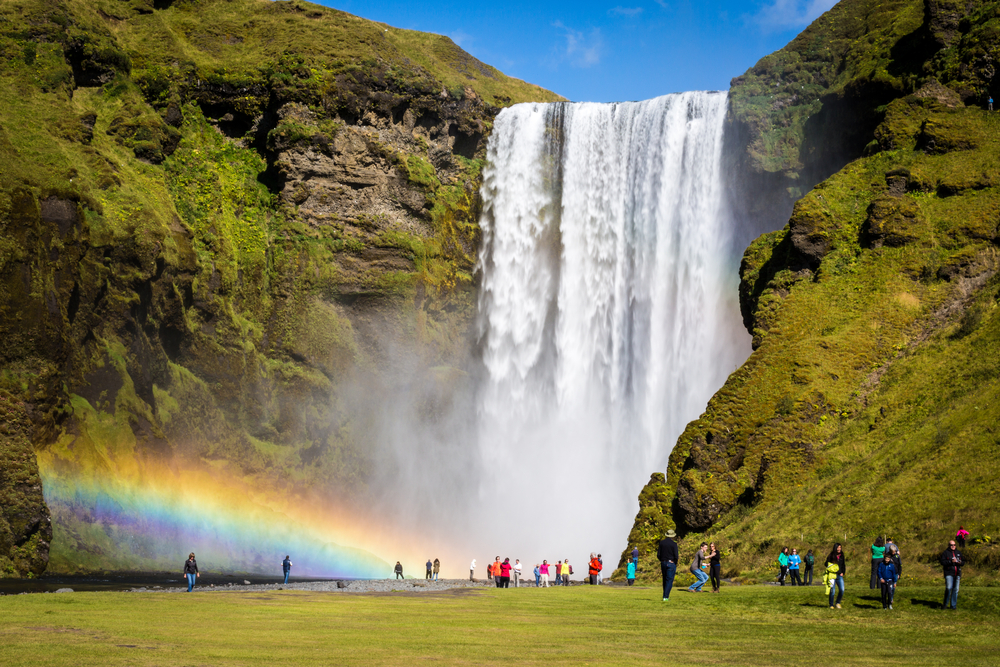
Iceland Weather in September
September still has great sunshine for Iceland, but it does go down to just below 12 hours by the end of the month. It is the warmest month with a chance to see the Northern Lights.
Temperatures are still quite nice, and we are back in shoulder season. This means that you can enjoy the nice weather and decent daylight hours without all the crowds of summer.
By the end of the month the likelihood of snow increases. If you visit Iceland in September , you will want to pack your warm clothing!
Iceland Weather in October
October in Iceland is still technically part of the shoulder season, but it is starting to feel much more like the low season of winter. Daylight is down to about 8 hours a day.
In addition, the average temperature is dropping back down to about 41 ° F. While it is not absolute winter yet, the weather should be taken into consideration at this point.
Bring warm clothes and waterproof ponchos. October is the wettest month in Iceland with an average of 14 days with precipitation.
Although it is colder, October is the best time to visit Iceland if you want to explore with as few crowds as possible. The roads are still open and you can still go pretty much everywhere you want.
Iceland Weather in November
Welcome to winter and the off-season in Iceland. November begins the coldest time of the year, although December and January are colder. This is when the snow starts to fully cover the island.
The average temperature is 38 ° F, but it can get much colder. Daylight only lasts about six hours.
We love to visit Iceland in the low season, and really do think it is one of the best times to visit Iceland. You just have to be prepared for the lower temperatures and the weather.
Iceland Weather in December
The last month of the year is one of the coldest months, second only to January. Temperature highs only reach about 39 ° F. It gets as cold as 21 ° F.
In addition, Iceland in December sees quite a lot of precipitation and snow. Daylight hours are generally pretty short.
However, this does make it and January the best time to visit Iceland for the Northern Lights! However, it is also the cloudiest month, meaning the lights can get obstructed.
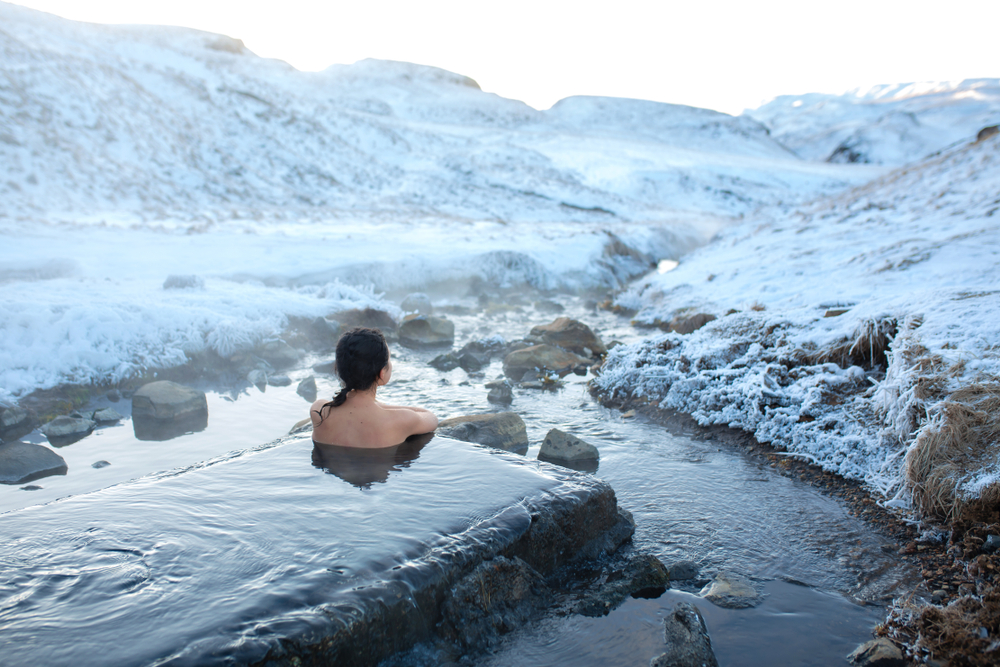
Iceland Events and Activities by Month
While the weather is a big deal, sometimes it is not as important as what you can do. After all, most weather is survivable if you plan and dress accordingly.
If you are more curious about what is going on than what temperature it will be, we have you covered! We have broken down the events and activities you can do during each month of the year.
You might be surprised by some of your options, especially during the winter!
Iceland in January
Can you even go wrong with New Year’s Eve when you are celebrating in a different country? Especially Iceland!
The country takes this holiday seriously with partying on New Year’s Eve, sleeping on the first, and shopping on the second.
And then there is Christmas–that is right, Christmas extends into January in Iceland, with the last day being on the 6th. If Christmas is your favorite holiday, then the end of December and the beginning of January is definitely the best time to visit Iceland.
Another great January tradition in Iceland is Thorrablot . This pagan celebration was canceled when Iceland went Christian but has had a resurgence in the last couple of centuries.
It is a week-long celebration of an Icelandic tradition that will not disappoint. If you want to feel like a local, prepare yourself for some things you have never eaten before, like rotten shark meat, boiled sheep’s head, and congealed sheep’s blood.
Iceland in February
February is beloved for the Winter Lights Festival . As a celebration of bright and happy things, you will love the way they light the streets with brilliant fluorescence to chase the darkness of winter away.
Öskudagur is basically Icelandic Halloween. The kids dress up in great costumes, and instead of the “trick or treat” chant, sing for their candy.
The Icelandic Food and Fun Festival is a fantastic festival that celebrates Icelandic cooking. And not even the kind that uses blood and rotten shark meat! It is all about using ingredients native to Iceland and enjoying all the culinary joys the country has to offer.

Iceland in March
Did you know that Iceland had its own prohibition period? Beer with an alcohol level of over 2.2% was banned for the majority of the 1900s but legalized again in 1990.
Iceland celebrates this legalization with the unofficial holiday, Beer Day, on the first of March every year! We think you can probably guess what the main activities are. (Drinking beer.)
DesignMarch is similar to the Food and Fun Festival in that it is a celebration of Icelandic creativity. The event features purely Icelandic products and goods.
Continuing in a similar fashion, the Reykjavik Folk Festival honors centuries of traditional music and song.
Iceland in April
Iceland celebrates Easter for days just like Christmas. Honestly, we do not know why more countries do not do holidays like this! Celebrating with just one day is so minimal!
Easter lasts from Holy Thursday to Easter Monday in Iceland. It is generally spent with family, rather than with huge parties.
April’s other holiday is the first day of summer. Given the dark of winter and the light of summer, and the very small in-betweens, Iceland actually does not traditionally recognize spring and autumn as seasons. So summer starts in April!

Iceland in May
The Reykjavik Art Festival is a big deal in May! People come from all over the world to participate in and experience creativity and fun.
If art is not your thing, May still might be the best time to visit Iceland with the Rite of Spring Festival. We know, we know, we just told you there is no spring in Iceland.
But when Iceland gave up its traditional calendar, they adopted spring and autumn into their new calendar. And they like to welcome spring with heartfelt jazz and folk music!
Iceland in June
It should come as no surprise that a country that willingly eats rotten shark meat celebrates the sea! Iceland’s Festival of the Sea happens in June, and it honors the country’s long tradition of seafaring.
Iceland also celebrates its independence from Denmark every June 17th. Like the 4th of July in the United States, Iceland National Day is a country-wide affair filled with parades, concerts, and general enjoyment of Icelandic culture.
Summer Solstice takes advantage of the Midnight Sun with all-night rock concerts. You can also join the locals in watching the sun set and rise all within the course of 2-3 hours.
Another unique Iceland festival is the International Viking Festival . It is a days-long holiday event that pays tribute to Iceland’s fierce Viking history.
Iceland in July
Innipukinn Festival is another music festival that happens in July. If you are not already getting the sense that you can hit up a music festival basically anytime you visit Iceland, well, you can. Icelandic people really love their music, okay?
They mix things up a bit with LungA , a festival specific to the Icelandic town of Seyðisfjörður . This festival still has music (as any good festival does) as well as art!

Iceland in August
Verslunarmannahelgi–say that five times fast, we dare you! Honestly, if you can pronounce it once we will be impressed. Verslunarmannahelgi happens the first weekend of August and is a quick bank holiday (kind of like Labor Day in the US). People generally celebrate by going camping.
Gay Pride comes the second weekend of August, and nowhere celebrates it as Reykjavik does! With parades, parties, and concerts, this is truly a vibrant and fantastic event.
If you like running, (like, really like) then the third weekend of August is the best time to visit Iceland! This is when the Reykjavik Marathon occurs, and it is another event that attracts people from all over the world!
The marathon wraps up with Menningarnott , a fantastic cultural celebration with cultural events, fireworks, and you guessed it, great music!
Iceland in September
The capital city of Reykjavik has two festivals in September, making it the best time to visit Reykjavik if you are wanting to have some fun during the shoulder season.
First is the Reykjavik International Literary Festival . This one is not just a big deal to Iceland, it is actually the biggest literary festival in Northern Europe!
Next is the Reykjavik International Film Festival . There is just something about literature and film that make them go hand in hand. Both of these festivals draw people from all over the world, but especially the film festival!
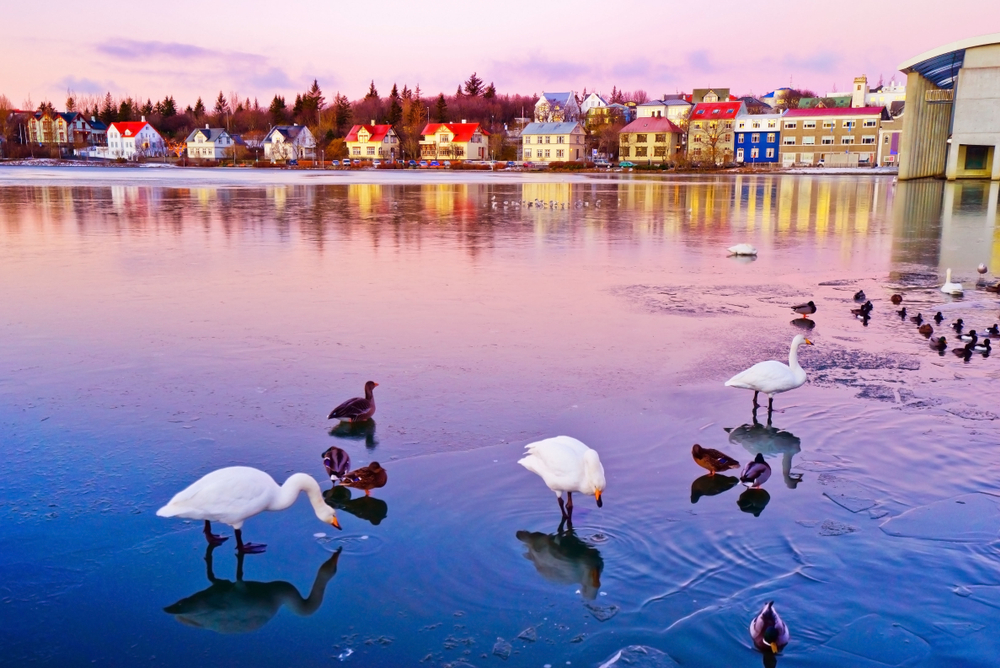
Iceland in October
Iceland Airwaves is another music festival but centers on indie and alternative music rather than the traditional folk and rock music of so many other festivals. Of course, folk and rock music still abound!
Iceland also celebrates Halloween in October, although they have not been celebrating it as long as other countries and do it a little differently. It is more of an adult holiday, but still features costumes!
Iceland in November
November does not have a whole lot going on in the realm of festivals and events. What it does have, though, it makes sure to do well.
Frostbiter is Iceland’s Horror Film Festival. So while Iceland does not have much going on in November, it is still the best time to visit Iceland if you love horror!
Iceland in December
Sorry not sorry, but Iceland has the best Christmas lights. Seriously, you have to check them out! Because the country is so dark all the time in December, they go all out with the Christmas lights.
And the way they make such a contrast against the dark? Unbeatable.
Everything about Iceland Christmas is simply unbeatable. From the concerts to the food to the country’s own unique and fun traditions, you will absolutely love it.
New Year’s Eve is filled with fireworks, bonfires, and singing. There are even costumes!
And they do not wrap things up and go to bed at midnight. Iceland New Year partying lasts long into the early hours of the next day.
December is the best time of year to travel to Iceland if you love all the December holidays!
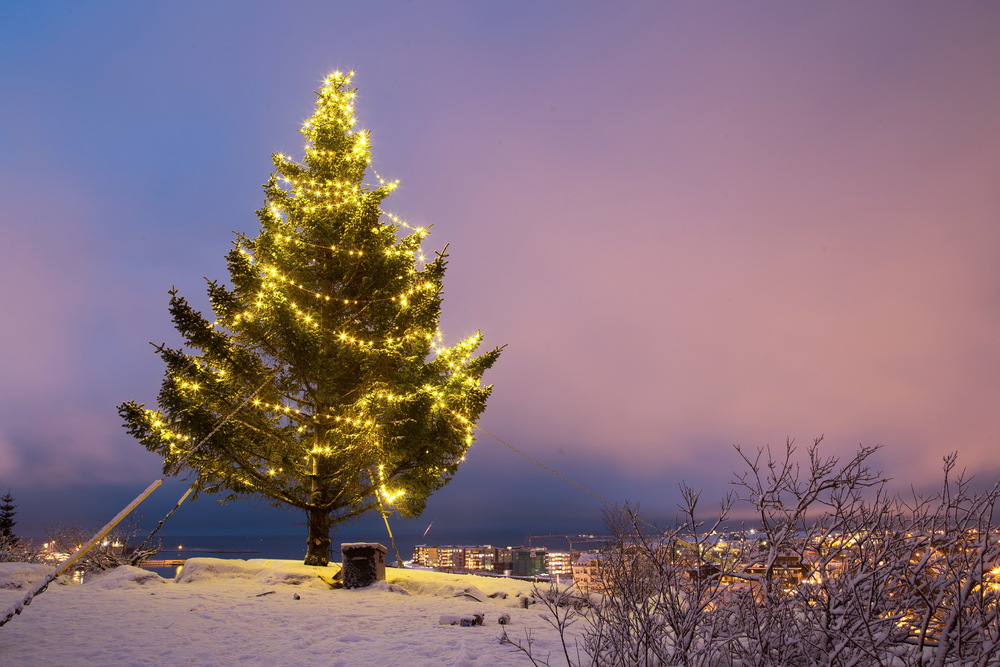
When is the Worst Time to Visit Iceland?
Honestly, there is really no bad time of year to visit Iceland as long as you plan accordingly. After reading this article, you should have a good idea of what each month has to offer in terms of weather, natural events, and festivals.
As long as you visit when you want to and pack according to the season , you will be in Iceland at the right time.
If you want to see the Northern Lights, summer is the worst time to visit Iceland. But, if you want clear roads for your rental car and warm weather, then winter is the worst time to visit.
So, When is the Best Time to Visit Iceland?
At the end of the day, the best time to visit Iceland is 100% up to you! Whatever your interests are and your budget will determine when you should visit this amazing country.
After all, this is your trip to Iceland. Plan it around what you want to see and do.
Do you want the midnight sun and purple, lupine flowers? Come during summer. Hate crowds and overpaying, but want decent weather? Give shoulder season a try. Does your Iceland bucket list involve the Nothern Lights or ice caves? Winter is your best bet!
Iceland is gorgeous year-round, and you really cannot go wrong no matter when you visit!

We hope our guide to the best time to visit Iceland has been helpful! Feel free to let us know when you decide to go in the comments below. What is your favorite time to travel to Iceland?

Reader Interactions
Leave a reply cancel reply.
Your email address will not be published. Required fields are marked *
Save my name, email, and website in this browser for the next time I comment.
When is the best time to visit Iceland in 2024?
Mar 7, 2024 • 5 min read
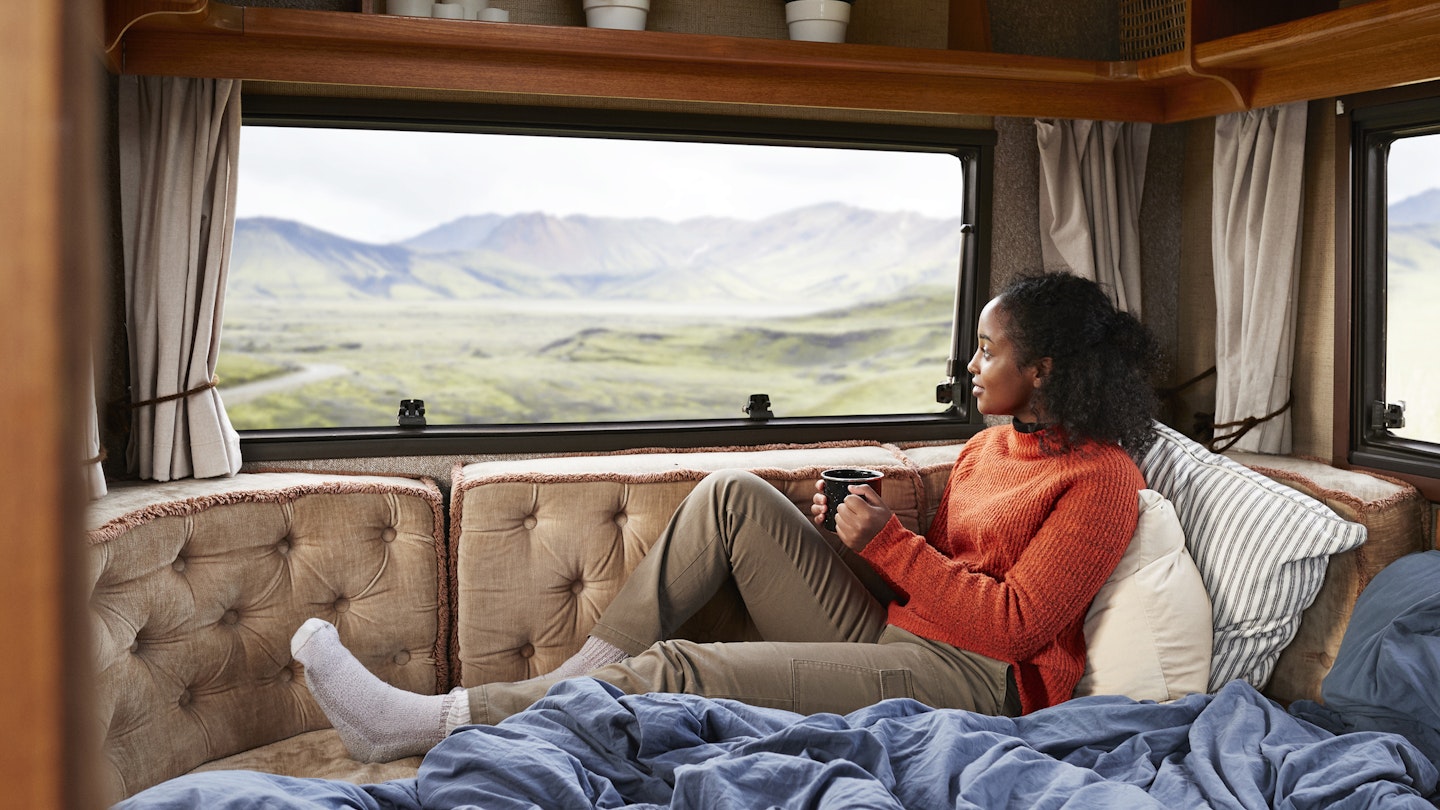
Summer is the best time to take an Iceland road trip © Klaus Vedfelt / Getty Images
There’s no such thing as the perfect time to visit Iceland as the weather is notoriously whimsical and the best season for your trip depends entirely on what you want to experience.
Mid-summer is glorious with eternal daylight courtesy of the midnight sun. This is the time for hiking, camping and exploring the wilderness, and when most services are open. The down side is many destinations will be packed with tourists.
We've got all the information you need about the highs and lows of different seasons. Whenever you choose to visit Iceland, pay attention to forecasts and road conditions and follow any safety advice issued by Icelandic authorities .
December to January is best for seeing the Northern Lights
Christmas lights brighten up the darkness and a festive spirit is in the air as the dark season nears its peak. Frost glitters and snow transforms landscapes into winter wonderlands. Christmas markets are held in Heiðmörk outside Reykjavík, in Hafnarfjörður and on Ingólfstorg square in Reykjavík, which has the added bonus of an ice rink. If conditions are right, the first ski resorts open up.
The sparse daylight means that you have a better chance of seeing the Northern Lights, especially outside populated areas where there is less light pollution (find a Northern Lights forecast here ). Joining tours is advisable. While it is possible to drive yourself, road conditions are often slippery and snowstorms are common.
Festivals worth checking out in winter include Dark Music Days and þorrablót mid-winter feasts, celebrated around the country. For the brave, restaurants often serve special þorri food.

February to March is the best time for snow sports and hot springs
It’s still dark and cold so communities brighten up the darkness with events like the Winter Lights Festival in Reykjavík and List í ljósi festival in Seyðisfjörður in the East. In narrow fjords in the Eastfjords and Westfjords, inhabitants celebrate the return of the sun with sólarkaffi and have pancakes. Snow sports become more enjoyable as daylight gradually returns.
Spring is an abstract concept in Iceland as the weather doesn’t always play along. It can still be cold and snowy, but the days get longer and the sun sometimes shines on skiers – this is often the best time for snow sports. The first of the migrant birds arrive and slowly but surely, nature springs back to life. Around Easter, events like Easter egg hunts are a fun family activity. In Ísafjörður, the Aldrei fór ég suður music festival is held and Ski Week is around the same time.
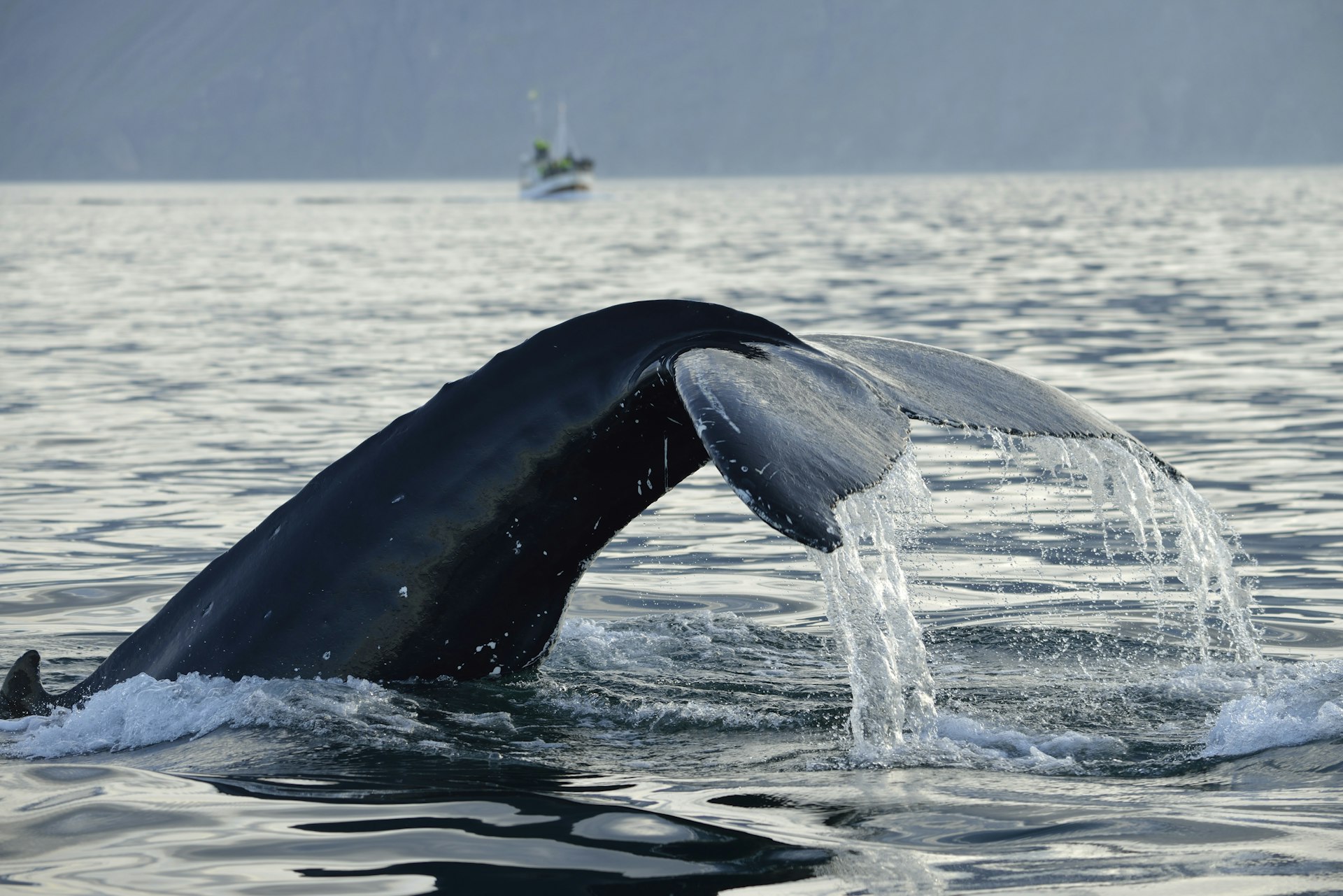
April to May is the best time for off-peak travel
While the weather is still unreliable, temperatures gradually rise. The first flowers blossom and trees bud. Migrant birds arrive in flocks and lambs and foals are born. Migrant whales have also returned and with better weather, whale watching is more enjoyable. The bird-watching season begins, although some areas may be closed due to nesting.
There are relatively few tourists around and if conditions are good, this can be a good time for a road trip . Look out for off-season discounts on accommodation and activities. However, not all tours and services have opened up yet.
The first Thursday after April 18th is the official First Day of Summer in Iceland, which is celebrated with parades and events around the country – even though the weather rarely plays along.
June to August is the best time for outdoor recreation
While there’s no good weather guarantee, this is your best chance of sun and warmish temperatures. Late June to early August is when most Icelanders go on vacation, filling up campgrounds wherever the best weather is forecast. This is the height of the tourist season – and height of the whale-watching season – so whatever you have planned, it’s best to book ahead.
Expect crowds at the most popular destinations, like on the South Coast and the Golden Circle . But as it’s bright all night, you can beat the crowds by traveling either super early or late. In July, Highland roads open up, but you'll need to book a tour or hire a 4WD vehicle equipped for F-roads and crossing rivers (if that’s your plan). Summer is the best season for hiking, biking and horseback riding. Around mid-August, wild berries ripen.
Summer is also festival season. Fishermen’s Day is a national celebration held in every seaside town on the first weekend of June. Around June 21, summer solstice is celebrated on Grímsey island, Iceland’s northernmost inhabited island. The Reykjavík Arts Festival is held every other year – the next one is on in June this year (2024).
Bræðslan music festival is held in Borgarfjörður eystri on the last weekend of July. Verslunarmannahelgi is a weekend in August that is packed with festivals and events, and Reykjavík Pride has various events held throughout the city, culminating in the Pride Parade.
Reykjavík Culture Night and the Reykjavík Marathon are held on the third weekend of August.
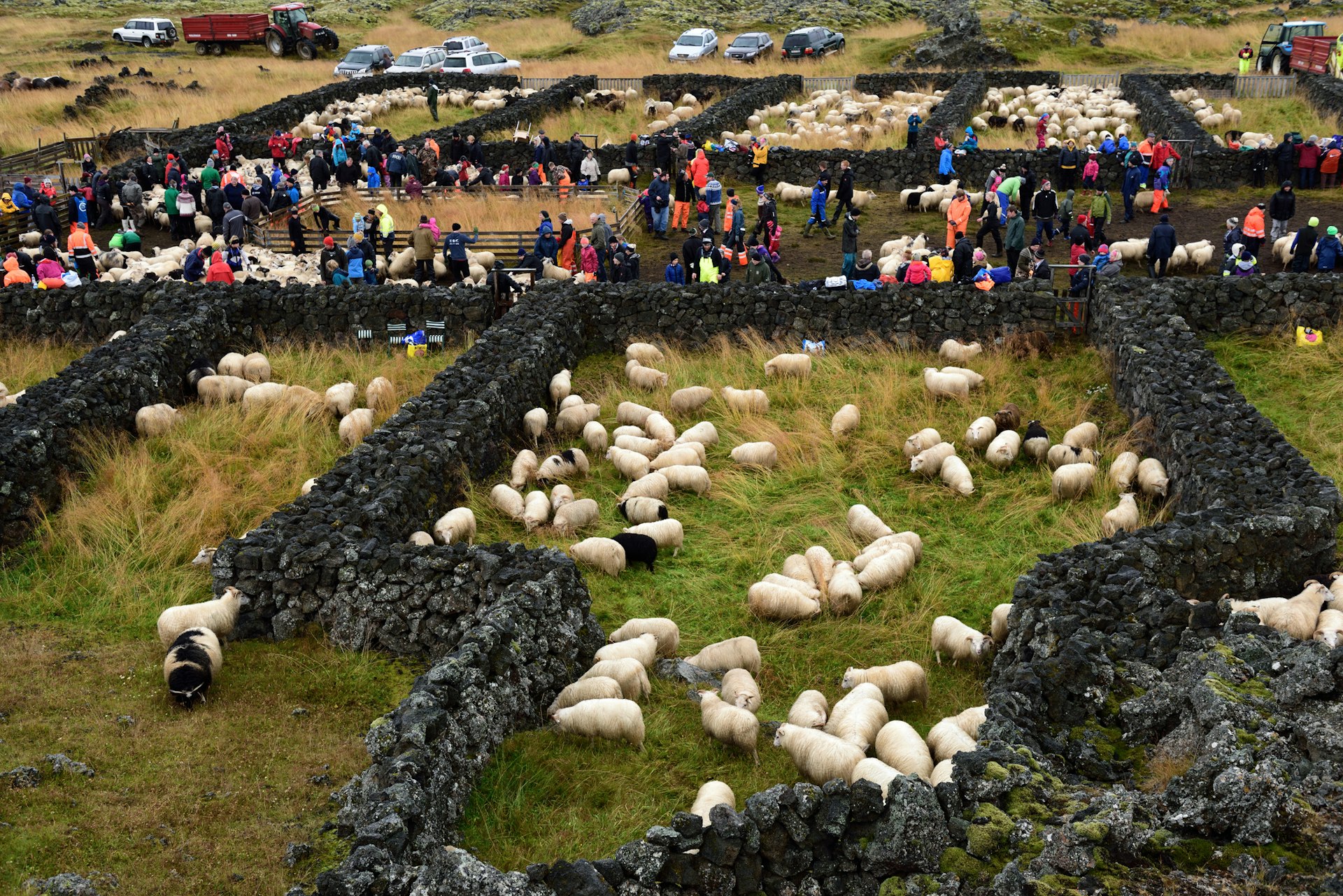
September to November is best for cultural events
Nights grow colder and camping is no longer advisable as fall rolls into winter. The weather is often good, though, so hiking can still be enjoyable. Pay attention to weather forecasts and bring warm clothing. Nature starts to change colors, painting forests and heather yellow, orange and red. Þingvellir National Park is at its most beautiful.
Road tripping is still possible and there will be fewer travelers around. However, winter is around the corner, so roads get slippery as soon as the temperatures drop and conditions can get stormy.
Réttir sheep and horse roundups are held in the countryside, and the Reykjavík International Film Festival takes place in the capital. In East Iceland, the Days of Darkness festival is held around Halloween and the Iceland Airwaves music festival is held in Reykjavík. Advent is approaching and Christmas preparations begin. This is a great time for visiting galleries and museums, going to concerts, relaxing in heated swimming pools, and feasting on good food.
This article was first published Feb 18, 2021 and updated Mar 7, 2024.
Explore related stories
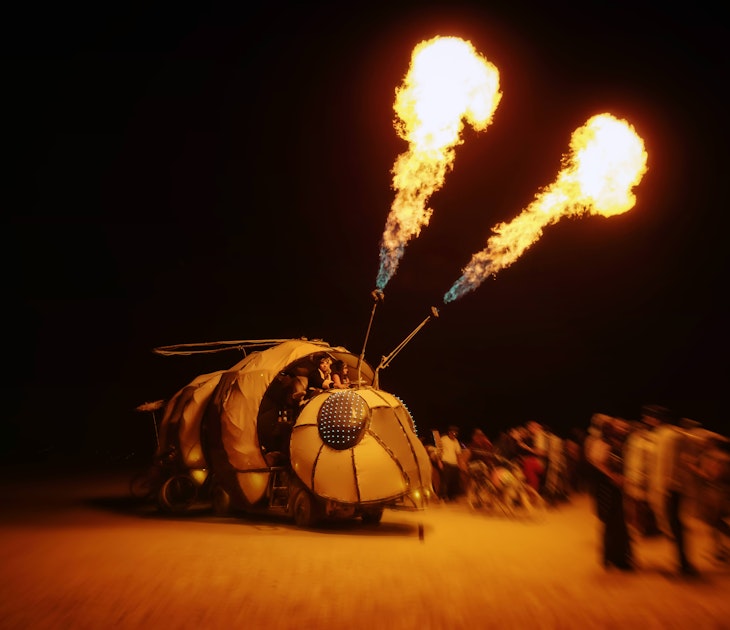
Jan 2, 2023 • 12 min read
Want to start planning for the year ahead? Featuring sports events, natural phenomena and more, these are 20 amazing trips to consider taking in 2023.
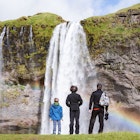
Apr 6, 2024 • 3 min read
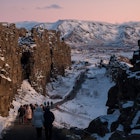
Mar 31, 2024 • 12 min read
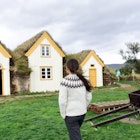
Mar 31, 2024 • 6 min read

Mar 30, 2024 • 4 min read

Mar 28, 2024 • 17 min read
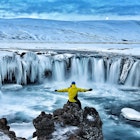
Mar 12, 2024 • 8 min read

Mar 6, 2024 • 9 min read

Mar 4, 2024 • 10 min read

Feb 19, 2024 • 7 min read
- Search Please fill out this field.
- Manage Your Subscription
- Give a Gift Subscription
- Newsletters
- Sweepstakes
- Destinations
These Are the Best Times to Visit Iceland
Here are the best times to visit Iceland for ideal weather, fewer crowds, and more.
:max_bytes(150000):strip_icc():format(webp)/Brandon-Presser-97a4675f1bb3487b88f06e5e2234eac6.jpeg)
Elizabeth Rhodes is a special projects editor at Travel + Leisure , covering everything from luxury hotels to theme parks to must-pack travel products. Originally from South Carolina, Elizabeth moved to New York City from London, where she started her career as a travel blogger and writer.
:max_bytes(150000):strip_icc():format(webp)/elizabeth-rhodes-25083778bc654f69b30ce8417affc82c.jpg)
Over the last decade, Iceland has become one of Europe's "it" destinations thanks to its ethereal — and highly photogenic — landscapes featuring ancient glaciers and rugged fjords.
Before you book your flight to this popular island nation, you'll want to think about everything you want to see and do on your trip because the time of year can determine what's available. Some attractions, like Iceland's famous hot springs , are open all year, while natural phenomena like the northern lights and midnight sun are best viewed during specific months. Here's a breakdown of the tourist seasons in Iceland:
- High Seasons: June to August and late December
- Shoulder Seasons: September to October and May
- Low Season: November to April, excluding holidays
Read on to learn about the best time to visit Iceland for whale watching, northern lights spotting, and more.
Irjaliina Paavonpera/Travel + Leisure
Best Times to Visit Iceland for Smaller Crowds
The busiest months in Iceland are June, July, and August, when most natural attractions are open and easily accessible. Iceland can stay relatively warm through the first week of October, so planning a September visit can be ideal since most crowds have thinned as children return to school. May, too, provides ample daylight for sightseeing, warmer temperatures, and fewer crowds.
The off-season between November and April is ideal for those looking to escape the hordes of tourists, as long as you don't mind the dark (by mid-winter, expect only five or six hours of daylight). Though some roads are closed, it's a glorious time to enjoy hot springs, backcountry skiing, and tours by snowmobile or jeep. You'll also have a better chance of spotting the northern lights. Tourism tends to pick up again during the holiday season, so avoid December if you're looking for a crowd-free vacation.
Courtesy of Visit Iceland
Best Times to Visit Iceland for Good Weather
During the summer months — July and August — the temperature in Iceland hovers around 50 to 55 degrees Fahrenheit, making it a popular time to visit. And June, with its 24 hours of daylight, sees just about as many tourists as the peak of summer. But even during this season, rain and intense wind are not uncommon. The island's fickle climate often means you can experience all four seasons in a single day.
The weather remains pleasant in September, with temperatures between 43 and 52 degrees Fahrenheit. May is similar, but if you're keen on exploring some of the more remote hills and fjords, it might not be the best time to visit, as some roads remain closed while they thaw from winter's snowy cover. For serious hikers, the best time to visit Iceland is during the summer, when all the mountain roads and famous trails are open and accessible.
Best Times to Visit Iceland for Lower Prices
Getting to Iceland can be relatively affordable, especially compared to other European destinations. Travelers from the United States and Europe frequently find flight deals — keep an eye out for sales on Icelandair and low-cost airline Play to save even more on your journey.
Accommodations, tours, attractions, and meals can be pretty pricey throughout the year, but you might be able to save money by visiting during the off-season, which is typically late fall through early spring, excluding December. Summer is usually the most crowded and expensive time to visit.
Best Time to Visit Iceland for the Northern Lights
You'll need three essential factors to see the aurora borealis: darkness, clear conditions, and a surge in solar activity. The northern lights are often elusive and can easily be marred by transient clouds. To avoid disappointment, travelers should never plan their trip to Iceland solely for the northern lights because the island's weather is too capricious (statistically, there are more clear nights in Yellowknife, Canada , for example.) The best way to optimize your chances of seeing the northern lights in Iceland is by visiting from mid-October through March, when you have extended hours of darkness, and by getting out into the countryside to reduce ambient light pollution.
Best Time to Visit Iceland for Whale Watching
According to Icelandic marine biologist Edda Elísabet Magnúsdóttir, the peak months to go whale watching in Iceland are June and July. During the summer, Reykjavík sees higher numbers of minke whales and dolphins, while orcas congregate in West Iceland along the Snaefellsnes peninsula during the first half of the year.
In northern Iceland, you'll have a wider window to enjoy visits from humpbacks, minkes, and dolphins, which ply the Atlantic from May to August; a few humpbacks even stick around until the end of the year. Blue whales pass through in the summer, too. For best results, head to the charming small town of Húsavík , where you can spot more than 20 species of whales on boat tours that leave from the harbor.
Best Time to Visit Iceland's Hot Springs
Hot springs are intrinsic to Icelandic culture for social as well as wellness benefits. Reykjavík's public pools are open year-round (and are especially invigorating during the dead of winter), but Iceland also has hundreds of hidden "hot pots" that tap directly into the geothermal activity under its lava-ridden surface.
Expert Icelandic mountaineer and cofounder of Midgard Adventure , Sigurdur Bjarni Sveinsson, offers the following advice for hot water hunters: "Check them out during September or, even better, the first half of October, when they're all still accessible by mountain road, but the crowds of tourists have significantly died down."
For travelers who want to visit the Blue Lagoon , the most famous geothermal spa, the best time to visit is during the off and shoulder seasons, when crowds are thinner.
Worst Time to Visit Iceland
Thanks to Iceland's stunning landscapes and seasonal natural phenomena, there's really no bad time to visit. Northern lights seekers flock to the country during the darker winter months, while visitors chasing more daylight opt for summer. Of course, those traveling in the spring and fall can take advantage of more moderate weather and daylight, so the best time to visit Iceland depends on what you want to see and do during your trip.
That said, the warmest months of the year are easily the worst time to visit if you're hoping to avoid the onslaught of tourists. July and August see the highest number of travelers, with big-ticket attractions like the Blue Lagoon, Golden Circle, South Coast, and Jökulsárlón being particularly overrun. If you're planning to visit during that time, consider exploring more remote corners of the island like the Westfjords or East Iceland, which have their own cache of fjords, vistas, and waterfalls that are just as impressive as the natural attractions surrounding the capital — if not more.
Related Articles
Weather & Climate
Top Places to Visit in Iceland
Keflavik International Airport Guide
Driving in Iceland
Tipping in Iceland
Staying Safe in Iceland
Helpful Words and Phrases
Best Tours in Iceland
Top Northern Lights Tours
Seven-Day Iceland Itinerary
48 Hours in Reykjavik
Day Trips From Reykjavik
Top Things to Do in Iceland
Best Beaches in Iceland
Hiking in Iceland
How to See the Northern Lights
Best Icelandic Hot Springs
Skiing in Iceland
Top Things to Do in Reykjavik
Free Things to Do in Reykjavik
Reykjavik's Best Museums
Shopping in Reykjavik
Guide to the Blue Lagoon
Food to Try in Iceland
Best Restaurants in Reykjavik
Top Reykjavik Bars
Craft Beer in Iceland
Best Time to Visit
The Best Time to Visit Iceland
While there are many unique travel opportunities , various adventures, and great events year-round in Iceland, the best time to visit Iceland is in June when the weather starts to warm up and the country experiences 24 hours of sunlight.
However, if you're planning your first trip to Iceland , the best time of year to explore this Nordic island nation really depends on what you're looking for—whether you prefer warmer weather and outdoor events or you don't mind a little bit of cold for a great nightlife scene. When it comes to deciding what time is right for your trip, you should consider when to expect the biggest and smallest crowds, warmest or coldest weather, and highest or lowest costs for airfare and accommodations.
Peak Season in Iceland
Undoubtedly, July through the early August is the busiest time of year for Iceland's tourism industry, but crowd sizes and travel prices start going up in May and June and don't really start going down until September. If you're looking to avoid lots of tourists and to save money on your trip while still being able to access popular attractions, you might consider visiting in the shoulder season, which happens from early April to mid-June and mid-September to early November each year.
The dead of winter, which runs from early December through mid-March, is the official off-season for Iceland, but a boom in year-round tourism since 2008 has resulted in prices for airfare and accommodations stabilizing over the years as more travelers have discovered the joys of this Nordic country's coldest season. However, you can still find great prices on last-minute airfare and even some special travel deals from the United States this time of year.
Weather in Iceland
Don't let the name Iceland fool you: The winters here aren't particularly bad; temperatures average 32 degrees Fahrenheit in the lowlands and 14 degrees Fahrenheit in the highlands for most of the season. However, temperatures can dip down to 22 degrees below zero in the northern part of the country, so you'll want to avoid that area if you visit during the winter. June is the country's driest month of the year, while July is the warmest month of summer, with an average temperature of a pleasant 60 degrees Fahrenheit, and the weather in Iceland usually stays mild until late August.
When to See Natural Phenomena in Iceland
Known as a country of mystical landscapes and breathtaking vistas, one of the main reasons people visit Iceland is to enjoy its natural phenomena, including the Aurora Borealis (Northern Lights), the Midnight Sun, and the Polar Nights.
While nearby Norway may be home to the best places to see the Northern Lights , there are plenty of great spots in northern Iceland to catch a glimpse if you visit from mid-October through March, a period known as the Polar Nights when the country experiences up to 19 hours of darkness a day. However, if you're a creature of the sun, you may prefer to travel in the summer instead when the Midnight Sun results in over 20 hours of daylight from June through August.
While some attractions might not yet be open in March or April, which is the best time to see the snow giving way to lush greenery and wildlife, you're sure to find plenty worthy of exploring. Spring is particularly great for visiting unique destinations like the many remote hot springs spread across the country as their access roads are buried under snow all winter.
Events to Check Out
- Puffins arrive on the island each year in April.
- National Beer Day is held each year on March 1, celebrating the end of Iceland's prohibition. There are several craft beers now available. Pubs and restaurants throughout the country celebrate.
Summer in Iceland is one of the best times to visit because the weather is pleasant and the sun barely sets. If you'd prefer longer days to explore the outdoors and hike the defrosted fjords, you'll love that there are about 20 hours of daylight (on average) each month of this season. Along with seasonal events—including outdoor concerts and festivals celebrating art, culture, and music—Iceland provides ample opportunity during the summer to explore the highlands and thawed fjords, swim in crystal-clear mountain lakes, and hike around the gorgeous island landscape.
The drawback to summer, though, is that prices are generally higher across the board—on food, accommodations, attractions, rentals, and airfare. Additionally, lines are longer, hotels fill up, and restaurants run out of room on their reservation lists as tourists flock to the most popular spots during the long daylight hours of Iceland's summer.
- The Viking Festival takes place in June in Hafnarfjörður. It's the oldest festival of its kind in the country.
- June 17 is Icelandic National Day, a celebration of the young country's independence.
If you visit in September through mid-October, you'll have an even better opportunity to enjoy the hot springs since there will be fewer crowds and you won't have to rely on snow melting to access these remote destinations. Additionally, some of the best opportunities to see the Northern Lights are on clear autumn nights in late October through early December, before winter weather settles in and blocks the view with thick clouds.
- The annual Iceland Airwaves music festival takes place in Reykjavik in November and showcases new music from around the world.
- One of Iceland's oldest traditions is réttir, an annual island-wide sheep round-up that take place during September.
Summer has the benefit of long days but come winter, daylight shrinks to about five hours in a period called the Polar Nights . If you can endure little sunlight, the question of when to visit Iceland suddenly becomes much harder because Iceland also has many bolder things to offer in winter: never-ending nightlife in Reykjavik , infinite chances to view the Northern Lights , and plenty of outdoor snow activities such as skiing, snowboarding, and snowmobiling.
The colder part of the year is also when flight prices to Iceland fall drastically and local hotels suddenly cut prices by more than half. Budget travelers wondering when to go to Iceland should aim for February or March because those months have more daylight than the earlier winter months but still the smallest crowds and the lowest prices.
- Winter means Christmas markets, which are abundant throughout Iceland. One of the best is Heiðmörk Christmas Market, about a 20-minute drive from Reykjavík.
The best time to visit Iceland depends on what you're looking for, but June is one of the best months for visiting. It's before the peak tourist season begins and the midnight sun phenomenon is incredible to experience.
The off-season is the cold winter months, especially from November to April. Prices go up in the weeks around the holidays, but outside of those dates it's the cheapest time to visit Iceland.
The peak season in Iceland is July and August when the days are at their warmest. Prices start going up in May and June, but you'll still find cheaper rates than you will in the late summer.
Guide to Iceland. "Weather in Iceland & Best Time To Visit." Retrieved February 10, 2021.
Weather in Iceland: Climate, Seasons, and Average Monthly Temperature
The Best Time to Cruise Alaska
The Best Free Things in Reykjavik, Iceland
The Best Time to Visit the Bahamas
Scandinavia and the Nordic Region: Planning Your Trip
Your Trip to Iceland: The Complete Guide
The 10 Best Things to Do in Iceland During the Winter
The Best Time to Visit the Dominican Republic
The Best Time to Visit Spain
The Best Time to Visit Morocco
The Arctic Circle
New Year's Eve in Reykjavik, Iceland
The Best Time to Visit Boston
The Best Time to Visit Naples, Italy
The Best Time to Visit Japan
The Top 22 Things to Do in Iceland
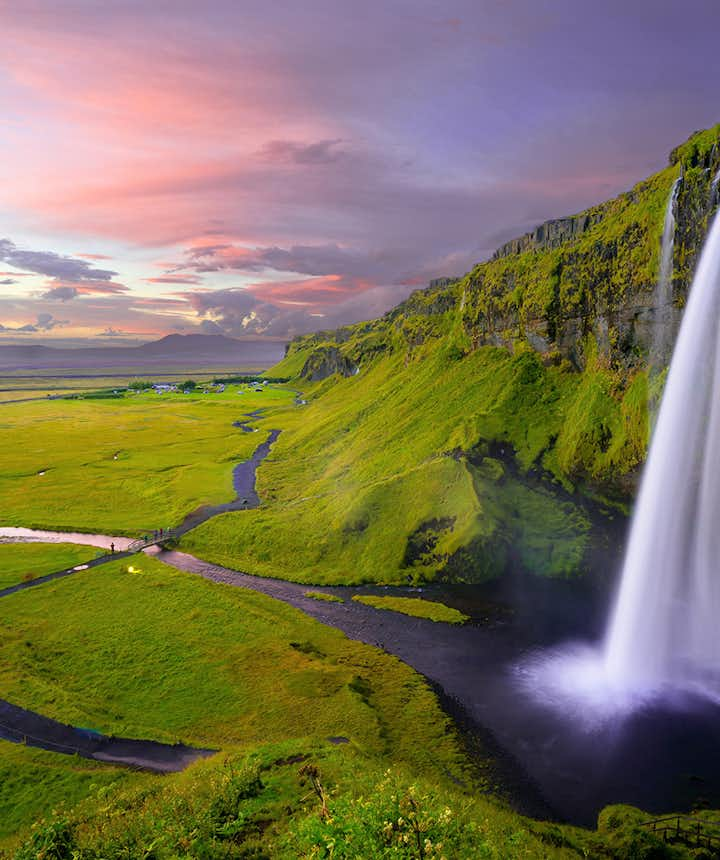
When Is the Best Time to Visit Iceland? - A Comprehensive Guide for Every Month & Season

What Is the Best Time of Year to Visit Iceland?
Iceland in spring, iceland in summer, iceland in fall, iceland in winter, when to visit iceland for seasonal activities, best time to see the northern lights in iceland, best time to see the midnight sun in iceland, best time to go whale watching in iceland, best time to go ice caving in iceland, best time to take a road trip in iceland, best time to visit the blue lagoon, best time to go camping in iceland, best time to visit hot springs in iceland, best time to go river rafting in iceland, best time to go birdwatching in iceland, the travel seasons in iceland, peak season in iceland, shoulder season in iceland, low season in iceland, weather & daylight hours in iceland, spring weather & daylight hours in iceland, summer weather & daylight hours in iceland, autumn weather & daylight hours in iceland, winter weather & daylight hours in iceland, the best month to visit iceland, iceland in january, iceland in february, iceland in march, iceland in april, iceland in may, iceland in june, iceland in july, iceland in august, iceland in september, iceland in october, iceland in november, iceland in december, faqs about the best time to go to iceland, can i visit iceland in winter, are the northern lights visible during the summer in iceland, is it possible to visit the golden circle year-round, what should i wear when visiting iceland in winter, what should i wear when visiting iceland in summer, can i rent a car and drive in iceland any time of the year.

By understanding how each season offers distinct experiences, you'll be better equipped to plan your ideal Icelandic adventure that's tailored to your preferences and priorities. As Iceland is located in the far northern hemisphere, right at the edge of the Arctic Circle , the differences between seasons are quite dramatic.
The best time of year to visit Iceland, therefore, depends on what you most want to do. Whether you're looking to go whale watching , head to a glacier to explore an ice cave or visit the Westfjords , the time of year is key when it comes to planning your trip.
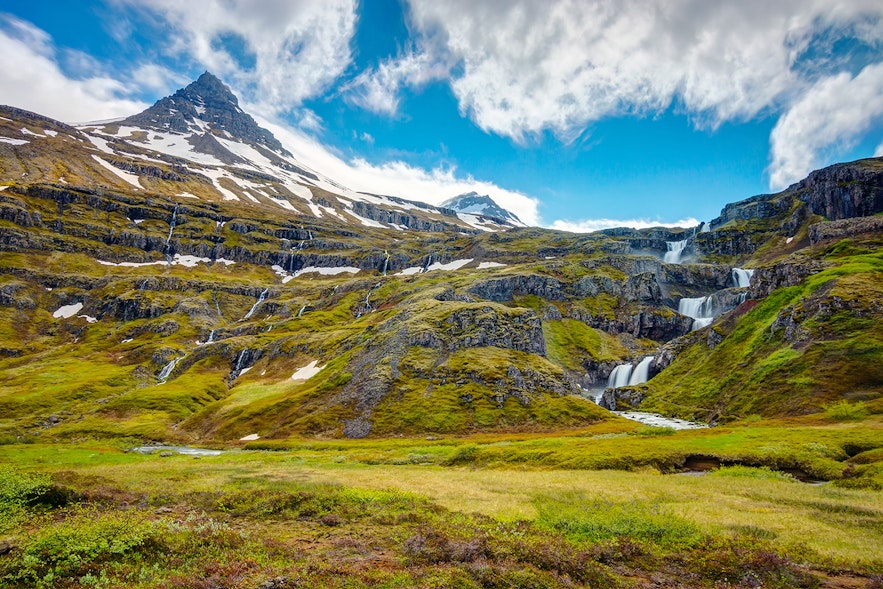
When wondering about the best time to travel to Iceland, first, you need to make a decision on what season works best for you. Iceland's four seasons differ in not only the weather but also the number of daylight hours. Each season has its characteristics and different things to do that may not be available in other seasons.

Additionally, spring is an ideal time for birdwatching enthusiasts, as migratory birds, including the charming puffin, return to nest along the rugged cliffs. It's also the last chance to see the northern lights before it gets too bright. Overall, spring provides a serene and picturesque setting for exploring Iceland.
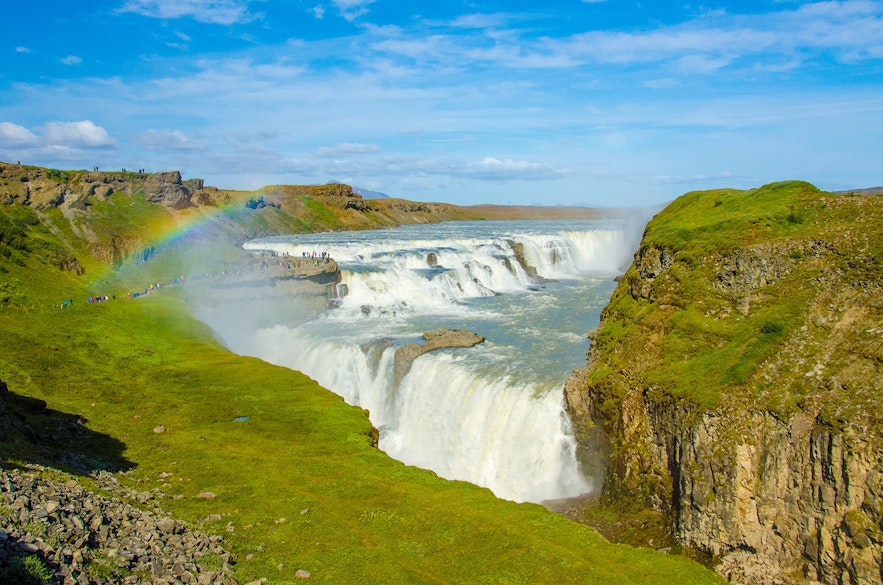
The warmer temperatures also make it a perfect season for outdoor activities such as horseback riding and going on hiking tours . Summer is the peak season for the number of travelers, so expect more crowds at popular attractions. However, the opportunity to go on tours of the Highlands and indulge in various festivals celebrating Iceland's culture and history makes it a truly memorable time to visit.
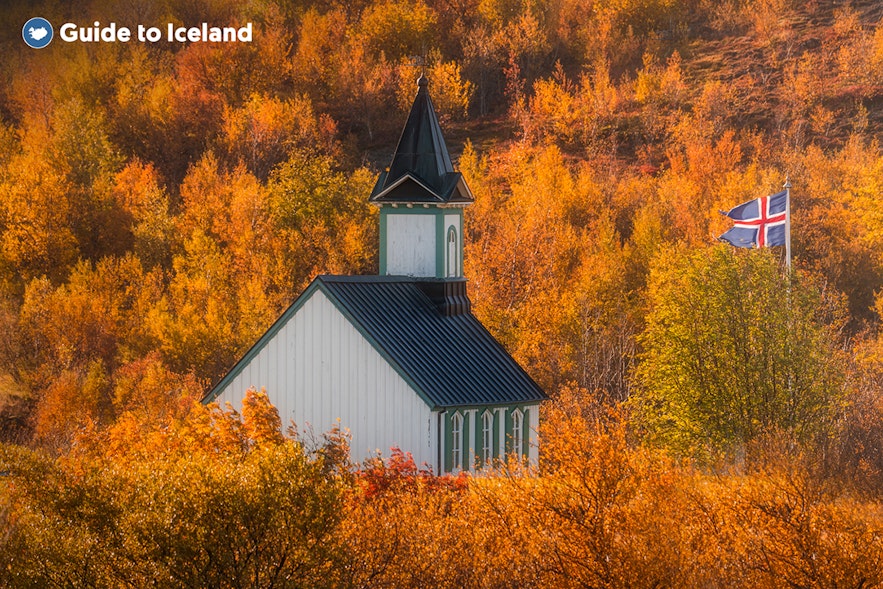
With cooler temperatures setting in, visitors can still enjoy outdoor pursuits such as hiking and exploring geothermal hot springs without the summer crowds. Fall also brings the return of darker skies, so the chance of seeing the elusive aurora borealis returns. Visiting Iceland in the fall promises a unique blend of natural beauty, space to roam, and opportunities for unforgettable experiences.
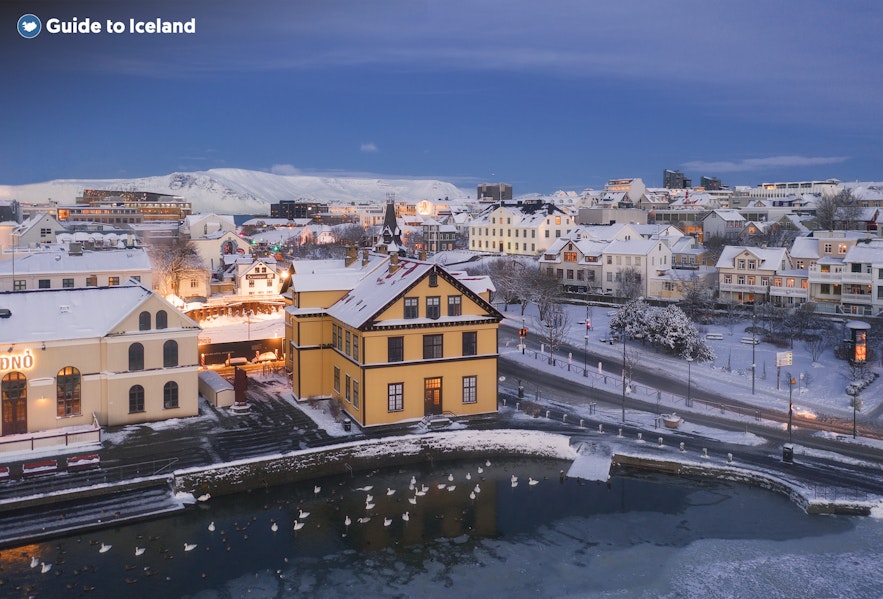
The long nights provide ample opportunity to chase the magical northern lights or even go on a northern lights cruise , while the festive atmosphere in towns around the country allows visitors to enjoy the local Christmas celebrations and the bombastic New Year's Eve. Although the weather can be unpredictable, visiting Iceland in winter offers a unique experience that highlights the country's enchanting allure.
- Learn more: New Year's Eve in Iceland
Because of the wide range of different activities and things to do in Iceland, it can be helpful to break down what activities are possible dependent on the time of year. Of course, there are plenty of things you can do any time of year, such as engaging in delicious food tours in the city or exploring the many waterfalls around the country (just wear layers in the winter!), but below are a few of the seasonal-dependent activities that might make or break when you'd want to visit Iceland.
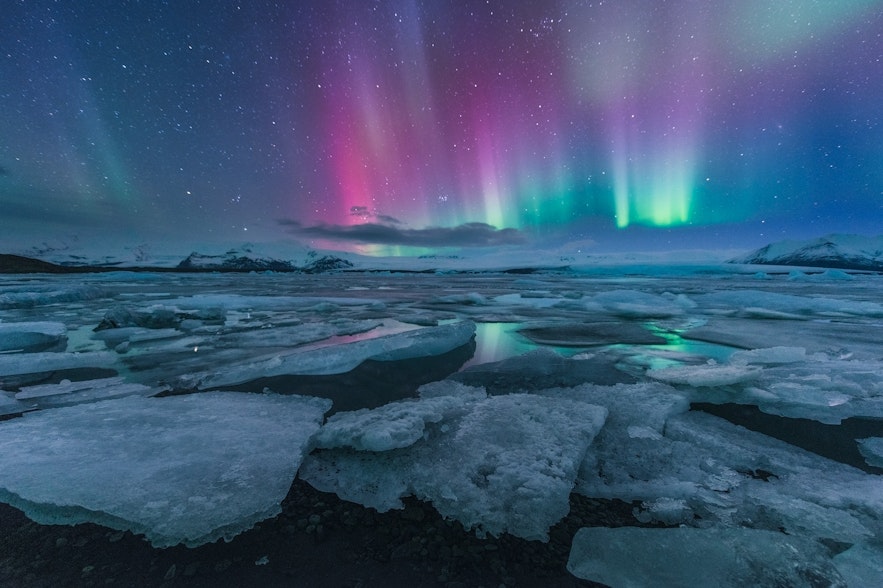
Keep in mind that while this mesmerizing phenomenon is largely dependent on solar activity and clear skies, it is also important to venture away from city lights to areas with less light pollution for the best viewing experience. Then cross your fingers and enjoy the show!
Top Northern Lights Tours & Holidays
2 day ice cave tour with south coast waterfalls & jokulsarlon glacier lagoon, 3-day northern lights tour of iceland’s golden circle & south coast with ice caving & glacier hiking, 8-day guided northern lights winter tour of the complete ring road of iceland.
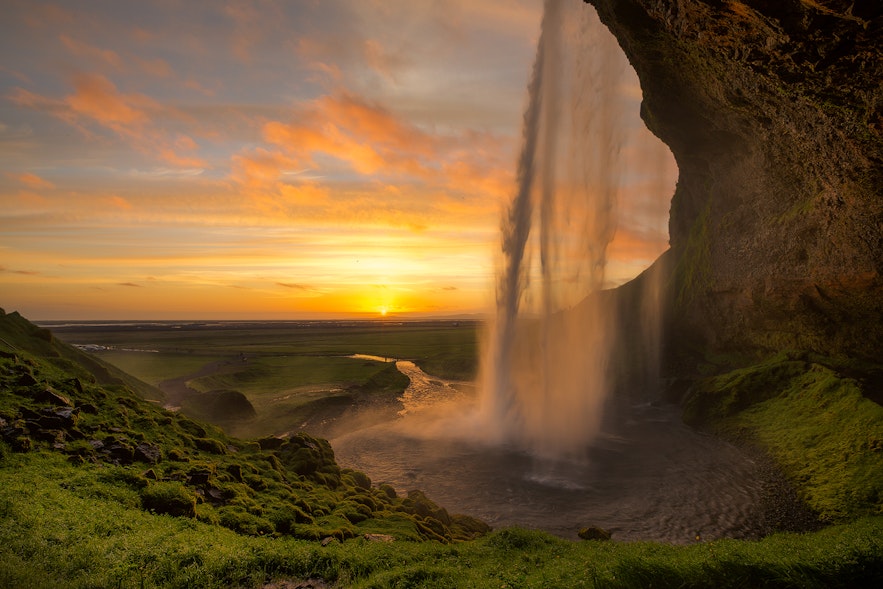
During this time, the sun barely dips below the horizon, and daylight extends into the night as the sky turns pink and purple during a long-lasting twilight period. This provides plenty of opportunities for late-night sightseeing, photography, and exciting midnight sun tours .
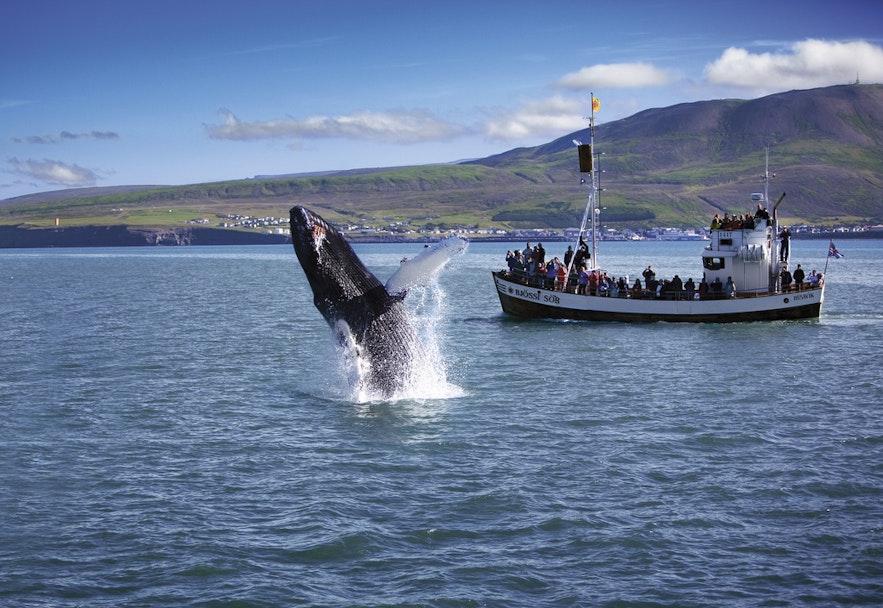
Photo from Original 3-Hour Whale Watching Adventure in Oak Boats
The best time to go whale watching in Iceland typically falls between April and October, with peak season occurring in the summer months of June, July, and August. During this period, the seas around Iceland become a feeding ground for multiple species of whales, resulting in a higher probability of sightings. Minke whales, humpback whales, and white-beaked dolphins are commonly sighted during these months.
However, orcas and dolphins are most commonly spotted during the winter months, specifically from February to March, when Breidafjordur bay becomes a feeding ground full of herring, which can be spotted on this Snaefellsnes whale-watching tour . You can also keep in mind that whale-watching tours are less crowded during the winter, which is another advantage.
- Learn more: The Best Guide to Whale Watching in Iceland
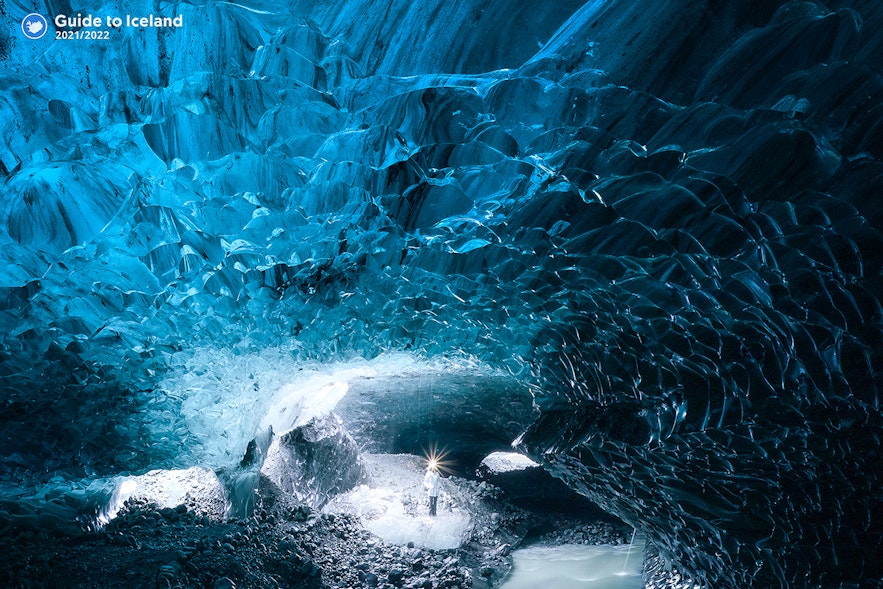
Photo from Best Ice Cave Tour in Vatnajokull Glacier
The optimal time for ice caving in Iceland is during the colder months, typically from November to March. During this period, the temperatures drop sufficiently to freeze the glacial ice caves, making them safe and stable to explore. That's when they're at their most spectacular, with the clear blue ice illuminated by the refracturing sunlight. It's important to note that ice caving should always be undertaken with a guide on professional ice cave tours .
During the summer, most ice caves become too unstable to be visited safely, with two exceptions! You can still visit the ice cave at Katla , near the town of Vik on Iceland's south coast. Additionally, you can visit the ice cave tunnel in Langjokull , which was carved into the glacier itself.
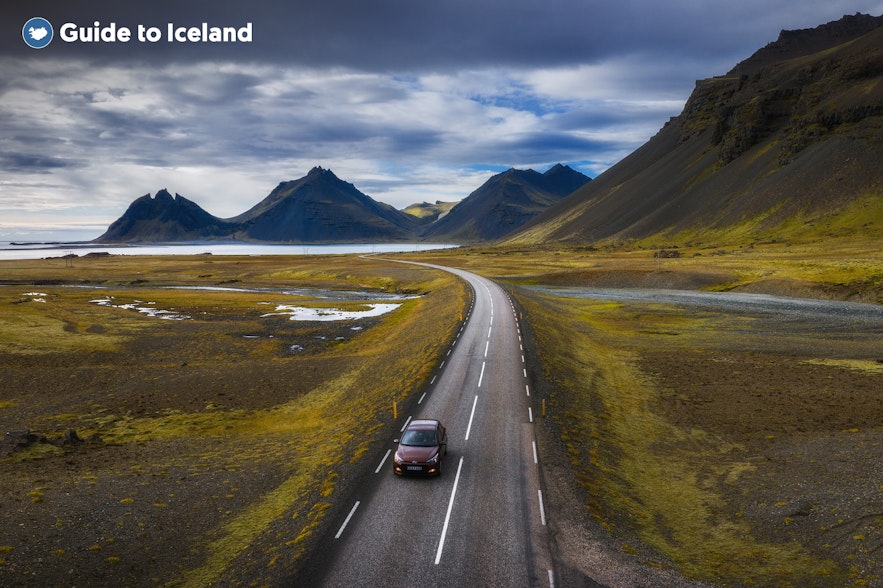
However, if viewing the northern lights is on your bucket list, consider a road trip between September and March when they are visible after sunset. Be mindful that winter driving can be challenging due to unpredictable weather and shorter days, and renting a 4x4 car is crucial to stay safe. Check out the many winter self-drive tours available, which are fully customized with extensive itineraries and pre-booked accommodations around the country.
Top Self Drive Tours in Iceland
10-day self-drive tour of the complete ring road of iceland with top attractions & snaefellsnes, best 1-week summer self-drive tour of the ring road of iceland & golden circle, best 7-day northern lights self drive tour through south iceland to jokulsarlon ice cave.
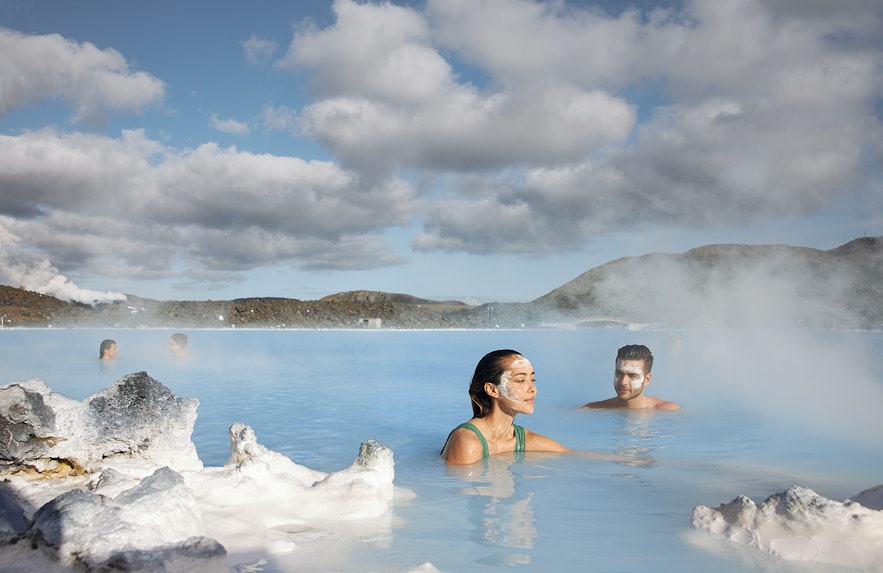
However, for those seeking to view the northern lights while relaxing in the warm waters, the best time to visit is during the winter months (September to March), although keep in mind that daylight is significantly shorter during this time. Regardless of the season, this warm lagoon often gets busy, so it's advisable to book your tickets to the Blue Lagoon well in advance and try to go early in the morning or later in the evening when it's less crowded. There's also a wide variety of Blue Lagoon tours that incorporate other activities with a visit to the famous geothermal spa.
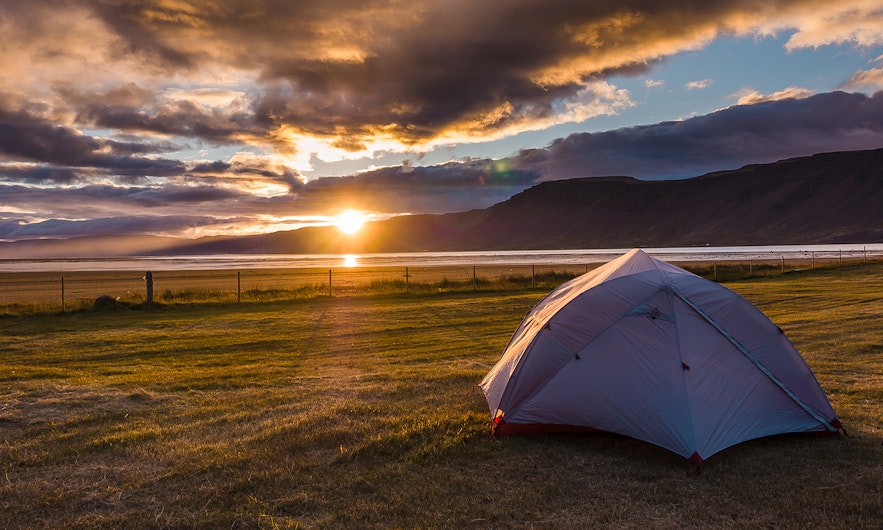
While camping in other seasons is possible, winter camping can be particularly challenging due to harsh weather conditions, limited daylight, and the closure of many campsites. Keep in mind that no matter the season, camping outside of designated camping sites is illegal, including parking rental campervans overnight.

Photo from Admission to Hvammsvik Hot Springs near Reykjavik
Hot springs in Iceland can be enjoyed throughout the year, each season offering its unique charm. During the summer months, from June to August, the milder weather and extended daylight hours allow for more flexible planning. Visiting during the midnight sun can add an extra layer of enchantment to your hot springs experience.
However, many people find the contrast of Iceland's chilly winter temperatures and the warm geothermal waters irresistible. There's also a chance to see the northern lights while you soak, creating a truly unique experience. Just remember that access to some remote hot springs can be more difficult in winter due to harsh conditions, so make sure to always check road conditions and weather before heading out.
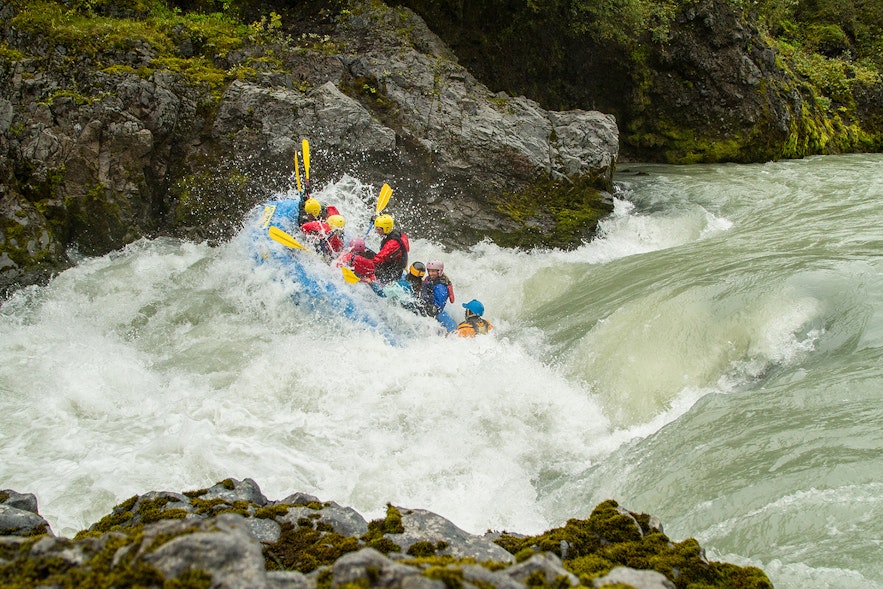
Photo from Whitewater Action in North Iceland
The ideal time for river rafting in Iceland typically falls within the summer months, from June to early September. That's when the weather is warmer and the snowmelt from the mountains feeds the rivers, creating thrilling white-water conditions ideal for rafting. If you're traveling with children, you could even embark on this 3-hour family-friendly river rafting tour in North Iceland .
Although the summer months are best, the season can start as early as May and extend into September, depending on weather conditions.
Top Rafting Tours
Family-friendly 3 hour whitewater river rafting tour in north iceland, whitewater action in north iceland, river rafting tour in north-iceland | west glacial river.
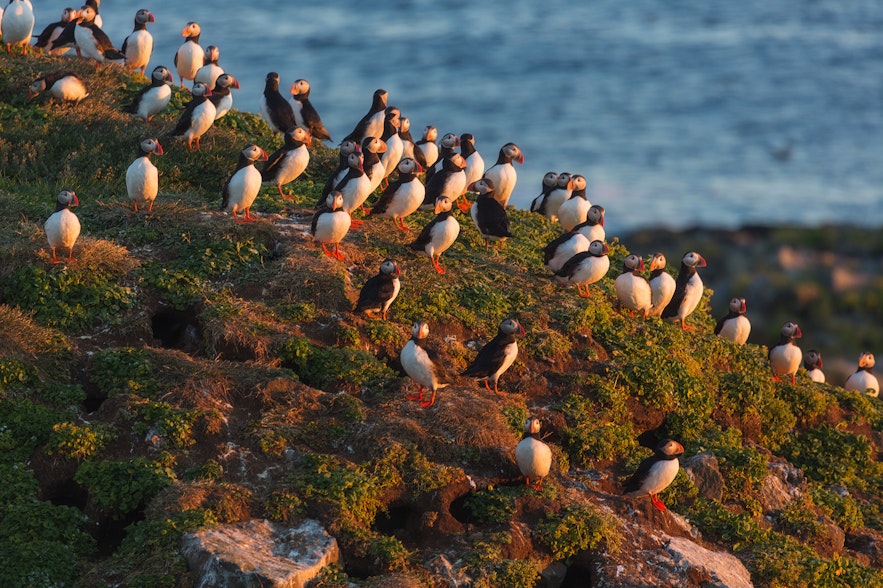
Also, with the summer's extended daylight hours, you have plenty of time to observe these feathered creatures in their natural habitat. Locations like the Latrabjarg cliffs in the Westfjords , Lake Myvatn in the north, and the Westman Islands are prime spots for birdwatching during this period. However, remember to respect the birds' nesting areas and observe from a safe distance to avoid causing any disturbance.
- Learn more: Birds in Iceland
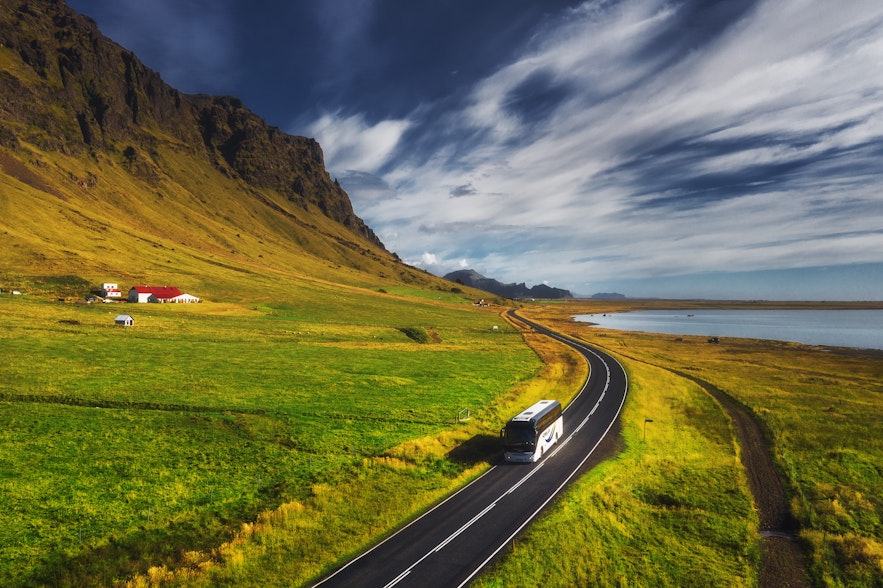
The peak season is during the summer months from June to August. This is because of the long hours of daylight, warmer weather, and the opportunity to engage in sightseeing around the country, and going on road trips on the Ring Road . The peak season shortly returns around the time of Christmas and New Year's during the last half of December into early January, as people visit to experience the festive atmosphere in Iceland during this period of the year.
The shoulder season splits in two, the first being in spring (April-May) and the second during autumn (September-October). During those periods, it's still relatively warm compared to the cold winter, and visitors can comfortably travel between attractions without much worry about snow. The days are certainly shorter than during the bright summer but still give plenty of time for sightseeing. You could even see the northern lights if conditions are right during April or October, even though it's not the prime season for aurora hunting.
Lastly, the off-peak season from November to March (minus the Christmas season!) presents the coldest weather conditions but also the greatest opportunities to see the northern lights, go glacier hiking , dog-sledding , or skiing. Note that daylight is very limited in the winter months, and certain areas may be inaccessible due to weather conditions, such as the Westfjords and the Highlands.
- Read more: 18 Things to Do & Places to Visit in Iceland
Iceland's weather varies significantly throughout the year due to its location close to the Arctic Circle. The country experiences relatively mild but unpredictable weather. Because of its proximity to the Arctic, daylight hours swing dramatically during the year. This can be good to know when deciding when to go to Iceland.
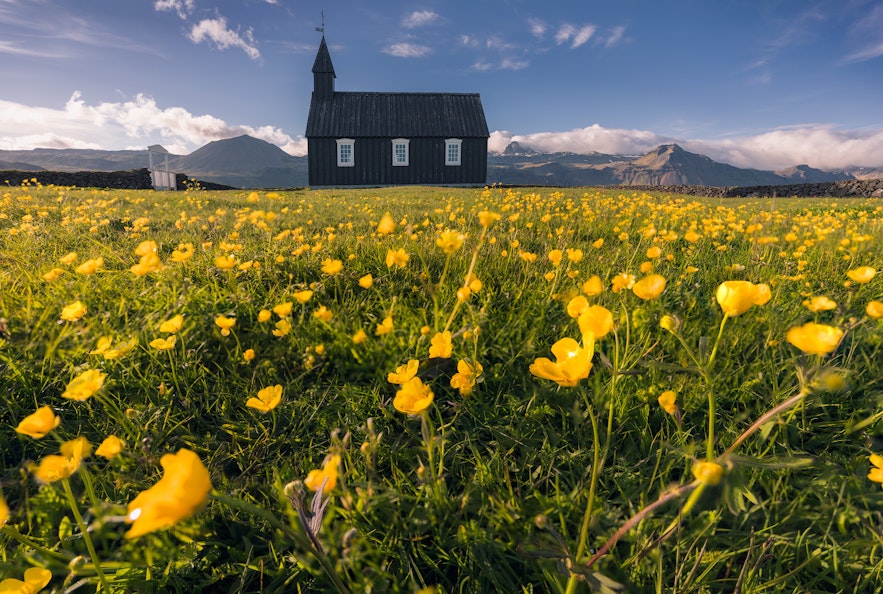
Concurrently, the daylight hours rapidly increase due to Iceland's position near the Arctic Circle. In the early spring, there can be approximately 13 to 14 hours of daylight, with the sun rising around 6 AM and setting around 8 PM in April. However, by late May, daylight can extend up to 20 to 21 hours a day. This significant increase in daylight hours, coupled with the country's blossoming landscapes, marks a vibrant and exciting time to experience Iceland's unique natural beauty.
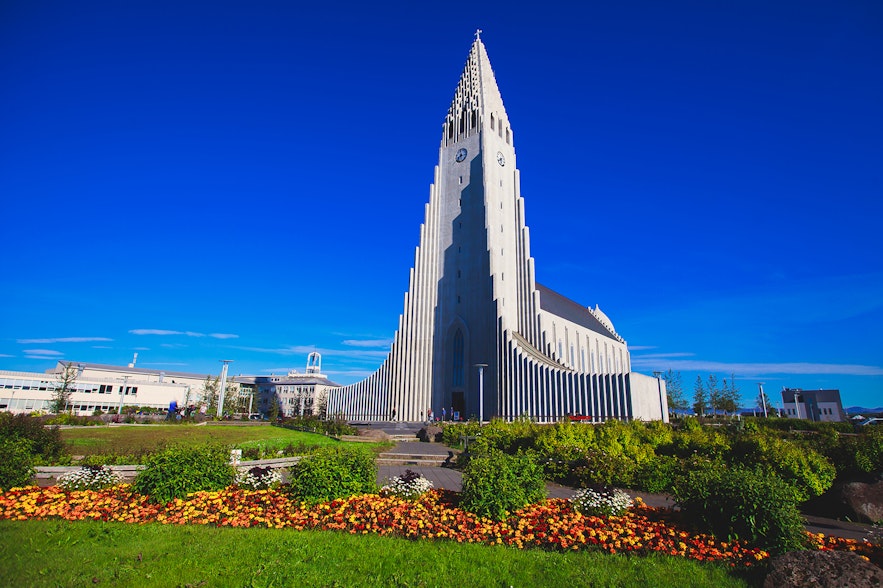
During this season, the daylight hours in summer reach their peak due to Iceland's position. In the early summer months, daylight extends remarkably, offering nearly 24 hours of daylight, peaking around the summer solstice in late June. The sun barely dips below the horizon before rising again, giving birth to the mesmerizing phenomenon known as the Midnight Sun. This astonishing period of prolonged daylight paints the landscapes in a continuous golden hue and offers extended hours for exploration.
Top Summer Tours & Packages
4-day reykjavik city break with optional activities.
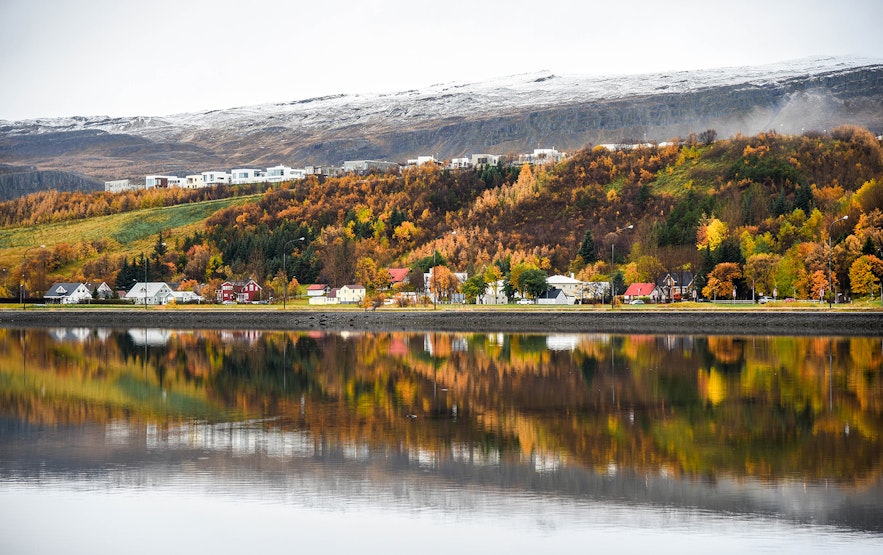
Daylight hours begin to recede during the autumn months. At the onset of autumn in September, the length of daylight begins to align more closely with the length of night, providing approximately 12 to 13 hours of daylight, with the sun rising around 6:30 AM and setting around 7:30 PM. However, by late October, daylight hours diminish to approximately 8 to 9 hours per day, with the sun rising closer to 9 AM and setting around 5 PM. This creates an opportunity to view the northern lights when the skies are dark.

In terms of daylight, winter marks the period of the shortest days in Iceland due to its proximity to the Arctic Circle. By December, daylight hours can be as short as 4 to 5 hours a day, with the sun rising around 11:30 AM and setting around 3:30 PM. However, this lack of daylight also creates the best time of year to see Iceland's most iconic natural phenomenon - the aurora borealis, which lights up the winter sky with its enchanting and colorful display.
- Learn more: Iceland's Weather, Climate and Temperature Year-Round
If you're not sure when to visit, or if you've already booked your flight and want to know what's going on when you arrive, here is a short overview for each month of the year in Iceland and what you can expect. Clicking on each of the headlines will take you to a much more detailed guide with everything you need to know about that particular month in Iceland.

Photo from Thrilling 2-Hour ATV Ride on South Coast to the DC Plane Wreck
August is the last month of pure summer bliss in Iceland, making it a great time of year for fun outdoor activities such as feeling the serenity of the water on kayaking tours , getting a rush of adrenaline while zooming across black sand beaches on ATV and buggy tours or braving the rapids of glacial rivers on epic rafting tours . If you'd prefer to take things slow and just enjoy the beauty and peacefulness of nature, go sightseeing and enjoy the many natural wonders around the country. The first weekend of August is a 3-day weekend for Icelanders, with many festivals being held around the country, the biggest one being in the Westman Islands. The festivities in August continue, with Menningarnott (Reykjavik Cultural Night) being celebrated the following weekend and Reykjavik Pride Festival the weekend after that. If you're not sure about things to do, check out our extensive selection of August tours which you can book online.
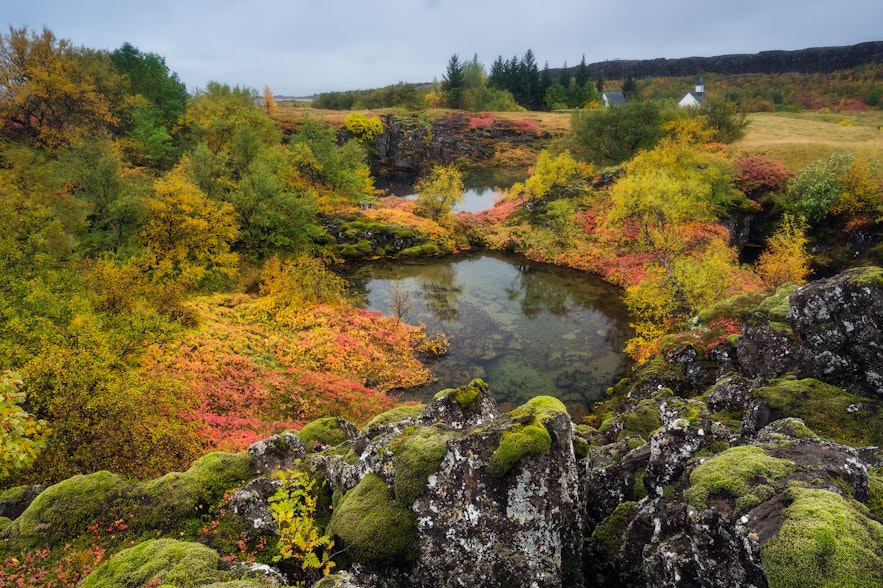
Yes, Iceland can be visited in winter. This is the best time to see the northern lights. However, keep in mind that the weather can be unpredictable and daylight hours are reduced. There is a wide range of winter tours and packages in Iceland that you can explore.
The northern lights are not visible in summer due to the long daylight hours. The best time to see them is during clear, dark nights from late September to early April. For the best chance to see these elusive lights, there are a lot of northern lights tours to choose from during the winter.
Yes, the Golden Circle is open any time of the year and is conveniently located close to Reykjavik. If you're driving yourself, it's a good idea to rent a 4x4 vehicle if you're going there during the winter in case the roads are snowy. If you don't want to drive, there is a wide variety of Golden Circle tours to choose from.
During winter in Iceland, it's important to dress in layers to stay warm and comfortable. Start with thermal underwear and add layers such as a fleece jacket or wool sweater. Over this, wear a windproof and waterproof outer layer. Don't forget to wear insulated waterproof boots with good grip, as streets can become icy. Warm socks, gloves, hats, and scarves are also essential to protect against the cold.
Even in summer, weather in Iceland can be unpredictable. Pack layers, including a warm jacket, waterproof outer layer, hat, gloves, sturdy footwear, and warm socks. Don't forget your swimsuit for geothermal lagoon visits! You can read our Ultimate Guide on What to Wear in Iceland for tips about dressing appropriately any time of year.
Yes, renting a car in Iceland is a popular way to explore the country. Do note that weather conditions can make driving challenging, especially in winter. Always check road conditions and weather forecasts before setting out.
When would you most like to visit Iceland? If you have been to Iceland, what time of year did you visit? Let us know in the comments below!
Popular articles

Guide to Iceland | The Story of the Leading Travel Agency of Iceland

The Complete Guide to the Midnight Sun in Iceland

Top 20 Most Beautiful Waterfalls in Iceland

22 Photos of the Aurora in Iceland

Mountains in Iceland
Other interesting articles.

Best Restaurants on the South Coast of Iceland

The Ultimate Guide To Golf In Iceland

Driving in Iceland in March: The Ultimate Guide

Download Iceland’s biggest travel marketplace to your phone to manage your entire trip in one place
Scan this QR code with your phone camera and press the link that appears to add Iceland’s biggest travel marketplace into your pocket. Enter your phone number or email address to receive an SMS or email with the download link.
Top things to do in Iceland
Book your complete trip with the best companies only

Visit a Live Volcano

Visit the Blue Lagoon

Go on a Road Trip

Do the Golden Circle

See the Glacier Lagoon

South Coast Tours

Find the Northern Lights

Explore an Ice Cave

Best Time to Visit Iceland: Month by Month Breakdown
Iceland is a land of extremes, a land where tumultuous natural forces have shaped the landscapes over thousands of years, and a land where the extremes can be both beautiful and deadly.
The weather is no exception and being located so far north, and so close to the Arctic Circle, the weather in Iceland can be as extreme as the volcanoes and the geothermal energy.
Winter is almost perpetually dark, the weather is bitterly cold and storms can smash through the country at a moment’s notice.
Summer though is beautifully sunny, with the midnight sun allowing locals and visitors to enjoy the outdoors long into the night, while fall and spring can see both sunshine and snow in equal measure.
Deciding the best time to visit Iceland can be a challenge because the seasons dictate not only the weather but when you can see the Northern Lights, when the best time for whale watching is and of course, when you, personally, are going to make the most of it.
To help you to plan your trip to the land of ice and fire, here’s our guide to the best time to visit Iceland.
Don’t leave home without: Lonely Planet Iceland (Travel Guide)
Table of Contents

Spring in Iceland
Spring can be the best time to visit Iceland if you don’t mind a little unpredictability but are looking for the opportunity to experience everything that the country has to offer.
Spring in Iceland roughly begins mid-March and ends in June, and you can experience the cold weather disappearing, as the snow melts and life returns after the long winter.
But anytime through the season, you can expect the weather to turn for the worse, and although the skies might be clear in the morning, by the evening you could be caught up in snowstorms, particularly if you are traveling further north.
March and April are the most unpredictable months in Spring, and if you are road tripping around the island, while it’s very doable, you’ll need to be flexible because many roads can still be snowed in, and you might find driving to be treacherous if you aren’t used to the conditions.
May and June become much better in terms of driving, with longer days and less snow to contend with when you are on the road.
Many travelers want to see both whales and the Northern Lights when they are in the country, and Spring can be the best time to visit Iceland if you want both of these experiences. The whale watching season begins in April when the waters begin to warm up and the whales begin migrating.
In Husavik, in the north, the season begins as early as March when you can find these beautiful animals in what is for good reason called the Whale Watching Capital of Iceland.
The Northern Lights are best seen during winter when the skies are at their darkest, and conditions are optimal, but being located so far north, you can, in fact, see the Aurora Borealis well into Spring as well, if you have a spot of luck.
In late March and early April, if you are in remote locations, with dark skies, then you still have the chance to see this natural light show in the sky. If you want to catch both the whales and the light show, then March and April are great times to try your luck.
But just be warned, although you might leave happy, you could equally leave empty-handed.
Our Top Recommended Tours for Spring:
- Golden Circle Afternoon and Northern Lights Tour from Reykjavik
- Small-Group Golden Circle Tour and Secret Lagoon Visit from Reykjavik
- Southern Iceland Glaciers, Waterfalls and Beaches Day Tour
- Golden Circle Super Jeep Tour and Snowmobiling

Summer in Iceland
Summer is usually considered to be the best time to visit Iceland because this is when the weather is at its best and when the days are at their longest.
This is the liveliest season to be in the country, and from June through to September, you’ll experience excellent weather and will find the country is booming with festivals and events.
Summer begins officially on June 21st, the summer solstice and the longest day of the year, and you’ll be able to experience the unique phenomenon of the Midnight Sun through June. The further north you are, the longer the days are, and as you get closer and closer to the Arctic Circle, the sun almost never sets through summer.
Summer is the best time to visit Iceland if you want to go hiking, horseback riding or even just road tripping. The weather is perfect for enjoying the great outdoors, and you can even go walking under the Midnight Sun.
If you are road tripping, conditions are perfect, particularly if you don’t want to experience the icy road conditions of other seasons.
Whale watchers will want to visit in summer too because from May to September, the whale watching season is at its peak. You can join tours from Reykjavik, or better yet, from Husavik in the north, and you’re almost guaranteed to see whales during this season.
Things to note about visiting in summer though, are that this is the busiest time of year in Iceland, and prices can be much higher than in the shoulder seasons.
Accommodation and car rentals in the country are limited too, particularly outside of Reykjavik – this is a small country after all! – so make sure to book things in advance if you have a particularly itinerary you want to stick to.
If you are looking to see the Northern Lights, then obviously, summer is not the best time to visit Iceland !
Our Top Recommended Tours for Summer:
- Whale Watching Tour from Reykjavik
- Viking Horse Riding and Golden Circle Tour from Reykjavik
- Mountain Helicopter Tour with Summit Landing from Reykjavik
- Small-Group Silfra Snorkeling and Lava Caving Adventure from Reykjavik
Need to book a car for your road trip adventure? We use Discover Car Hire for comparing car prices to find the best deal. They search both local & international rental companies.

Fall in Iceland
Fall is generally considered to be from early September until late October or early November, but towards the end of the season, you might well already believe it to be winter, given the cold weather and abundance of storms.
The start of fall can be the best time to visit Iceland if you are looking to avoid the crowds, enjoy lower costs and still have great weather.
The days in September are still relatively long, giving you plenty of time to enjoy the great outdoors still, while the roads are yet to be snowed in by fierce weather, and you can drive in safety across the country.
The further north you go, the colder it gets in fall, but if you are still looking to see whales on the open ocean, then in Husavik the whale watching season is still in full swing in September, although you’re much less likely to see these marine mammals.
Towards the end of fall, when the days begin to get shorter, then you might be lucky enough to see the Northern Lights too. If you head north, and go remote, to areas devoid of light pollution, then you’ll maximize your chances of seeing this natural phenomenon in the night sky.
As you reach November, the weather will begin to be consistently cold and snowy, and you’ll find that the country begins to prepare for the long winter ahead.
Our Top Recommended Tours for Fall:
- Landmannalaugar Hot Springs and Hike in the Highlands
- Glacier Hiking and Ice Climbing Small-Group Adventure from Reykjavik

Winter in Iceland
Winter can be the most challenging time of year to visit Iceland, but it can also be the most rewarding. This is when the weather is at its most extreme, and when the days are at their shortest.
Even in the capital, Reykjavik, during December there are on average only 4 hours of daylight, while Akureyri, the largest city in the north, sees just 3 hours of daylight.
The weather is generally bad too, with snowstorms and low, low temperatures consistent throughout the season, with averages being mostly below freezing across the country.
Winter lasts from November through to March, but if you’ve never seen such extremes, and been so close to the Arctic Circle in the coldest months of the year, then visiting during this season can be a memorable experience in itself.
Winter isn’t all bad though, and for many, it is, in fact, the best time of year to visit. As well as being the quietest and least touristic season, winter is also the best time to catch the Northern Lights.
For many, this is a once in a lifetime experience, but being a natural phenomenon, you can never predict exactly when and where the Aurora Borealis will appear, and you’re at the mercy of luck.
You can, however, maximize your chances of seeing this natural light show, and the biggest way to do that is to time your visit to Iceland right. Winter is the best time to see the lights, and as long as you can endure the cold nights, then you will also have the darkest skies.
Between November and February, conditions are absolutely optimal, and even just driving outside the capital, you are likely to see the Northern Lights.
Traveling further north and getting remoter in winter will give you the chance to see the lights at their most dazzling though, but of course, beware of the weather, because storms can obscure the night sky too and leave you disappointed.
For adventure travelers, winter can be the most exciting time of year to visit Iceland, but you’ll need to be prepared for the bad weather and be able to deal with extreme cold to be able to make the most of what can be, an incredibly unique experience.
Our Top Recommended Tours for Winter:
- Landmannalaugar Winter Tour
- Northern Lights & Geothermal Baths Adventure
- Northern Lights Tour in Iceland
Read reviews and check prices with our Hotel Search Engine , that gives you the best hotel deals found on the web. Our search engine pulls results from all of the major booking places, including Expedia, Hotels, Booking and more. All the options, all the deals, all in one place and just for you.
More on Iceland:
- Driving in Iceland – Know Before You Go
- 21 Best Day Trips from Reykjavik
- Golden Circle Iceland: 7 Stops You Cannot Miss
- 15 Incredible Things to do in Reykjavik
- Silfra Iceland: Unreal Snorkeling Between Continents
- South Coast Iceland: Must Visit Places
- 9 Unreal Northern Lights Tours
- 7 Excuses to Visit Iceland
Did you like this story? Share it!
Travel planning resources, about lina stock.
Lina is an award-winning photographer and writer that has been exploring the world since 2001. She has traveled to 100 countries on all 7 continents. Member: SATW, NATJA, ATTA, ITWA
Leave a Comment Cancel reply

- Privacy & disclosure policy
- Portfolio & Press
- NORWAY ITINERARIES
When is the Best Time to visit Iceland? [Month-by-Month]
Psst! Some links in my posts may be affiliate links, which means that I get paid a fee if you chose to purchase something through it. This doesn't cost you anything, but makes a huge difference for me! Thanks for your support!
Want to know when is the best time to visit Iceland before you book your getaway? And more specifically, which are the best months to go?
You are in the right place!
With its active landscapes, friendly locals and once-in-a-lifetime experiences, Iceland is one of many people’s top bucket-list destinations to visit. But like most places, each season brings a completely different experience.
To make sure you don’t miss out on the most amazing trip to Iceland, let’s take a look at the best times to book a getaway here. By the end of this guide, I’m sure you will have found the perfect time of year to visit Iceland for you.
Table of Contents
Quick Iceland Travel Guide
Where to stay : Most people visiting Iceland stay in Reykjavik, as it is the main hub and largest town on the iceland. It is also where most tours depart from. Classic hotels include the Hilton Reykjavik and the Hotel Reykjavik Saga , but for a more budget-friendly option you’ll find that people are renting out their homes ( this one has a car included! ) and apartments .
Top activities and tours in Iceland :
- Golden Circle & Blue Lagoon
- Glaciers & Waterfalls Tour
- Whale Watching
- Reykjavik Local Food Tour
- Northern Lights Photography Tour
Packing for Iceland : The time of year you visit will affect your packing list. If you are visiting in winter, I have covered everything you need in this guide . In the warmer months, you still need to keep in mind that the weather can change quickly, and it can get chilly in the evenings. Layers is always key, and a light puffer jacket such as this one should be with you year-round when visiting the Nordics.
Getting from the airport : The airport in Reykjavik (located in the smaller town of Keflavik, and named thereafter, KEF) is about 50 km/31 miles from Reykjavik. You can easily book a bus transfer in advance , taking you to the Reykjavik city center (where most hotels are within walking distance). For an even more hassle-free arrival, book a private transfer .
When is the best time to visit Iceland?
You can visit Iceland any time of year and have an amazing time. No matter the seasons, there are plenty of things to do in Iceland to keep you busy. But when you visit does depends on what you want to do with your time here.
Some experiences can only be done during certain months of the year in Iceland. If you are desperate to catch a glimpse of the Northern Lights , go on a whale watching trip or have the ultimate winter escape, you are limited to only a few weeks of the year.
To help you out, here are some of the most popular times to visit Iceland , depending on you preferred activity :
- For Winter Activities : November
- For The Northern Lights: January
- For Driving: May
- For Sight-Seeing: September

When Is The Best Time To Visit Iceland: Season by Season
Below is a detailed breakdown covering when is the best time to visit Iceland based on season. Like with the rest of Scandinavia, some seasons are short whilst others (here’s looking at you, winter) are longer than elsewhere.
A little further down, I have broken down the best time to visit Iceland for specific activities and interests, such as northern lights or whale watching (or just to avoid crowds).
Iceland’s Autumn: September to October
Autumn in Iceland, from September to October, offers a tranquil and picturesque experience with mild weather, breathtaking landscapes, and fewer crowds compared to the peak summer season. It’s an ideal time for nature lovers, photographers, and those seeking a more intimate connection with this enchanting island.
Similar to how Autumn is my favourite time of year to visit Norway , it is a great season in Iceland too!
Iceland’s Weather in Fall:
- Temperatures : The temperatures during the autumn months hover around 5-10°C (41-50°F), providing a comfortable environment for outdoor adventures.
- Precipitation : Rainfall is relatively moderate, with occasional bursts of showers. Be prepared for changing weather conditions and have waterproof gear handy.
The best activities to do during this season are the Golden Circle Tour, hiking, photography and the Iceland Airwaves music festival.
If you have a car, don’t miss this self-drive Golden Circle Tour you can download to your smartphone ($40). If you are without a car , this guided tour takes you around the Golden Circle in a day ($129)!

Iceland’s Winter: November to March
Iceland transforms into a winter wonderland from November to March. While the weather can be challenging, there is nothing like experiencing an Icelandic winter experience!
Weather in Winter:
- Temperatures : Winter temperatures typically range from -1°C to 3°C (30°F to 37°F) along the coast, but it can be colder inland and in the highlands.
- Daylight Hours : The days are short, with only a few hours of daylight.
The best activities to do in winter are to see the northern lights , ice caving and glacier hikes.
Make sure to pack well if you are visiting in winter. My packing guide for Norway in winter will also be of great help if you are visiting Iceland during the cold months.
If you are visiting for the northern lights, my #1 tip is to book a tour with a northern lights guarantee , and book it for one of your first nights in Iceland. Basically, this means that if you don’t see any northern lights (for example if the sky is overcast or there isn’t any northern lights activity), you are automatically booked in for a new tour later on your trip.
Read next : how to take photos of the northern lights with an iPhone
⭐️⭐️⭐️⭐️⭐️ This is the highest-rated northern lights tour from Reykjavik, with photos included and a northern lights guarantee (make sure to book in advance)!
Iceland’s Spring: April to May
This season offers a delightful blend of milder weather, budding landscapes, and brighter days, making it an excellent time to explore this Nordic gem. Reykjavik starts to come alive, and those going on a road trip can explore some of the island’s Viking symbols and key Viking locations .
Weather in Spring:
- Temperature : Spring temperatures in Iceland range from 3°C to 10°C (37°F to 50°F), providing a welcome thaw from winter’s chill.
- Daylight Hours: As spring goes on, daylight hours increase significantly, perfect for long days of exploring.
The best activities to do in Iceland’s spring period are volcano tours, snorkelling, horse riding and visiting the outdoor hot springs such as the famous Blue Lagoon.
Iceland’s Summer: June to August
Iceland’s summer, from June to August, is a magical time to visit. The country is under the Midnight Sun during these months, one of the things the Nordic countries are famous for .
So visitors are offered extended daylight hours and milder weather, making it the perfect season for exploring breathtaking landscapes and enjoying endless outdoor activities.
If you are visiting Iceland in the early summer, you’ll love seeing how dramatic the waterfalls are. Some of the best waterfalls in Iceland are at their most spectacular at this time.
Weather in Summer:
- Temperature : Summer temperatures in Iceland generally range from 10°C to 15°C (50°F to 59°F), but can occasionally climb higher.
- Daylight Hours : One of the highlights of summer is the Midnight Sun, with almost 24-hour daylight, especially in June.
The best things to do during Iceland’s summer are whale watching , kayaking, puffin watching and local food tours .

The Best Months To Visit Iceland To See The Northern Lights
The Northern Lights phenomena are probably why a lot of people book a winter trip to Iceland. However, this rare experience can be hard to track down, especially if you do not visit during the right months.
In this post I have broken down all the criteria you need to have checked off in order to see the northern lights.
To get a better chance of seeing the Northern Lights during your trip, book between January and March . During these months you will still have shorter daylight hours, leaving you more opportunities to find them. And if you want to make sure you see them during your trip, consider booking a Private Northern Lights tour!
The extended darkness, stable weather, increased solar activity, fewer crowds, and the unique winter ambience combine to make it the absolute best time to chase the Northern Lights in this captivating Arctic wonderland.
Below are some of the highest rated Northern Lights tours in Iceland (both private and in groups).
The Best Time To Visit Iceland For Whale Watching
Between April and September is the absolute prime time to see whales in Iceland, all though you can see them year-round.
Humpback whales, orcas, and even the elusive blue whales make their appearances in the water around this time of year.
Also, you have to keep in mind that most whale-watching tours only operate during the summer season (except for the one linked below). In the winter, the tours will give you thermal jackets and jumpsuits to bundle up in, but I always recommend wearing wool as your inner layer regardless.
Booking a whale watching between April and September means you have plenty of tour options to choose from, as there are more tours operating then.
With favourable weather, an abundance of whale species, a variety of tour options, and the bonus of stunning birdlife and the midnight sun, these months are ideal for any whale watching adventure.
⭐️⭐️⭐️⭐️⭐️ This is the original whale watching tour from Reykjavik, and has been given Viator’s Badge of Excellence (must be booked in advance)!
The Best time to visit Blue Lagoon In Iceland
This geothermal wonderland is at its absolute best in the summer months (from June to early September). Even though it’s magical to visit any time of year, the Blue Lagoon is at its peak during the summertime.
The midnight sun means you can capture the Blue Lagoon’s beauty at all hours, and is a great chance to take some amazing photos of your visit. However, as this is a pretty popular time to visit, it’s recommended to book your visit during the morning or evening. This experience is so much better when it’s not crowded!
The summer months are also an amazing time to book some incredible Icelandic tours because you get to see so much more thanks to the good weather and extended daylight hours. Just remember to book in advance as they can sell out quickly.

What Is The Best Month To Go To Iceland To Avoid Crowds?
If you’re seeking to experience the beauty of Iceland without the hustle and bustle of crowds, consider planning your visit during the shoulder seasons of April-May or September-October . During these months, the tourist numbers are notably lower compared to the summer peak season.
In April and May, Iceland has milder weather and the winter conditions are melting away. It’s an excellent time to explore the stunning landscapes and enjoy attractions with fewer visitors and at cheaper prices.
September and October bring a different charm, as fall conditions are still around with their vibrant colors. The weather remains pleasant and there is still a lot of daylight hours.
By choosing these shoulder seasons, you can explore its iconic sights at a more relaxed pace, making it the perfect choice for those looking to avoid the crowds while still enjoying all that Iceland has to offer.
When Is The Worst Time To visit Iceland?
While Iceland is undoubtedly a captivating destination year-round, there’s one period that many travelers might want to think twice about: the worst time to book a trip to Iceland, for most, would be during the winter months, specifically from late November to early February.
Some adventurers revel in the winter wonderland that Iceland becomes during this time of year. However, it’s good to know the challenges that come with a winter visit here.
Winter in Iceland can be pretty brutal. The country lives up to its name with fierce winds, biting cold, and unpredictable storms. It’s not uncommon for roads to close, making travel between towns and tourist attractions challenging, if not impossible. The harsh conditions can turn even short drives into arduous journeys. This is why it’s important to get your hire car through a reliable company , pay attention to road conditions and listen to locals’ advice.
Basically, all the things I tell you to do if you are going on a road trip in Norway .
Side note : this Iceland road trip itinerary is not to be missed if you are planning on a self-drive adventure!
Short days are another downside of winter in Iceland. In December, the sun can rise as late as 11:00 AM and set as early as 3:30 PM. This means you’ll have very limited daylight to explore the stunning landscapes, making it difficult to fit in all the sights and activities you might have on your itinerary.
It’s also important to keep in mind that many outdoor activities that make Iceland famous become tricky during winter.
Hiking trails become treacherous, waterfalls may freeze, and some natural wonders are inaccessible due to road closures or extreme weather conditions. Activities like glacier hiking and ice cave tours can be done, but they come with added safety precautions.
Accommodation prices can also be relatively high during the winter season, primarily because of those seeking a cozy escape from the cold. Booking your place to stay in advance is always a good idea when visiting Iceland, especially in Winter.
The Best Months To Visit Iceland FAQs
I’m sure you have a few more questions you need to answer before clicking on that Book Now button. To help you out, here are the most commonly asked questions about the best times to visit Iceland:
When Is The Best Time To Visit Reykjavik?
The best time to visit Reykjavik, Iceland, is during the summer months, from June to August. This period offers the mildest weather, extended daylight hours for exploration, and a vibrant cultural scene. It’s ideal for outdoor activities and enjoying the city’s festivals and events.
What are the cheapest months to visit Iceland?
Visiting Iceland during the shoulder seasons of April to May or September to October can be a budget-savvy choice. Accommodation and tour prices are generally lower than during the peak summer months. You’ll still enjoy relatively mild weather, fewer crowds, and the chance to witness Iceland’s natural beauty without the huge costs.
When Is The Peak Season In Iceland?
The peak travel season in Iceland typically spans from June to August. During these summer months, the country experiences milder weather, extended daylight hours, and vibrant green landscapes. This makes it the most popular time for tourists to explore Iceland’s natural wonders!
What Month Is Rainy In Iceland?
Iceland experiences relatively consistent rainfall throughout the year. However, if you’re looking for the wettest months, they tend to be in the late autumn and early winter, with October and November being some of the rainiest months in Iceland. It’s worth noting that Iceland’s weather can be unpredictable, so be prepared for rain at any time during your visit.
What Is The Stormiest Month In Iceland?
The stormiest month in Iceland is typically January. During this winter month, the country often experiences powerful storms characterized by strong winds, heavy snowfall, and challenging weather conditions.
Is It Better To Go To Iceland In April Or May?
April has slightly lower temperatures but offers the chance to witness lingering winter landscapes. May is milder and greener, with longer daylight hours, making it suitable for outdoor activities. Both months are excellent, so it ultimately depends on whether you prefer a winter wonderland or a more spring-like experience.
The Best Time To Visit Iceland Final Thoughts
Each season in Iceland offers its unique charm and activities. From the endless daylight and outdoor adventures in the summer to the magical Northern Lights in the winter, Iceland has something to offer year-round.
Whether you want to hike, go whale-watching, or soak in geothermal pools, there’s never a wrong time to explore this remarkable country!
Unfortunately, there are some activities you can only do at certain times of the year. So if you want to experience the Northern lights and winter activities, plan your trip for January. For those who want to see nature in full bloom, the summer months are the perfect time to visit.
No matter when you decide to visit Iceland, you will have an amazing time. Just remember if you are visiting in their peak seasons, book your tours, transport and activities in advance.
Where is Tenerife Island?
Visiting the norwegian fjords in the winter, you may also like, punta cana vs cancun: which destination is best..., the best month to visit punta cana, dominican..., do you need a passport for punta cana, punta cana diving (my experience + helpful tips), the 5 best punta cana excursions, how to be a tourist in norway, 10 ridiculous questions tourists in norway have *actually*..., how to plan a trip to norway [a..., 5 fun things to do in oslo with..., top things to do in oslo, norway [a..., leave a comment.
Save my name, email, and website in this browser for the next time I comment.

Home » Europe » Iceland » The Absolute Best Time to Visit Iceland
The Absolute Best Time to Visit Iceland
By Author Lance Longwell
Posted on Last updated: July 23, 2023
This small country has received a lot of love in the travel sphere during the last decade, and with good reason. Thanks to its stunning landscapes and ease of getting there from both North America and Europe, this is the perfect destination for trips both short and long. But when is the best time to visit Iceland?
While we’ve been visiting Iceland (and writing about it) since 2009, we don’t know if we can really claim credit for the tourism boom. What we can do, is give you expert advice based on our visits over the years during the different seasons.
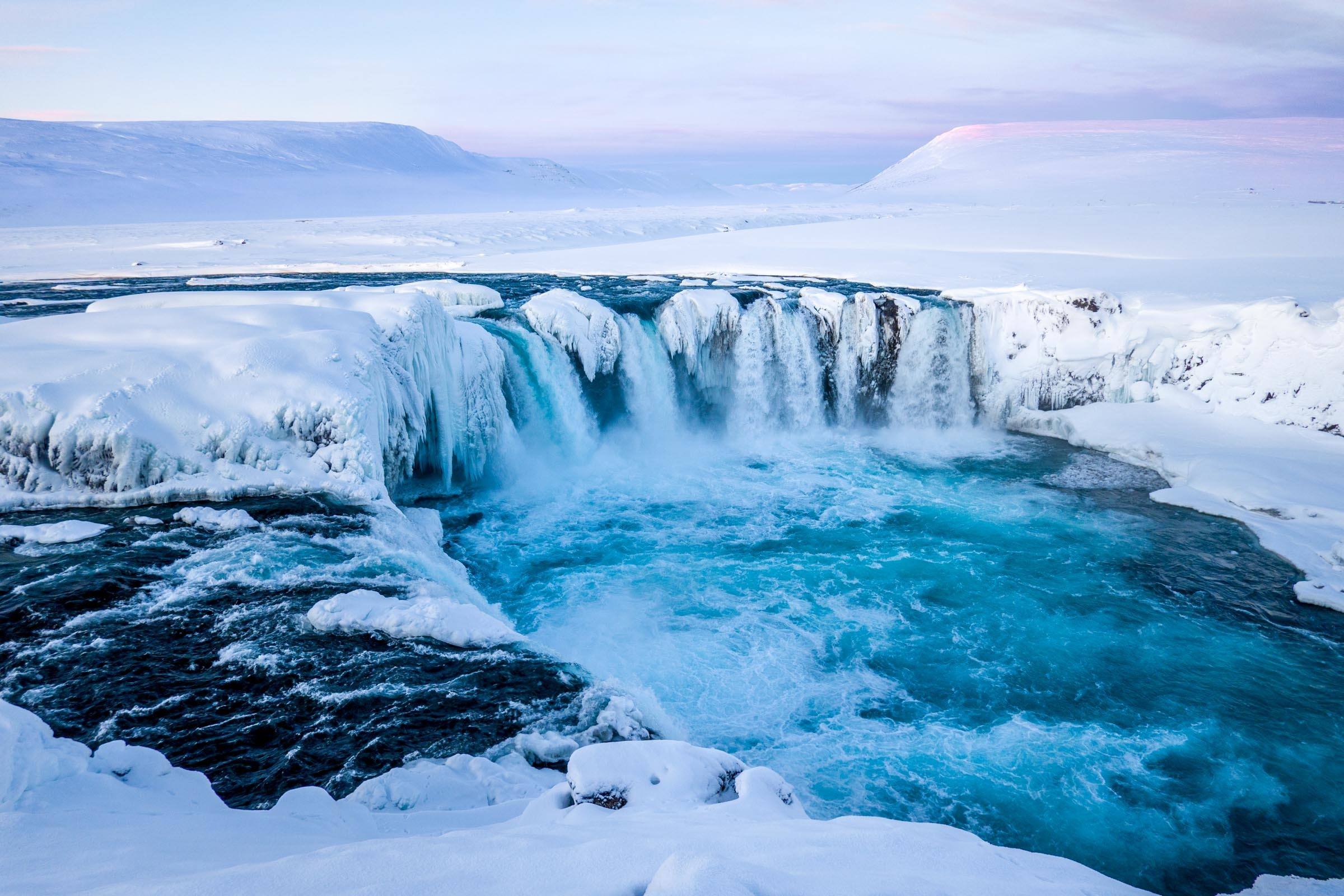
During your planning, if you’re not sure when to visit Iceland, this guide is for you. No doubt you have some ideas about what to do during your perfect Iceland getaway. We have broken down for you month-by-month what to expect, so you can make an informed decision on the best time of year to visit, based on your interests.
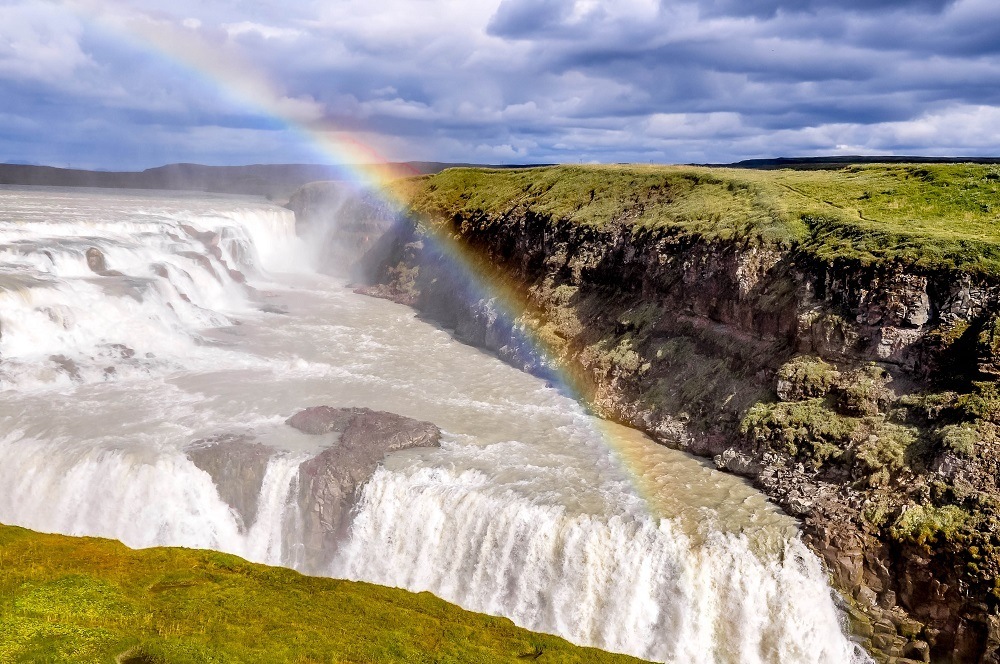
Our Recommendation: The Best Time to Travel to Iceland
Best months to visit, the best time to go to iceland by activity, northern lights, whale watching, saving money, avoiding crowds, holidays and festivals, holidays in iceland, festivals in iceland.
We are often asked when is the best time to visit Iceland. And while this is largely a matter of personal preference and based on your desired activities and attractions to visit , there are some general guidelines.
Iceland in the summer can be absolutely magical. The extremely long days mean you have more time for sightseeing, hiking, hot springs , whale watching, puffin watching, and about everything else under the sun. You will miss the snow, skiing, and Northern Lights, but rewarded for it in other ways.
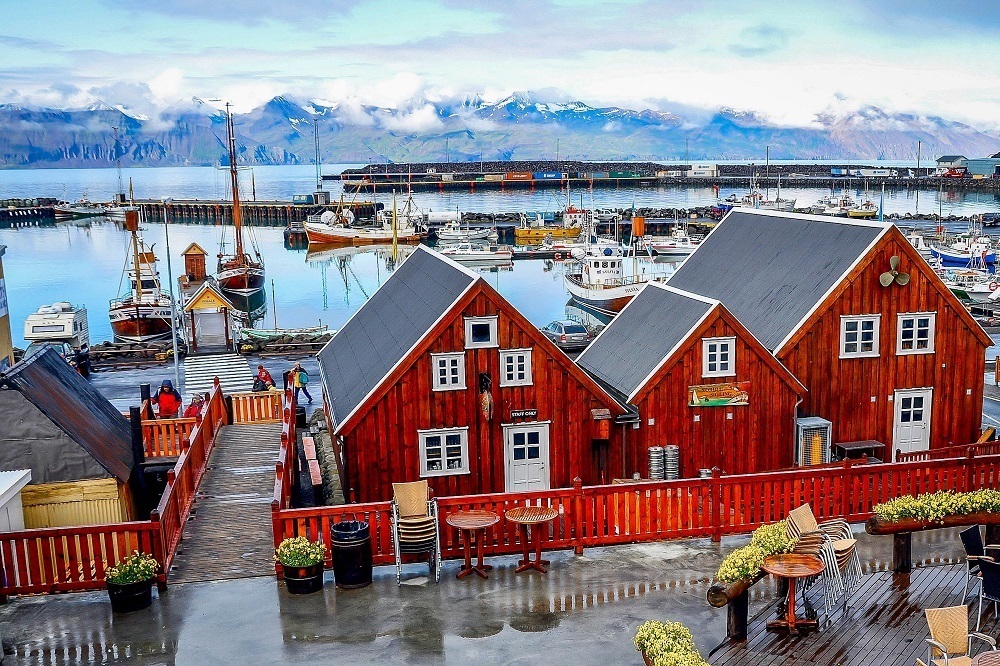
You will also have crowds and a lot more tourists to compete with. If you are going to Iceland in summer, head out of populated Reykjavik and spend time in the northern and eastern parts of the country, where there are fewer tourists. We recommend “shoulder season”: May/June or September where the weather is good, but slightly fewer people.
Iceland in the winter can be like a fairy tale. Only a few hours of actual daylight mean you’ll want to pack your activities close together. But the long twilight before sunrise and sunset create magical light (and stunning sunsets). Winter in Iceland can be beautiful.
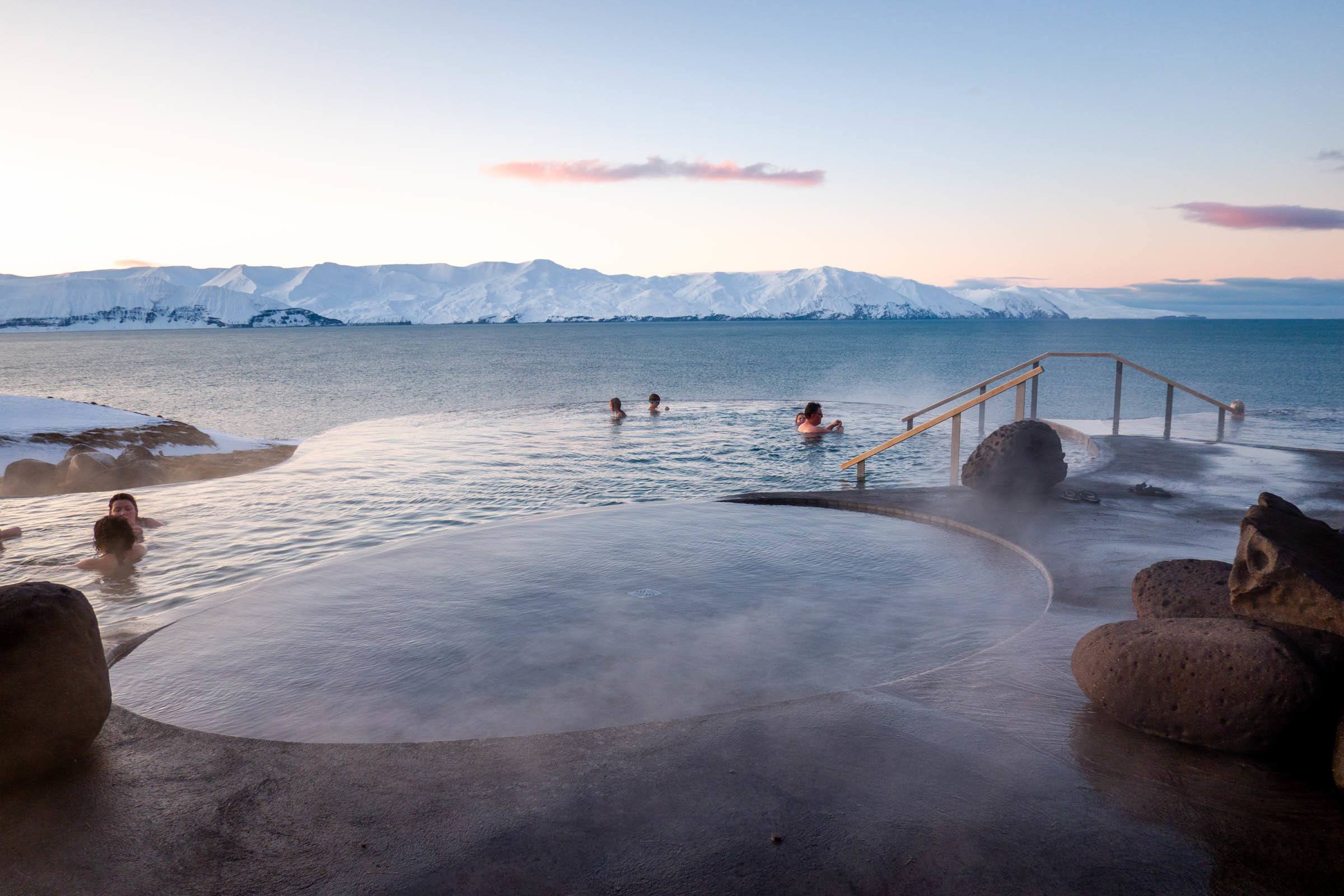
The Christmas-to-New Year period can be very busy with lots of other tourists. But early December and January/February can give you that dose of cold, snow, and Northern Lights you desire.
If you want our advice for when to visit Iceland, there’s no bad option. However, the best option is the one that fits your personal travel style and what you want to do while you are there.
This month is the coldest it will get. Ski season is usually underway by this time. The temperatures are not unbearable, however, because daytime averages are -1° C (30° F). At times, you may encounter fairly strong winds, which will make these temperatures feel colder.
During January, the average amount of sunlight is only 4 hours, although this increases to almost 7 hours by the end of the month. And if the Aurora Borealis is on your list, you are in for a treat, as this the best time to travel to Iceland to see the dancing lights.
With the number of daylight hours stretching from 7 to 10, February brings average temperatures of 0° C (30° F). This leaves adequate opportunity for exploration of the incredible scenery, and most of the attractions in the southwest part of the country are open for business –unless there is a big snowstorm.
February is the best time for skiing. This is also a good month to see the Northern Lights; just be sure to choose an evening when there is no precipitation and no cloud cover for the most optimal viewing.
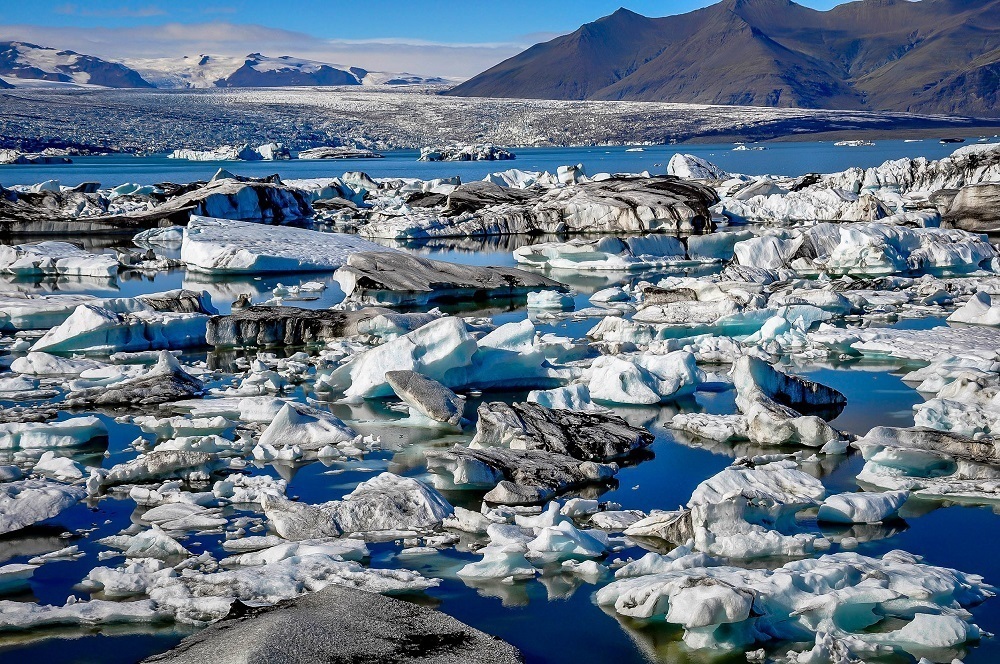
As the days get longer, the hours of sunlight with which explore range from 10 to 13.5. However, the average temperatures remain cold, but warming ever so slightly to 0.3° C (33° F). During March, about half of the days involve precipitation, which could be rain or snow, depending on where you are in elevation.
This is the heart of ski reason, although it starts to taper off by the end of the month. Still, you will need a 4-wheel drive to get to the more remote areas. This is also another ideal month for catching the Northern Lights on clear nights.
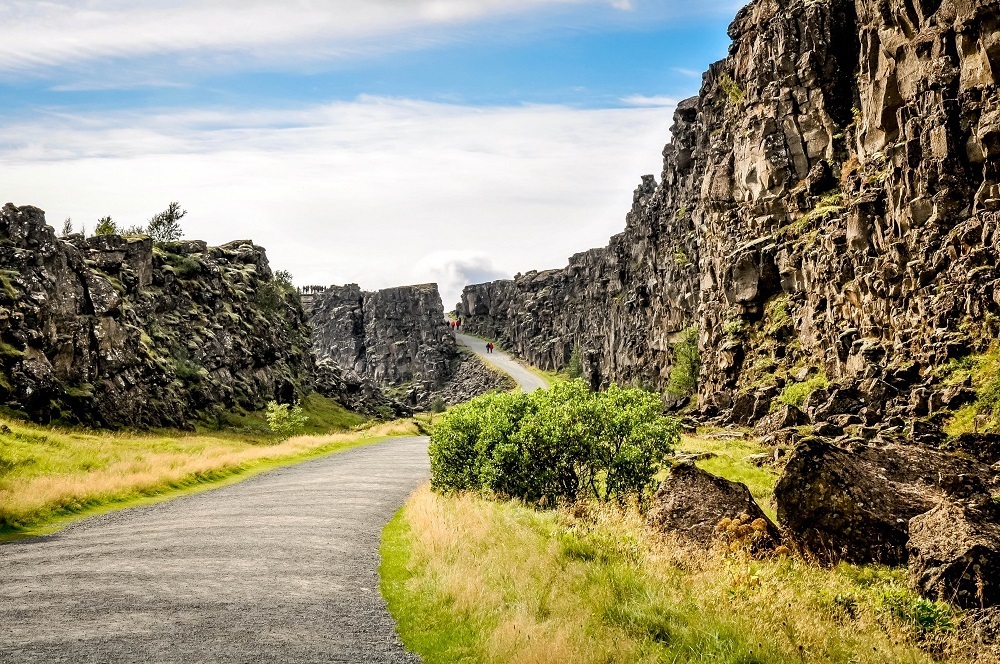
April is where the country really begins to “heat up.” Ski season is usually over by mid-April. With average daytime temperatures at 2.8 C (37° F). This is the time of year when the country sees drier weather.
However, with the clear skies also come the end of the season to see the Northern lights. They may not be as spectacular as during the winter months, but they are still there in April. The amount of sunlight stretches to 16 hours.
With long stretches of daylight at about 18 hours per day, you will no doubt guess that this is not a good time to witness the Aurora Borealis. However, what you can enjoy are average daytime temperatures of 6.3° C (48° F) and fewer tourists.
While this is still on the chilly side, the bright side is that you have many more sunny days with which to play.
In the Northern Hemisphere, June holds the longest day of the year, and here it is 22 hours, the month of the midnight sun! Temperatures are climbing as well, with average daytime highs of 8.9° C (48° F) or even higher on sunny days. That means you can expect less wind and rain, and more sunny weather.
The roads through the interior usually open in late-June. The waterfalls are still going strong. The number of visitors start to increase significantly.
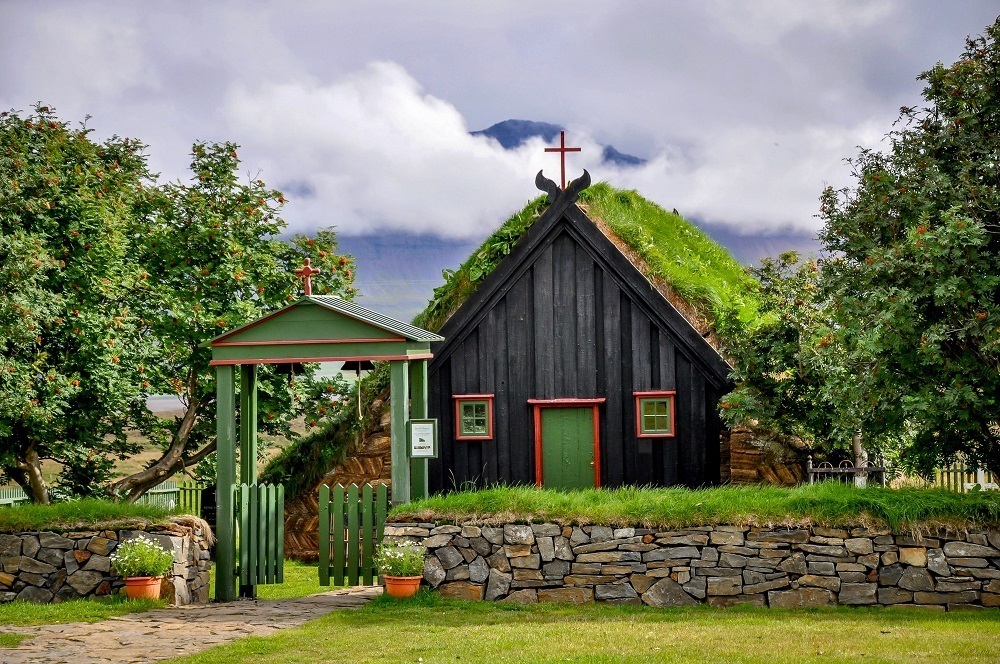
With pleasant weather and long days averaging 19 hours of sunlight, summer in Iceland can be quite lovely. The average daytime temperatures hover around 10.7° C (52° F) – never too warm. There is a good chance some light rain will mix in with sunny weather.
By July, you’ll be guaranteed that the 4-wheel drive roads into the interior will be open. This is peak season and many accommodation options will be booked out. Reservations will be necessary at restaurants.
This is when summer winds down and the daylight hours shorten to about 16, but is a great time to see landmarks in Iceland . The average daytime temperature is 10.3° C (50° F), and the weather remains fairly dry. Towards the end of the month, you will start to feel a distinct chill in the air, but still plenty of daylight for exploring.
This is the best time to visit the remote interior since the roads will still be open. Many locals take camping vacations at the beginning of the month. The number of visitors are at their peak this month.
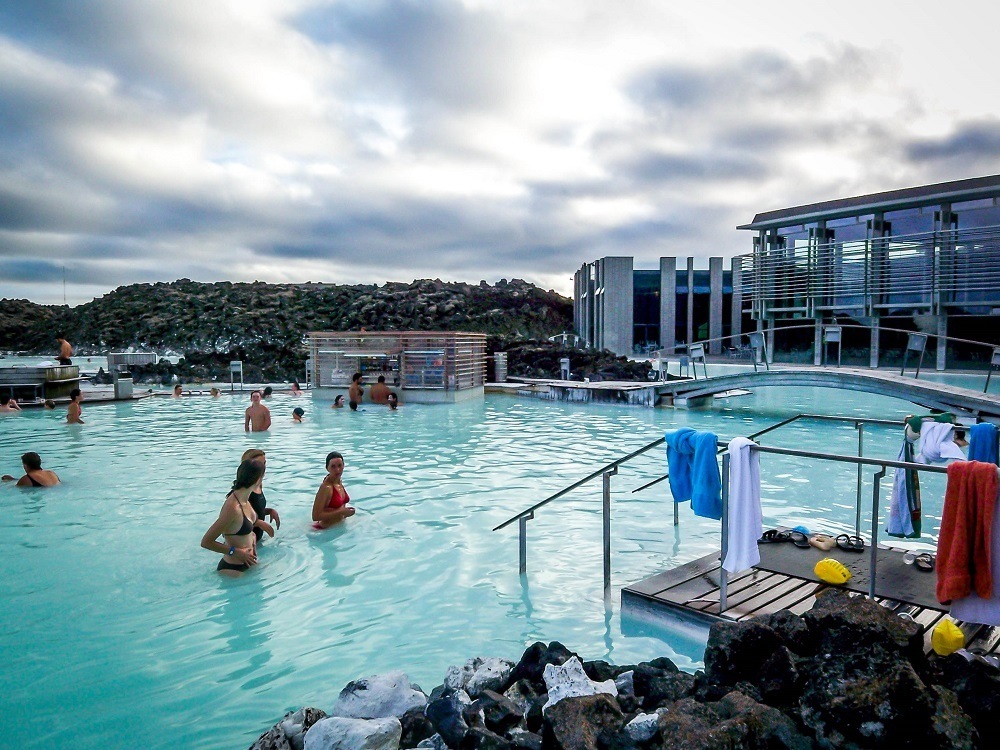
With the coming of autumn, September sees about 13 hours of sunlight and daytime temperatures of a cool 7.5° C (46° F). The season for good Northern Lights viewing is starting to ramp up towards the end of the month. There are also fewer days of sunshine.
By mid-September, some of the 4-wheel drive roads into the interior will begin to close for the winter. It is possible to start seeing some snow in the interior or at higher elevations.
In October, daylight hours drop significantly to around 9, with average daytime temperatures hovering at 4.3° C (40° F) and great autumn colors. Even though precipitation increases during this time, clear skies bring increasing chances for seeing the Aurora Borealis after the sun goes down.
While the weather is still good, there are significantly fewer people. This is a good “shoulder season” month: good weather, fewer crowds.
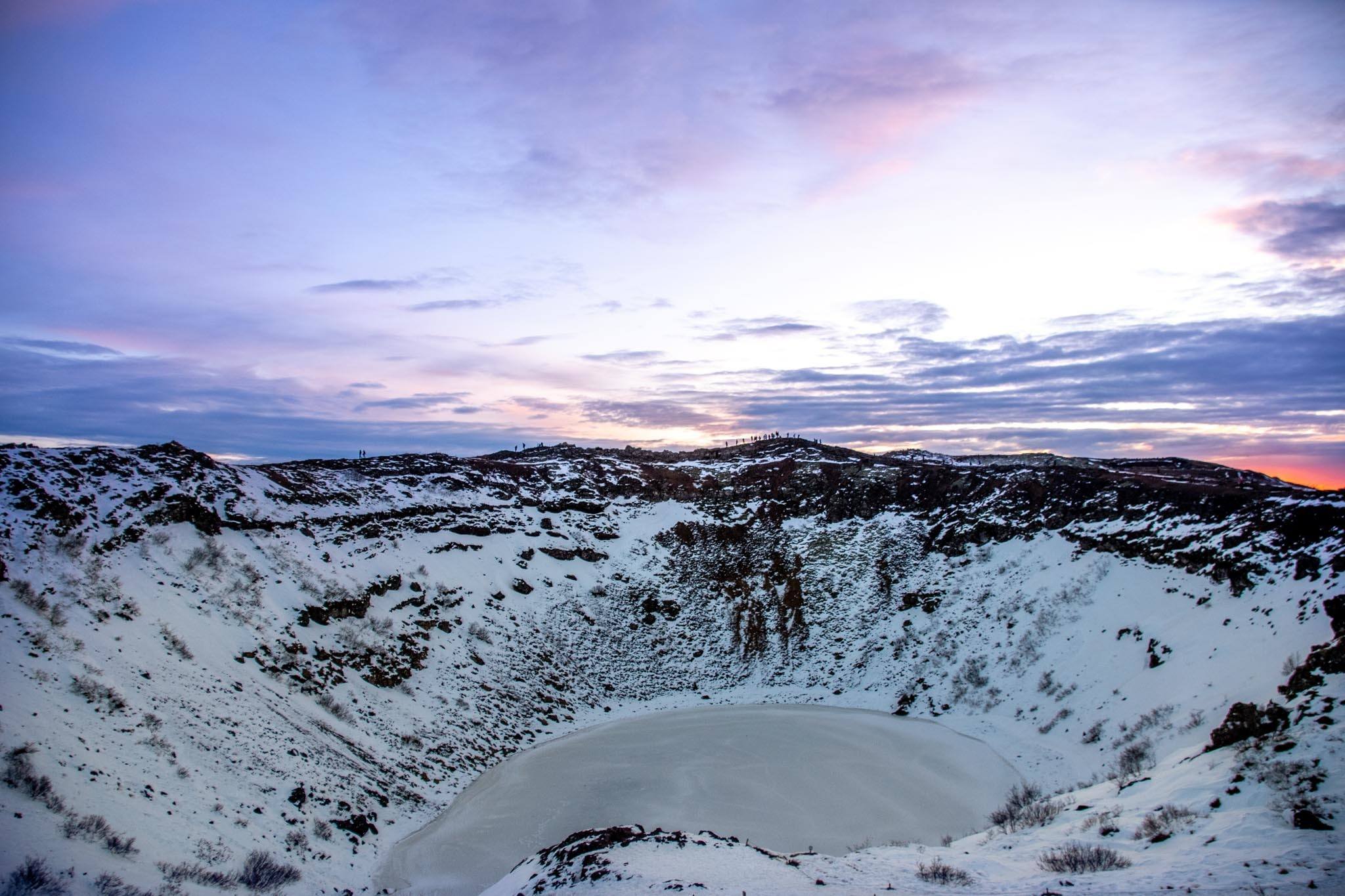
This time of year, temperatures drop to a bone-chilling 1.3° C (35° F). Now, just 6 hours of average daylight temperatures are available, but even though the days are short, this is prime Northern Lights-watching season. On many days you will see light rain or snow; even fog.
Other than January, this month is the darkest of the year, with only about 4 hours of daytime light to play with. Ski season usually starts in mid-December (or early January). The Blue Lagoon sees the fewest crowds in early December. Average daytime temperatures linger around -0.1° C (31° F).
On the flip side, this is prime fodder for some great Northern Lights viewing, when it is not snowing or raining, that is.
Not all activities are available here all the time. Depending on what you want to do, you may need to adjust your travel plans. Here is when to go to Iceland based on what activities are popular.
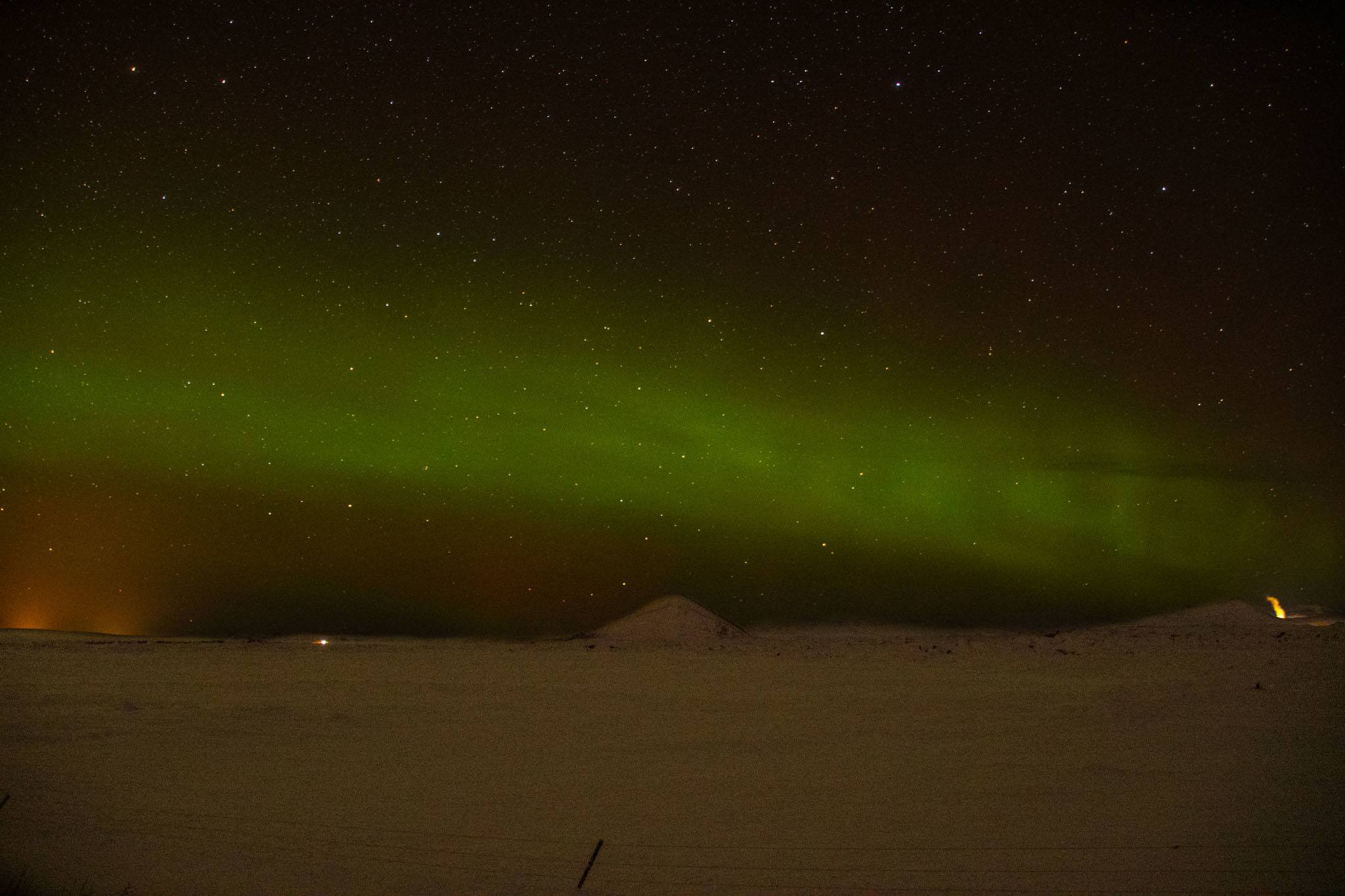
This is one of the premiere locations on the planet to view the Northern Lights, thanks to its remote location away from any city light pollution (save for Reykjavik). The season for Northern Lights lasts from late September through mid-April, however there are conditions required to get the best view. The sky must be clear and solar flares on the surface of the sun must occur, which produces the dancing lights.
During mid-November through about mid-March is when the temperatures are at their lowest. This is the optimal time for exploring the stunning ice caves. Due to the many glaciers and volcanoes, this is ripe territory for the formation of the ice caves. Also known as the Crystal Caves, you can take an ice cave tour and go inside the glaciers. Since most ice caves are inside glaciers, it is generally not safe to visit them during the summer months.
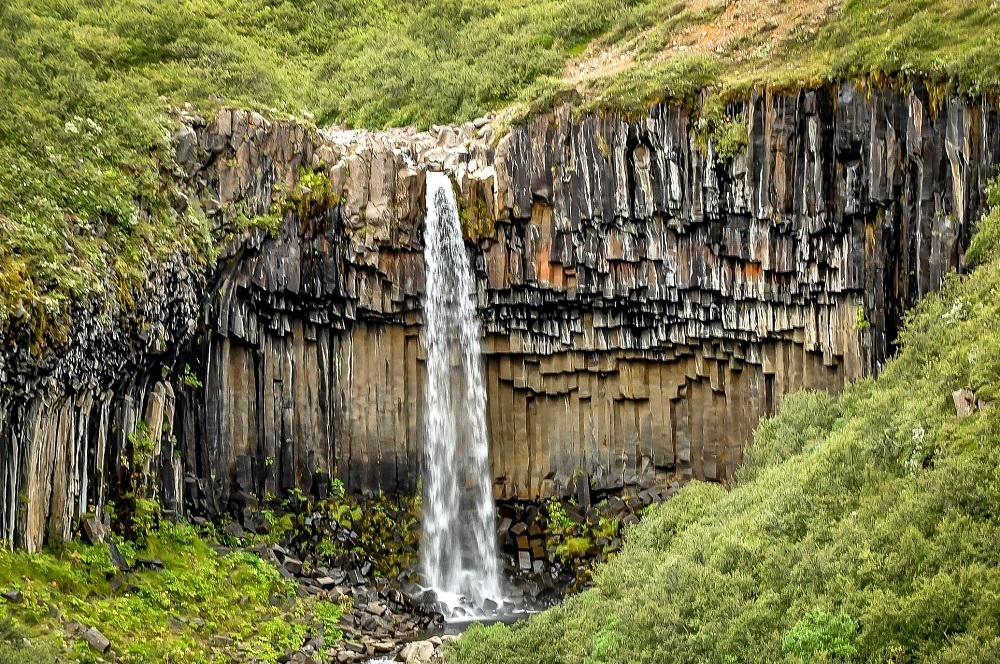
Waterfalls mean water, so the best time to catch waterfalls at their best is during the months of late April through June (with the heaviest rainfall) or anytime during the Spring-Summer months after a heavy rainfall. Also, there will be fewer crowds during this time.
Along with the Northern Lights, this island is a world-class spot for incredible whale watching. Optimal times for catching the whales in action is mid-June through the first week of September, however sightings do happen anywhere from April through October. Tours are available at several places around the island, including Reykjavik as well as the “whale capital” of Husavik in the north.
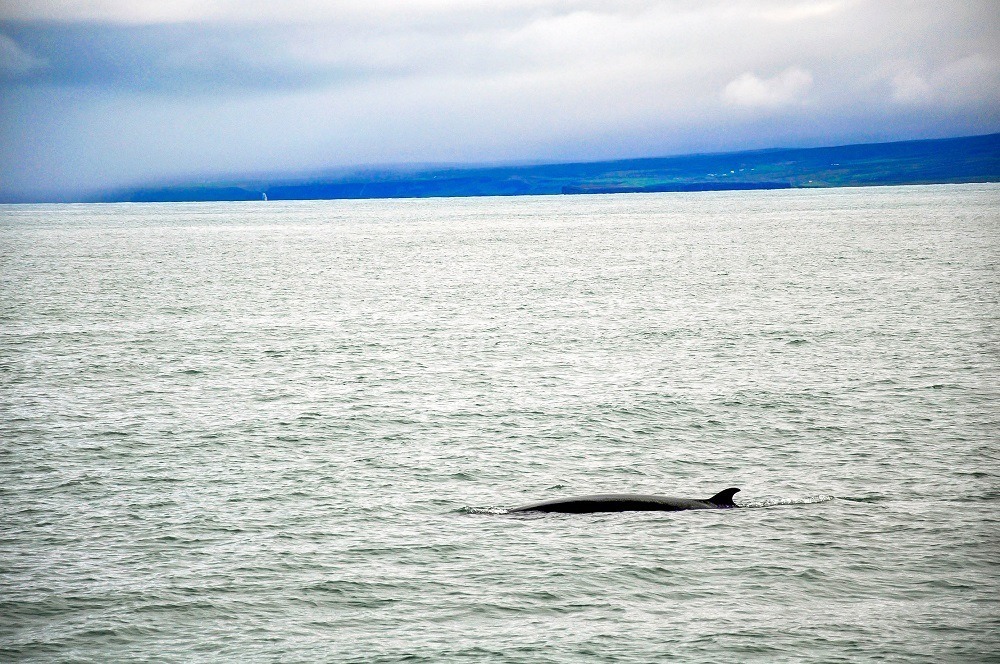
For the most pleasant mild weather, come to Iceland during the high season of July and August. With not quite as much daylight as in June, the days are still long, with the most sunshine and chance to explore the stunning landscape and all the attractions on the island.
If you are looking to save some dollars, travel in the low season of late October through early December, and then again from mid-January through March. Avoid the holiday season as this is when prices skyrocket. However, if you’d also like the weather to be a bit warmer, the shoulder season is good: mid-May through mid-June, and September through mid-October.
If you’d prefer your visit to be relatively uncrowded, the best time to plan your trip is during the months of March, April, May and September. Many people consider the shoulder seasons of spring and fall as the best time to visit.
Having said that, the capital of Reykjavik always sees its fair share of visitors, so to simply venture away from the city to more remote areas is ideal. The west fjords, northern and the east see far fewer visitors.
Icelanders celebrate some unique holidays all their own, and also some traditional ones (in a unique way!) Here are the highlights:
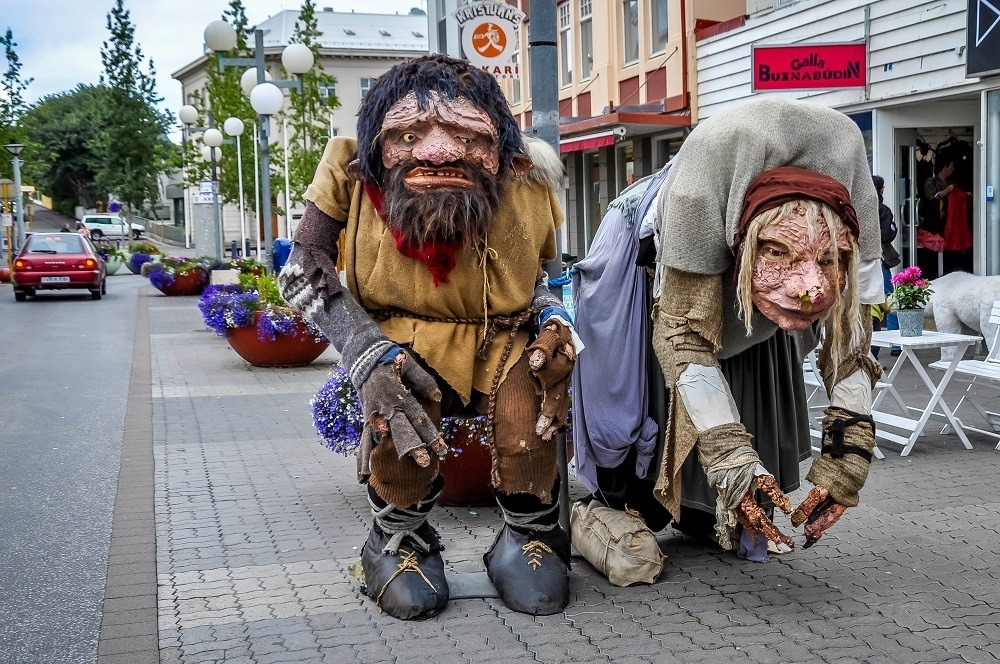
- New Year’s Day – 1 st of January, where most businesses are closed until the 3 rd.
- 12 th Night – 6 January, the last day of Christmas.
- Bóndadagur – in late January, known as ‘Husband’s Day’.
- Thorrablót – mid-January through mid-February, a feast of traditional foods.
- Konudagur – just after Thorrablót , this is ‘Wife’s Day’.
- Bolludagur – two days before Lent, this is another culinary holiday known as ‘Bun Day’.
- Sprengidagur – celebrated on Shrove Tuesday in February, another holiday where locals feast on lamb and pea soup.
- Öskudagur – known to other Westerners as Ash Wednesday, where children dress in costume and sing in shops for sweets.
- Iceland National Day – June 17, Independence Day.
- Verslunarmannahelgi – the first weekend of August, where many locals go camping
- Christmas – this a big holiday, with lots of holiday lights and events throughout the month, including special appearances by the Yule Lads.
- New Year’s Eve – the celebrations continue, and this is the only day that fireworks are legal.
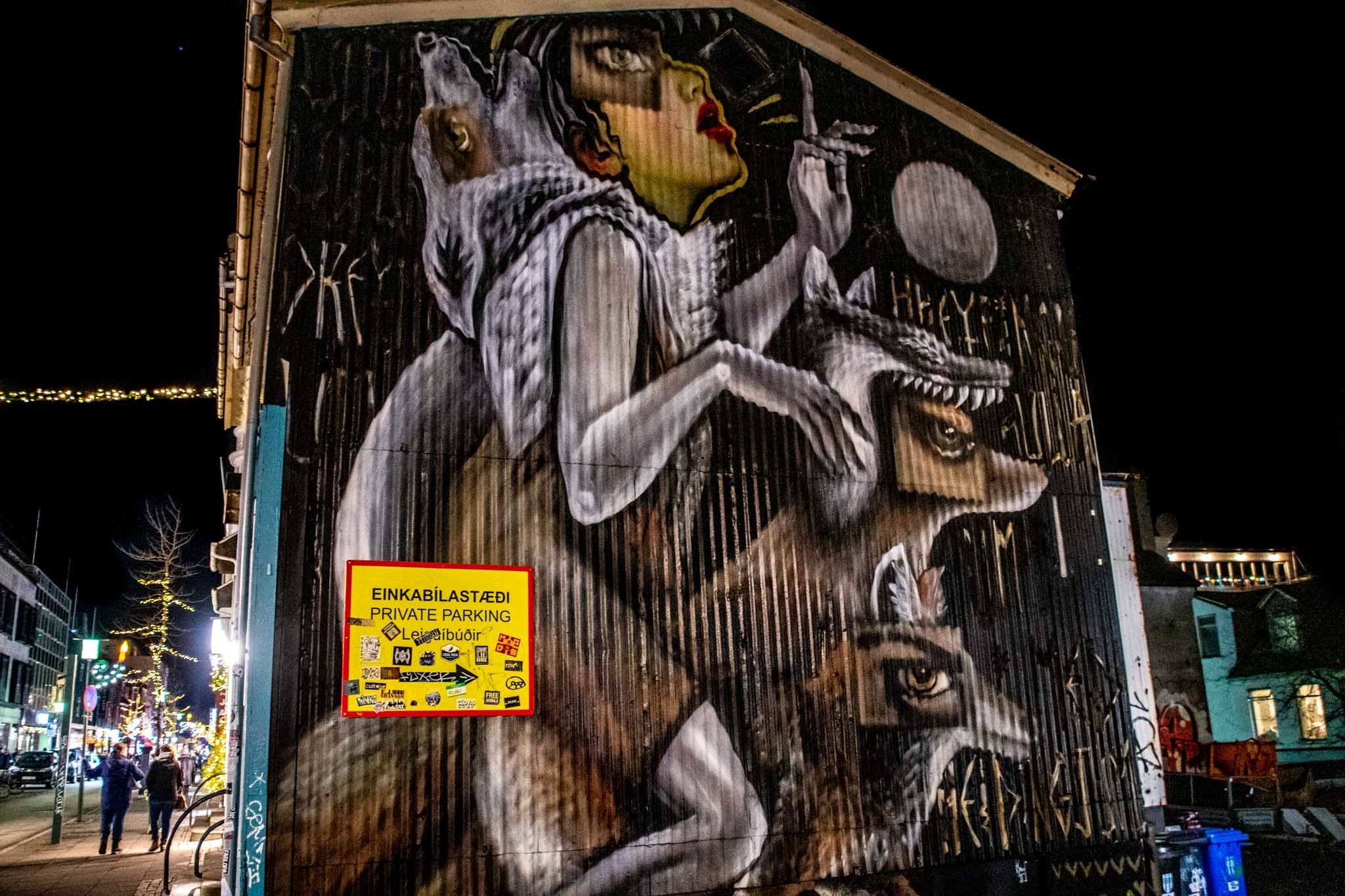
- Winter Lights Festival – held during the first weekend in February, winter spirits are lifted with light-art installations and cultural events.
- Food and Fun Festival – in late February in Reykjavik, chefs throughout the city celebrate with special menus and a televised competition.
- Reykjavik Folk Festival – three days of music in early March celebrates live folk music.
- Reykjavik Art Festival – taking place every other year in mid-May, it features a variety of national and international theater, design and dance.
- Seafarer’s Day & Festival of the Sea – the first weekend of June honoring local fisherman.
- International Viking Festival – the largest and oldest in the country in mid-June, celebrating all things Viking.
- Innipukinn Festival – held in late July, this is an annual music festival with top acts.
- Reykjavik International Film Festival – in late September, showing a wide range of films from around the world.
- Iceland Airwaves – over 3 days in early-November, it showcases some of the country’s best alternative music .
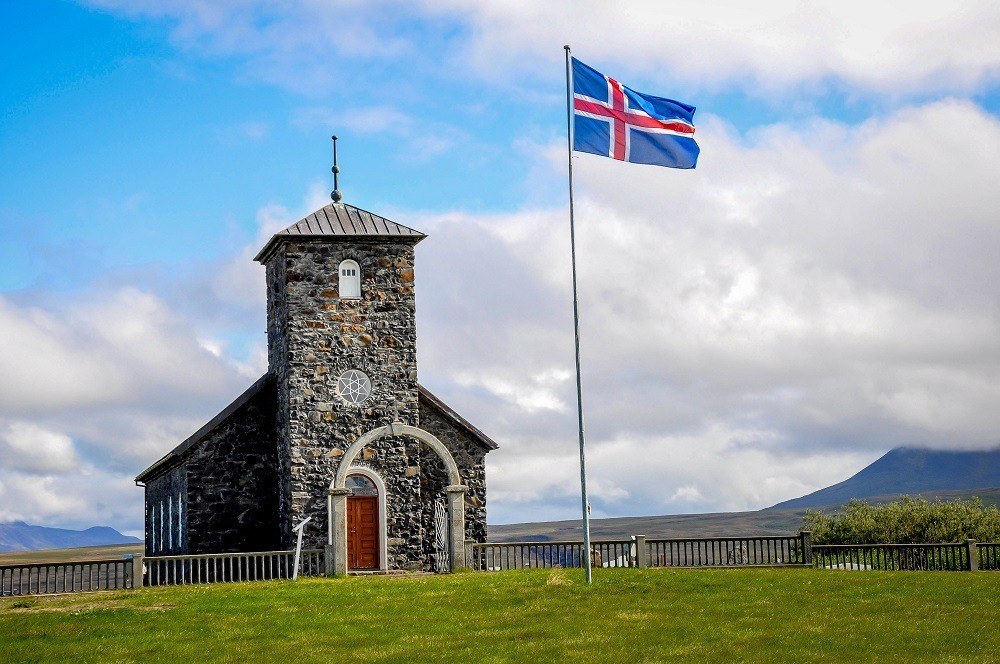
Have you visited before? What where your impressions? When is the best time to visit Iceland?
Lance Longwell is a travel writer and photographer who has published Travel Addicts since 2008, making it one of the oldest travel blogs. He is a life-long traveler, having visited all 50 of the United States by the time he graduated high school. Lance has continued his adventures by visiting 70 countries on 5 continents – all in search of the world’s perfect sausage. He’s a passionate foodie and enjoys hot springs and cultural oddities. When he’s not traveling (or writing about travel), you’ll find him photographing his hometown of Philadelphia.
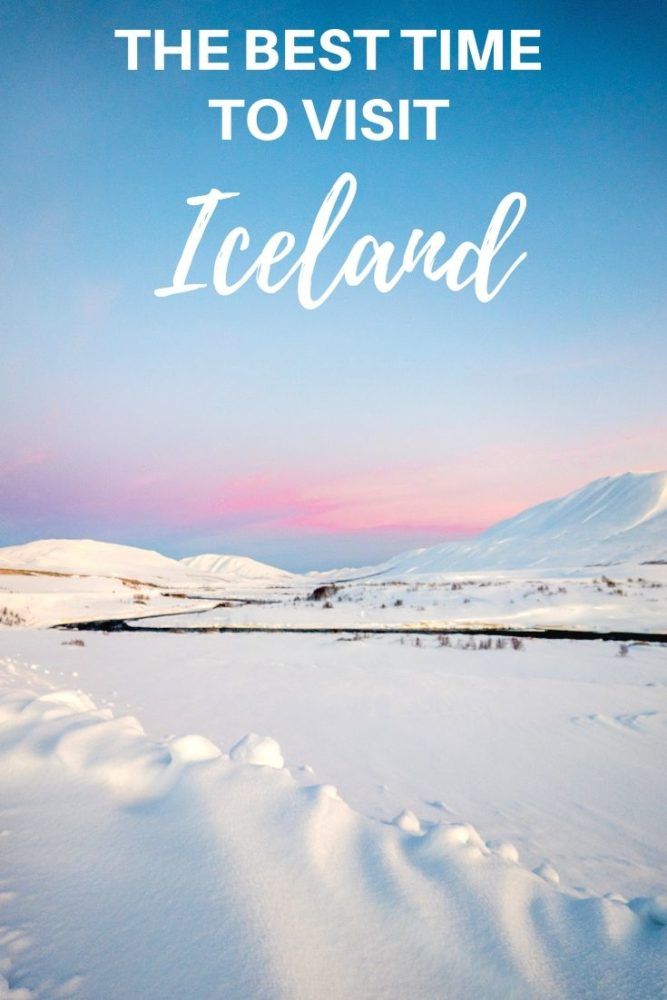
Share this post:
This site uses Akismet to reduce spam. Learn how your comment data is processed .
Thursday 22nd of June 2023
My wife and I are debating when to visit Iceland for the first time-our time is limited to either to the last week of August or the first or second week of September. We are into culture , archeology, nature and cuisine. We are not into hiking or water sports. What time frame should we travel??
Lance Longwell
Friday 23rd of June 2023
If it were me, I'd probably go the 2nd weekend in September. Slightly fewer tourists and restaurant availability will be better. There are a number of cultural events in the fall (film festival, etc.).
Discover what’s new before everyone else:
Get our free on-the-go Nordic hotspot map!
The Nordic Nomad
Regions & islands
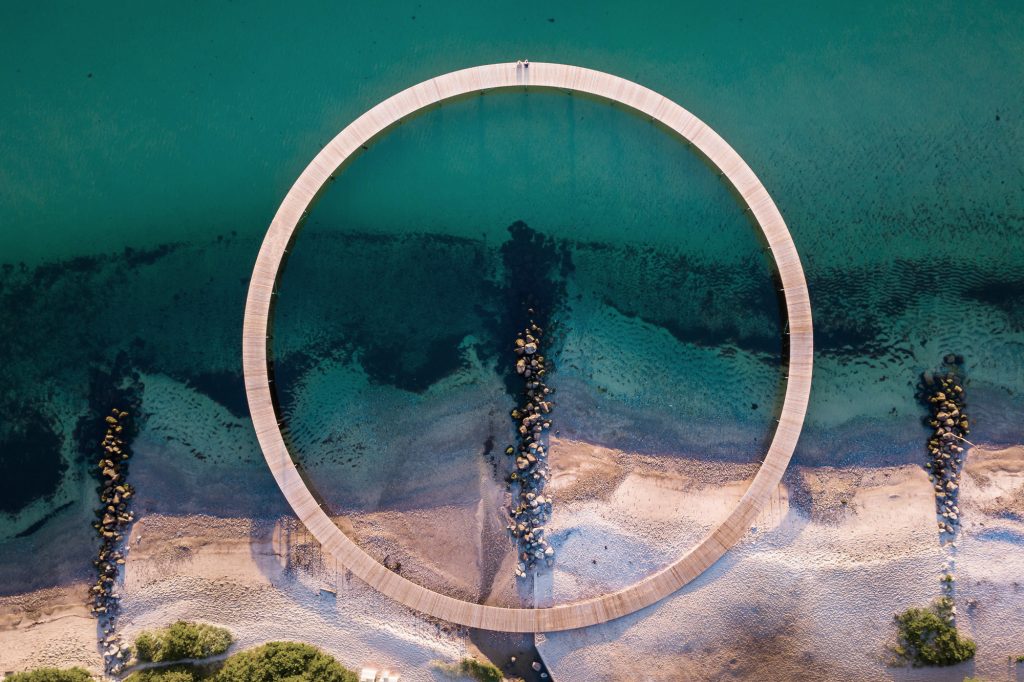
Cities & towns
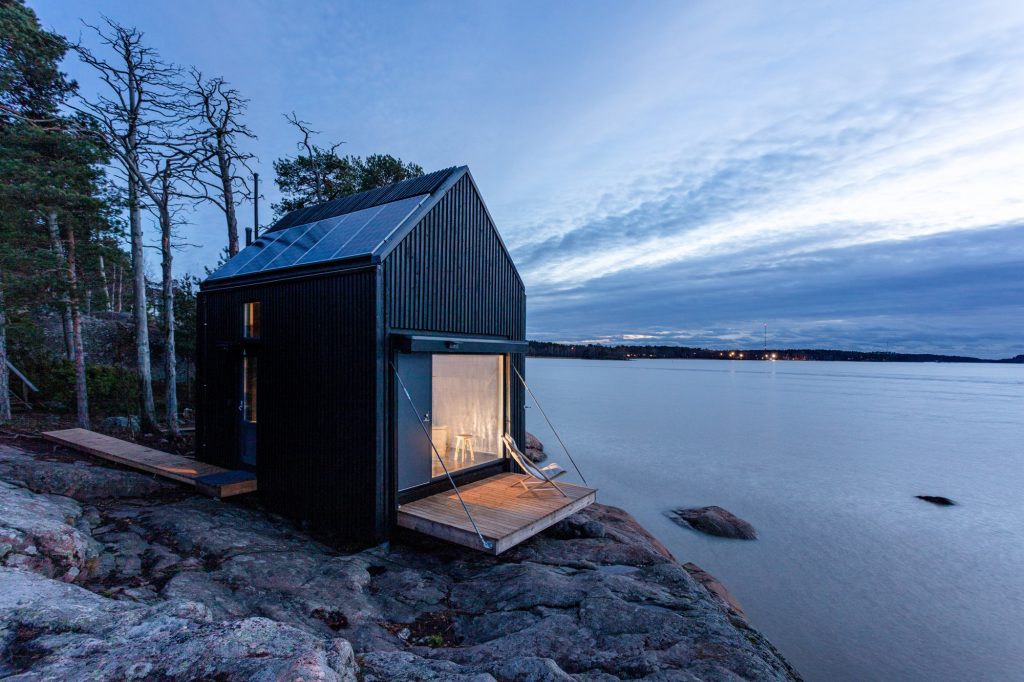
The in-depth guide to choosing the best time to visit Iceland
The Nordics • Nordic lifestyle • The in-depth guide to choosing the best time to visit Iceland
How to determine the best time to visit Iceland

What is the best time to visit Iceland?
Wondering when’s the ideal time to explore Iceland? From our adventures and the tales we’ve gathered, there’s no one-size-fits-all answer. Iceland is enchanting year-round, but your perfect season depends on what experiences you’re chasing.
Summer brings those endless days we’ve all heard about, with the sun barely setting. It’s a dream for explorers; we have trekked through the Highlands bathed in 24-hour daylight, feeling like the day just doesn’t end. It’s prime time for hiking, wildlife watching and soaking in the vibrant life of Icelandic towns and countryside.
However, autumn and spring offer their own charm. We have witnessed Iceland draped in the golden hues of autumn and spring’s fresh bloom – both are breathtaking. These seasons boast fewer visitors, making it easier to enjoy Iceland’s stunning landscapes at a more relaxed pace. The temperate weather is perfect for those who prefer milder adventures.
Winter, on the other hand, transforms the island into a snowy paradise, ideal for those magical Northern Lights we have all dreamt of seeing. Though the days are short, they’re incredibly sweet, with snow-covered landscapes and cosy nights. We’ve marvelled at the Northern Lights – the aurora borealis – dancing across the sky, a truly unforgettable experience. Make this a must-experience on your bucket list.
So, when’s the best time to visit Iceland? It hinges on your preferences. Let’s explore the options be delving into what each season has to offer.

What can I expect from Iceland in spring?
When you think about visiting Iceland in spring, you’re essentially signing up for a front-row seat to nature’s grand reopening act. This period, stretching from April to June is a whole experience filled with burgeoning life and longer days, tempered by the lingering kiss of winter’s chill.
Weather and temperatures
The spring season introduces a milder climate, with our thermometers often reading between 0°C to 10°C (32°F to 50°F). Although the tail end of winter might surprise us with a snow shower in April, by the time June arrives, we’re greeted with longer, sunnier days. This unpredictable weather underscores the importance of packing layers, a tip we always share with fellow travellers.
Exploring the regions
Our ventures into the Golden Circle during spring reveal a quieter, yet equally majestic side of Þingvellir National Park, Geysir Geothermal Area and Gullfoss Waterfall. The reduced crowds afford us more space to fully immerse in the beauty and grandeur of these sites. The South Coast, too, becomes a beacon for us nature lovers, with accessible attractions like the striking black sand beaches of Vik and the serene Jökulsárlón Glacier Lagoon, where the sight of drifting icebergs is simply mesmerising.
In spring, we also find the trails beckoning us for more adventures. The paths in Þórsmörk, accessible a bit later in the season, offer breathtaking views that we can’t help but recommend to anyone seeking to connect with Iceland’s wild side. Additionally, the return of puffins to the cliffs is a spectacle we eagerly anticipate each year. These charming birds add a vibrant touch to the cliffs, making spring an ideal season for bird watching.
Seasonal highlights
The power of Iceland’s waterfalls in spring cannot be overstated. Fed by the melting snow, waterfalls like Seljalandsfoss and Skógafoss swell, their roar and might a testament to nature’s force. Our journeys here are always humbling, reminding us of the raw beauty Iceland holds. For those of us keen on ornithology, spring’s the season when bird life flourishes, offering unique opportunities to observe Iceland’s avian residents up close.
Spring in Iceland not only invites exploration through its transitioning landscapes but also offers a variety of activities that make the most of the unique climate and natural beauty of this season. Beyond the hikes and wildlife watching, spring is the perfect time for road trips around the island, where the roads are less burdened by winter’s snow, allowing for smoother travel to distant attractions. It’s an opportunity to dive into the geothermal pools scattered across the country, which seem even more inviting against the cooler air.
Iceland spring pros and cons

What can I expect from Iceland in summer?
Summer in Iceland, spanning from June to August, is a chapter of endless daylight and nature in full bloom, offering an unparalleled experience for those who venture to this island nation. Based on our adventures and the shared experiences within our community, here’s what summer in Iceland has in store.
The summer months welcome warmer temperatures, typically ranging from 10°C to 15°C (50°F to 59°F), occasionally reaching up to 20°C (68°F) or more on the warmest days. This season bathes the island in nearly 24 hours of daylight, especially around the summer solstice in June, creating the extraordinary phenomenon of the Midnight Sun. This extended daylight allows us, and indeed all visitors, to maximise our explorations and adventures across the island.
Summer is the prime time to delve into all corners of Iceland, with every region accessible to explore. We often recommend the Westfjords for those seeking untouched wilderness; here, the dramatic landscapes and bird cliffs, such as Látrabjarg, are in their most glorious state. The Highlands also become reachable, offering hiking trails through otherworldly landscapes that are inaccessible at other times of the year.
Our journeys have taken us along the Ring Road encircling the island, where each stop presents a new marvel, from cascading waterfalls and geothermal springs to picturesque villages. The long days mean you can wander through the lava fields of Landmannalaugar or the serene beauty of the Eastfjords well into the evening.
One of the most magical aspects of summer in Iceland is the opportunity to experience its vibrant wildlife. Whale watching becomes particularly rewarding, with tours departing from Husavik or Reykjavik offering chances to see these majestic creatures in their natural habitat. The puffins, too, are a sight to behold, particularly in the Westman Islands, where they nest in large colonies.
Festivals and cultural events pepper the summer calendar, from the Secret Solstice music festival in Reykjavik to traditional celebrations in small towns and villages. These events offer a glimpse into the rich tapestry of Icelandic culture, something we always encourage visitors to immerse themselves in.
The endless daylight of summer encourages all forms of outdoor activities. Whether it’s hiking, kayaking, glacier tours, or simply enjoying the natural hot springs scattered across the country, the opportunities are as endless as the daylight. For us, one of the greatest pleasures of summer in Iceland is the chance to connect with nature on such an intimate level, from the quiet of early morning walks to the stillness of nightless nights.
Read the full article on summers in Iceland .
Iceland summer pros and cons

What can I expect from Iceland in autumn?
Autumn in Iceland, from September to November, is a season of transformation, where the landscape bursts into spectacular shades of red, orange and yellow. Our collective experiences have shown us that this period offers a quieter, yet equally captivating, alternative to the bustling summer months.
As autumn progresses, the temperature starts to cool, ranging from about 5°C to 10°C (41°F to 50°F) in September and dropping to around 0°C to 5°C (32°F to 41°F) by November. This season sees a mix of crisp, clear days and the return of darker evenings, setting the stage for the Northern Lights’ return. We always remind travellers to dress in layers, as the weather can shift quickly, and to be prepared for both rain and the occasional snowfall as winter approaches.
Autumn is an excellent time for us to explore the less-trodden paths. The countryside, adorned in autumnal hues, offers breathtaking scenery, making it a perfect time for photographers and nature enthusiasts. The Ring Road remains a popular route, with fewer tourists and more opportunities to enjoy the sights at a leisurely pace.
The Snæfellsnes Peninsula, with its dramatic coastline and the iconic Snæfellsjökull glacier, becomes a place of stark beauty under the autumn sky. Meanwhile, the Eastfjords, less visited than other parts of the country, offer tranquillity alongside spectacular fjord landscapes.
Autumn marks the beginning of the Northern Lights season, a phenomenon we eagerly anticipate each year. The darker nights provide a canvas for this celestial dance, with viewing opportunities increasing as the season deepens.
This season is also rich in cultural experiences, with various harvest festivals and events that allow us to delve deeper into Icelandic traditions. It’s a time when the country celebrates its bounty, and we often join in the festivities, from apple picking in the North to enjoying the new season’s first catch in coastal towns.
Hiking remains a popular activity in early autumn, with trails in the national parks offering stunning vistas of the changing foliage. It’s also an ideal time for hot spring visits; soaking in a geothermal pool surrounded by autumn’s palette is an experience unlike any other.
Whale watching continues into the early part of the season, and sea kayaking among the fjords offers a unique perspective on the country’s rugged coastline. For those of us drawn to the night sky, chasing the Northern Lights becomes a captivating pursuit, with various tours and spots around the country known for their optimal viewing conditions.
Iceland autumn pros and cons

What can I expect from Iceland in winter?
Winter in Iceland, spanning from December to February, immerses the island in a magical stillness and offers a distinct kind of beauty that draws adventurers and dreamers alike. Through our travels, we’ve uncovered the serene allure and vibrant culture that define Icelandic winters.
Winter brings colder days with temperatures often hovering between -5°C to 3°C (23°F to 37°F). While it’s the darkest season, with short days and long nights, this creates the perfect backdrop for one of Iceland’s most magnificent natural phenomena – the Northern Lights. Packing warm and waterproof clothing is essential, as the weather can be unpredictable, ranging from clear, crisp days to snowy conditions.
The allure of Iceland’s winter landscape is undeniable. Reykjavik becomes a cosy haven, its streets lined with twinkling lights, offering warmth and cheer. Outside the city, the snow-covered landscapes, frozen waterfalls and ice caves offer a surreal beauty that is uniquely accessible during these colder months.
The South Coast’s waterfalls, like Skógafoss and Seljalandsfoss, take on a mystical appearance, partially frozen and framed by snow. Venturing into the ice caves beneath Vatnajökull, Europe’s largest glacier, becomes a highlight, offering a glimpse into a mesmerizing world of blue ice.
The Northern Lights are, without a doubt, one of the main draws of Icelandic winters. The extended hours of darkness provide ample opportunity to witness the auroras’ dance across the sky, a sight that continues to captivate us year after year.
Winter festivals and cultural events, such as Þorrablót, the mid-winter feast, allow us to engage with Icelandic traditions and cuisine, offering insight into the country’s heritage. New Year’s Eve in Reykjavik, known for its impressive fireworks display, is a celebration we always look forward to, embodying the community spirit and festivity of the Icelandic people.
Winter activities in Iceland are plentiful, from snowmobiling on glaciers to soaking in geothermal hot springs amidst the snow. Dog sledding and horseback riding through the winter landscape offer unique ways to explore the countryside, while skiing and snowboarding are available for those seeking a more adrenaline-fueled experience.
Iceland winter pros and cons

When are the peak and off-peak tourist seasons, and how will they affect my travel experiences?
Navigating through Iceland’s tourist seasons is akin to choosing the perfect moment for an unforgettable adventure. We’ve seen how the island transforms with the ebb and flow of visitors, shaping not just the landscape but our experiences within it.
Peak season
Summer, stretching from June to August, is when Iceland truly comes alive. It’s when we’ve basked in the glory of the Midnight Sun, marvelling at how the landscapes unfold in endless daylight. This is the season of abundance, not just in natural wonders but in the buzz of fellow travellers sharing the trails, the warmth of the locals hosting numerous festivals, and the vibrancy of Icelandic culture in full swing. While we’ve revelled in the energy of crowded sites and the lively atmosphere, we’ve also navigated the challenges of higher prices and the need to book our adventures well in advance.
Off-Peak season
The charm of visiting Iceland in the shoulder seasons – spring (April to May) and autumn (September to October) – lies in the more intimate experience of its majesty. We’ve found these months to bring a quieter beauty, with fewer tourists and more moments of serenity amidst the shifting landscapes. It’s a time when we connect more deeply with the locals and enjoy the natural beauty at a more leisurely pace, often benefiting from lower travel costs.
Winter, from November to March, holds a special place in our hearts. It’s a season that cloaks the island in a quieter, reflective mood, perfect for those of us chasing the ethereal Northern Lights or simply looking to immerse in Iceland’s winter wonderland. The shorter days and cooler nights bring their own kind of magic, one that we have embraced with warm layers and open hearts, finding joy in the festive lights and the snow-draped tranquillity.
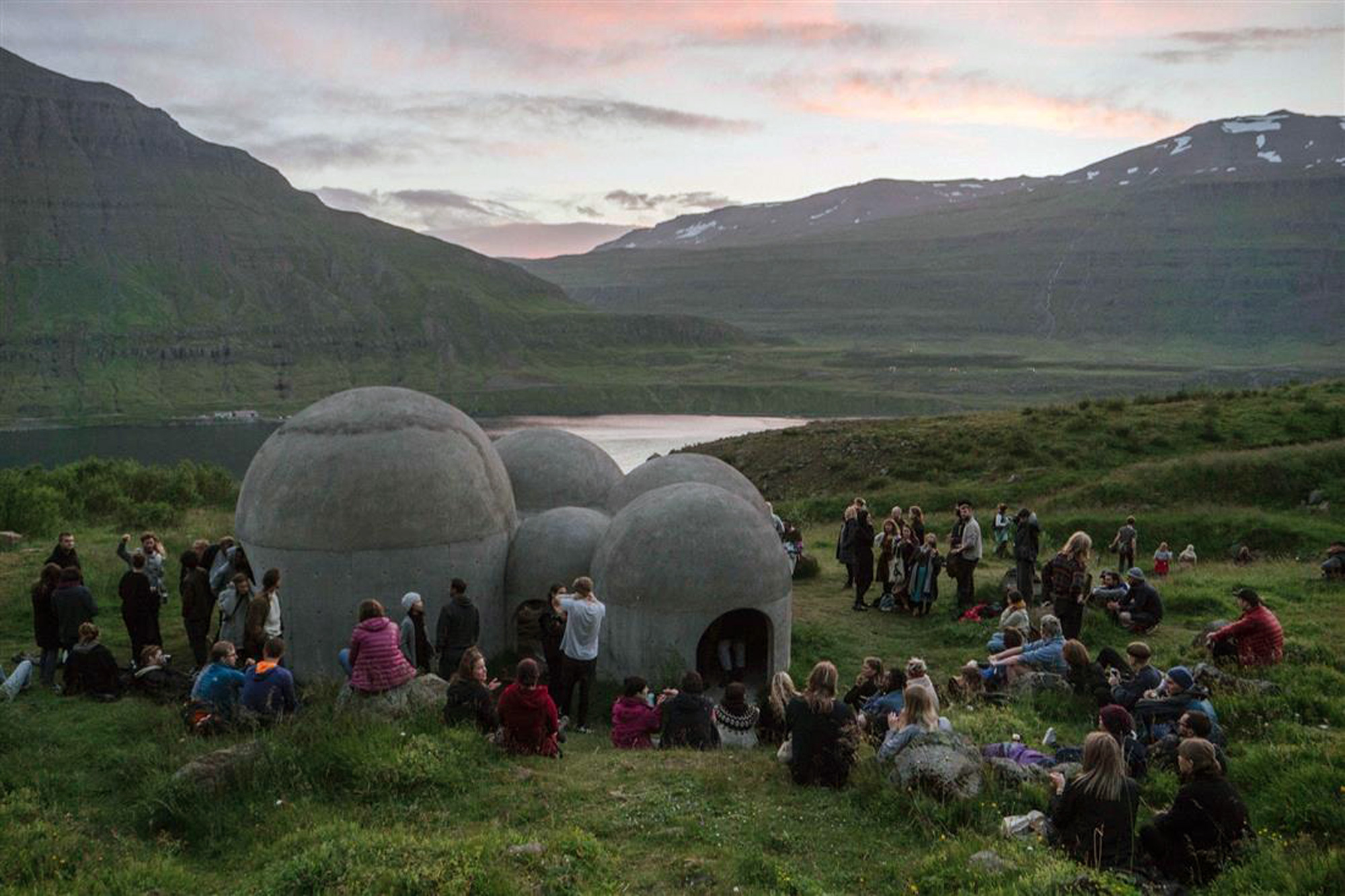
What are the best times for specific activities and festivities?
Diving into Iceland’s calendar year, we’ve discovered that each season brings its own set of activities and festivities. Whether you’re an adrenaline junkie, a nature lover or a culture enthusiast, knowing when to catch these experiences at their peak can elevate your Icelandic adventure.
In the spring, we’ve eagerly joined the locals in welcoming the return of longer days at the First Day of Summer celebration in April, a tradition rooted deep in Old Norse culture, marking the beginning of the brighter half of the year. This period is also prime for whale watching as migratory paths bring these majestic creatures closer to Iceland’s shores, particularly around the Snæfellsnes Peninsula and the North.
Summer in Iceland is synonymous with festivals that celebrate the sun that never sets. We’ve danced under the sky at the Secret Solstice Festival, an unforgettable experience that aligns with the summer solstice. The National Day on June 17th, commemorating Iceland’s independence, fills the streets with parades, concerts and family activities, showcasing a proud nation in full festive spirit.
As autumn paints the island in vibrant colours, we’ve found ourselves amidst the magic of the Reykjavík International Film Festival. It’s a time when the art scene flourishes, inviting cinephiles and creators into intimate venues for screenings of international and local films. The onset of the darker nights also marks the beginning of the Northern Lights season, turning the sky into a canvas of ethereal beauty best observed from late September onwards.
Winter brings its own charm with Christmas markets popping up in towns and cities, enveloping the cold air with the warmth of holiday spirit, twinkling lights and the scent of traditional treats. But it’s the New Year’s Eve celebrations that truly capture the essence of Icelandic winter. With community bonfires creating beacons of light and fellowship across the island and a fireworks display that rivals any around the world, it’s a welcoming of the new year that stays with you forever.

What are the recommendations if I seek to avoid crowds while still enjoying Iceland’s beauty?
Seeking the serene beauty of Iceland without the hustle of crowds is an art we’ve honed over our travels. Here are some recommendations that have allowed us to enjoy the tranquillity of this majestic land, away from the busier paths.
Exploring the less-travelled Westfjords offers a retreat into some of Iceland’s most remote and stunning landscapes. Here, the cliffs, waterfalls and fjords stand in quiet majesty, often with no other soul in sight. The roads are more challenging, but the rewards are unparalleled in peace and beauty.
Early morning or late evening excursions to popular sites like the Golden Circle can also bypass the peak visitor times, allowing for a more personal experience with these wonders. The soft light of these hours adds a magical touch to the already breathtaking scenery.
Visiting during the shoulder seasons of late spring and early autumn presents a sweet spot. The rush of summer tourists has either not yet arrived or has left and many of Iceland’s attractions retain their allure with the added bonus of quieter surroundings.
Seeking out hidden gems that are off the usual tourist radar can lead to some of the most rewarding experiences. Places like the Hvalfjörður fjord, the Berserkjahraun lava fields or the charming town of Seyðisfjörður offer beauty and solitude in equal measure.
Finally, engaging with local guides and tours that specialize in off-the-beaten-path adventures can uncover secret spots unknown to most visitors. These experiences not only support local businesses but also offer insights into Iceland’s culture and nature that can’t be found in guidebooks.

What are the best months for specific wildlife sightings?
For wildlife enthusiasts, Iceland presents an array of opportunities to observe unique species in their natural habitats, each peaking in visibility at different times of the year.
Whale watching
The summer months from May to September are prime for whale watching, especially in Husavik, often dubbed the whale watching capital of Iceland. During this period, the calmer waters and warmer weather enhance the likelihood of spotting various whale species, including the humpback, minke and even the massive blue whales. Whale sightings are more frequent in June, July and August, aligning with their migration patterns to feed in the nutrient-rich Icelandic waters.
These charming birds are a must-see, with their breeding season spanning from April to August. Notable locations for puffin spotting include the Westman Islands, home to Europe’s largest puffin colony and Látrabjarg cliffs in West Iceland. These areas allow for relatively close observation of puffins in their natural setting, especially during June to August when they are most active on land.
The Vatnsnes Peninsula in North Iceland is notable for seal watching, with the best chances of seeing grey and harbour seals along the coast. Summer offers the most reliable opportunities for seal sightings, complemented by informative exhibits at the Icelandic Seal Center, which provides insights into their habits and the best spots for observation.
For those interested in observing Iceland’s only native land mammal, the reindeer, East Iceland is the place to be. These majestic creatures are more commonly sighted around Snæfell and the East Fjords, where they migrate seasonally. While they roam the highlands during summer, they move to the warmer lowlands in winter, making them a unique sight against Iceland’s diverse landscapes.
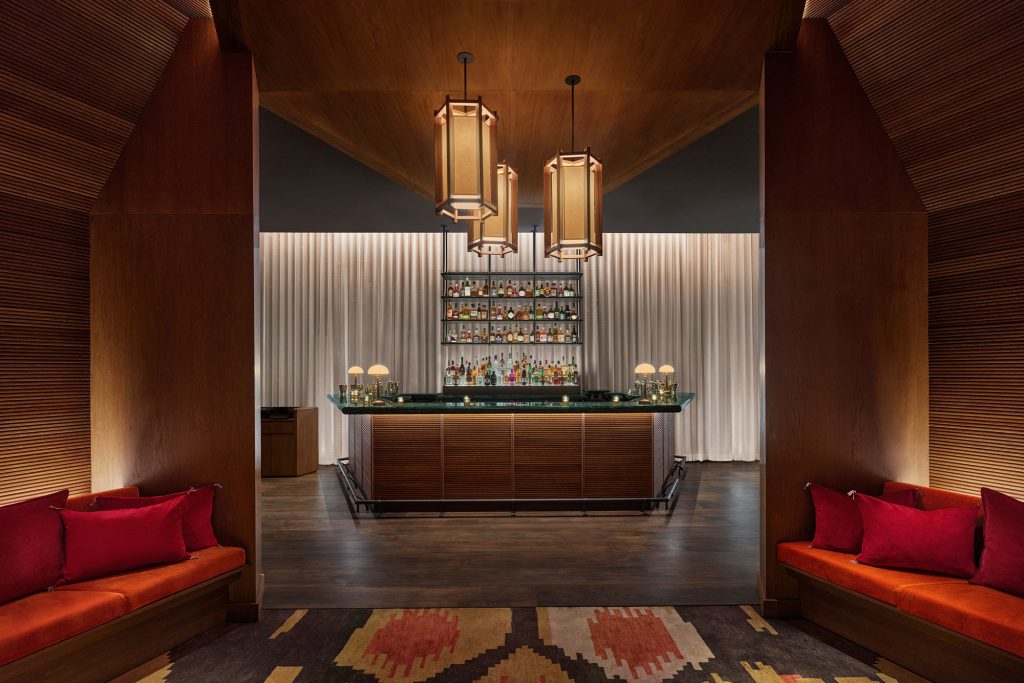
The 10 best boutique and luxury hotels in Reykjavík, Iceland

Suðurland’s stays: the 8 best hotels along Iceland’s south coast

- New openings , Stay
The 2023 hot list: the 10 best new hotels in Scandinavia and the Nordics

Highland Base in Selfoss, Iceland
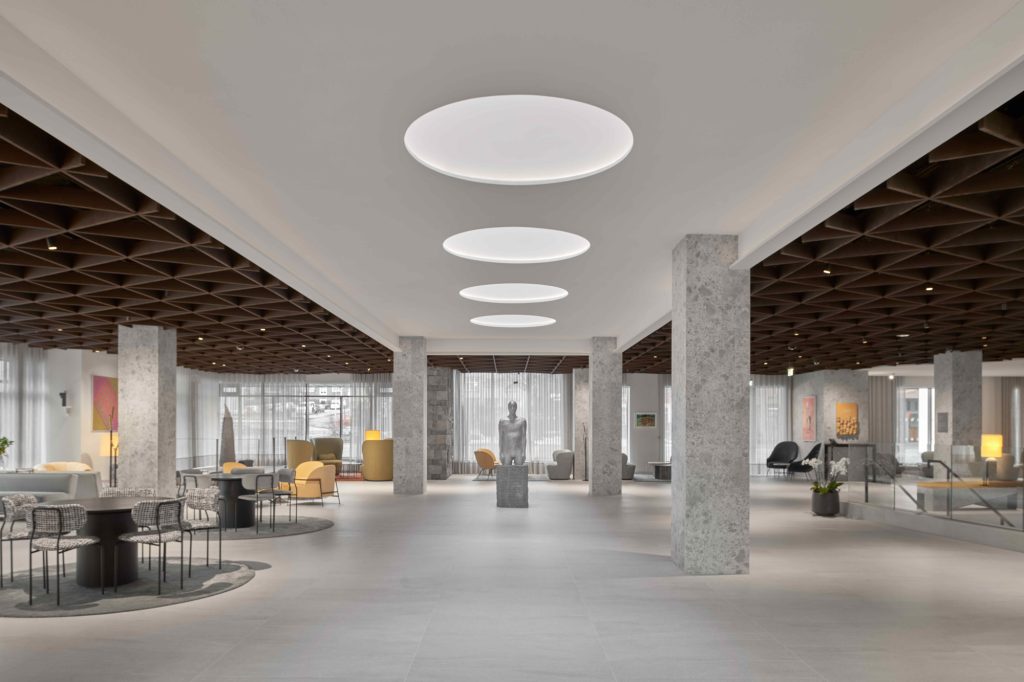
Iceland Parliament Hotel in Reykjavík, Iceland

Iceland’s most remarkable off-grid stays in nature

The Retreat at Blue Lagoon in Grindavík, Iceland

Ion City Hotel in Reykjavík, Iceland

The Reykjavík Edition in Reykjavík, Iceland

101 Hotel in Reykjavík, Iceland
Stay in the know.
Sign up for the latest hotspot news from the Nordics.
The Gatehouse at Kåseholms Slott in Tomelilla, Sweden
Before you rent: the must-read car rental guide for the nordics.

10 Danish museums with architecture as remarkable as its collections

Tekla in Copenhagen, Denmark

Sky Lagoon in Kópavogur, Iceland

Cabincore: the top 14 remote cottages and cabins in Norway
48 hours in malmö, sweden, 48 hours in copenhagen, denmark, 48 hours in stockholm, sweden, stay in the know: sign up for the latest hotspot news from the nordics.
Privacy policy
Privacy overview, get our free on-the-go nordic hotspot map.
Thanks for visiting nordicvisitor.com! For the very best browsing experience on our website, we urge you to upgrade to the most recent version of your browser . Some of our site features may not function properly on older versions.
- Travel Update
- Search Suggested Results View All Results
- EUR (€)
- GBP (£)
- Self-Drive i
- Privately Guided i
- Guided Small Groups i
- Northern Lights i
- Honeymoon & Romance i
- Ice & Snow Hotels i
- Multi-Country Tours i
- All Travel Styles
- Show all tours
- Best Sellers
- Special Offers
- Scandinavia
- Switzerland
- United Kingdom
- Book With Confidence i
- Why book with us i
- Booking Terms i
- Sustainability Policy i
- Manage Booking
- Privacy policy
Iceland Bíldshöfði 20 110 Reykjavík +354 578 20 80 View Map
Sweden Scotland View Details

Best Time to Visit Iceland: Your Complete Guide
If you’re planning a trip to Iceland or really inspired to come to this Nordic gem, you may be wondering when is the best time to visit Iceland. One of the country's many charms is being a year-round destination, but your personal choice can influence when to visit Iceland!
Whether you want to visit in winter or summer , or come for a particular interest of yours, we have it all below.
Iceland is a country that is beautiful and interesting all year long. This is why, at Nordic Visitor, our travel consultants have crafted tours for both the winter and summer seasons.
There are countless fantastic activities and sights to see and do, so depending on your interests or your available time to come, we have you covered with this useful guide.
- When is peak season?
- When is best for weather?
Exploring Iceland in summer
Exploring iceland in winter.
- Visiting Reykjavík
- Birdwatching
- Touring the Golden Circle
- Seeing the northern lights
- Experiencing the midnight sun
- Taking stunning photography
- Honeymooners
- Enjoying the Blue Lagoon and spas
- Dipping in hot springs
- Whale watching
- Attending events and festivals
- Combining Iceland and Greenland
When is the peak season in Iceland?
Peak season for travelling to Iceland is during the summer, between June and August.
If you visit at this time, it'll coincide with the mildest weather, summer holidays, the most daylight, and the most activities available. In recent years, the winter months have also been very popular, with people flocking to Iceland to see the northern lights.
- For popular itineraries around Iceland, check out these best-selling tours
- Visit in June , July or August to see Iceland at peak time
When is the best time to visit Iceland for the weather?
Iceland isn’t as cold as its name may suggest and enjoys a temperate climate all year long. That’s not to say that the weather doesn’t change quickly over the course of a single day.
For that reason, regardless of the time of year, make sure to have wind and water resistant layers on hand.
The mildest weather of the year in Iceland is, of course, during the summer months.
If you’re looking for maximum sunlight, or even to experience the midnight sun (when the sun doesn’t fully set below the horizon), the best period to come is in June, July or August.
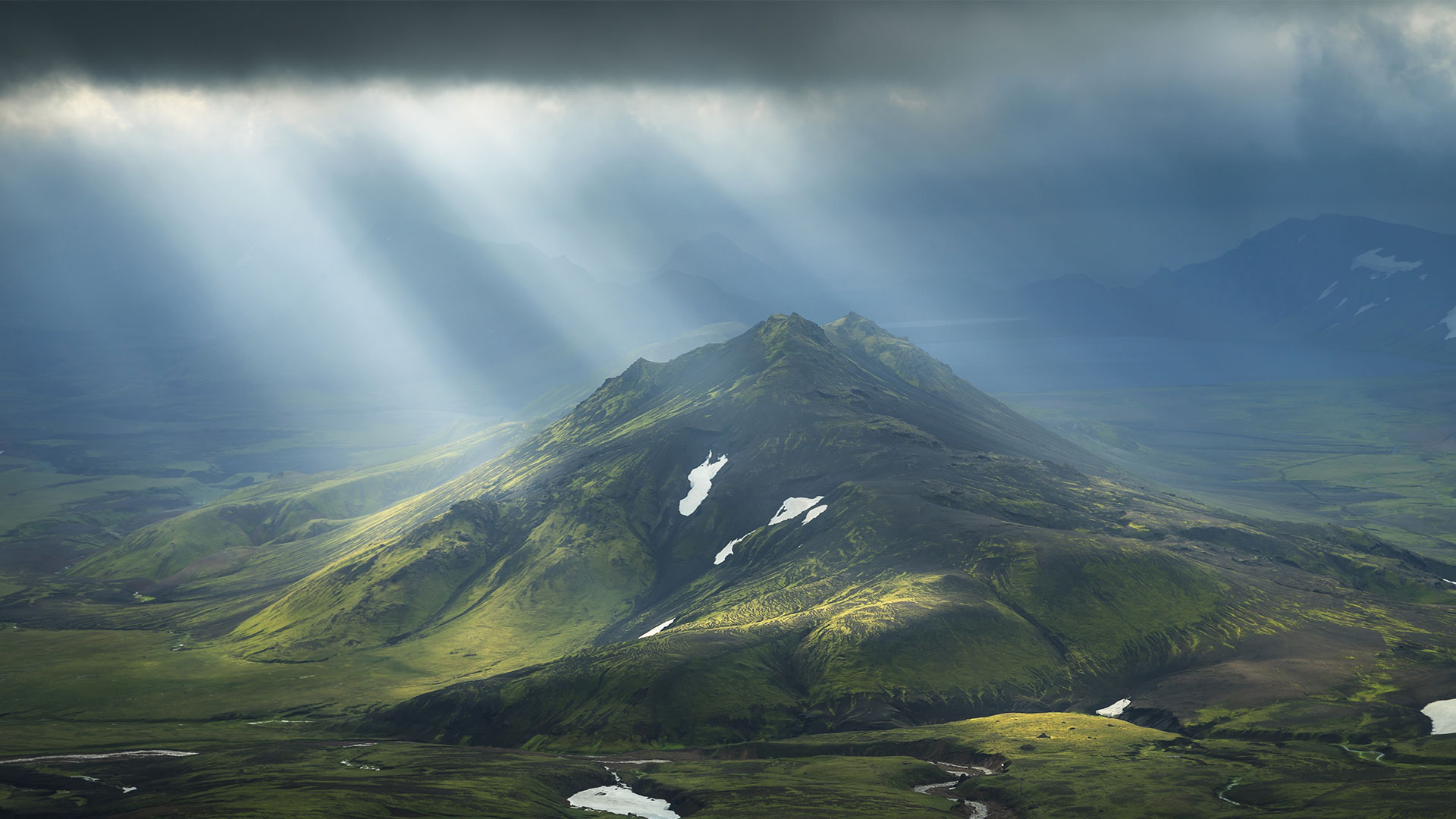
The shoulder months of May and September are also ideal for those who prefer a quieter holiday, as they usually attract less crowds. The weather is usually still mild, although a bit more unpredictable.
- Visit Iceland in May or September to enjoy the advantages of the shoulder months
Of course, maybe the perfect weather for you is a crisp and snowy day. Then the winter months will be the time when you want to come and enjoy the best that Iceland has to offer.
The months between October and April define the winter season and shoulder season. You may also enjoy visiting in late December to join in the Icelandic New Year’s festivities.
You can find out more about the weather in Iceland in our handy climate and weather conditions guide .
What is the best month to visit Iceland?
While the weather may be a big draw for some, you may want to come to Iceland for a particular month or season, whether that’s when you have holiday or when you want to enjoy a certain activity.
Summer in Iceland is from June until August. The shoulder months May and September are very popular among travellers as well.
The summer is by far the most popular with visitors. This is because, at that time of year, the temperature is generally milder, there is more daylight to take advantage of when sightseeing, and there are more activities available.
There is a lot of festivals and events as well, you can read more about that below.
You’re also more likely to enjoy a road trip in the summer as you’ll have more daylight hours to drive. If you only have a week, you can still drive the Ring Road but it will involve longer daily driving distances.
The roads are also less likely to be shut due to the weather conditions at this time.
The one downside some people may find is that, as summer attracts the most visitors, it means more crowds at popular attractions. If you prefer a quieter time, you could also visit during the shoulder season, the months of May and September .
For the most beautiful colours in nature, but also a quieter time for tourism in Iceland, I would recommend September. The fall colours are amazing and that is my favourite time to explore the country. - Helga Guðmundsdóttir, Travel consultant for Iceland
- Take a look at our summer tours in Iceland
Winter is slowly attracting more and more visitors. Quieter months such as October and November are a great time to visit Iceland. This is especially true if you want to experience the long nights and darkness of the northern parallels.
The enchanting natural phenomena that are the aurora borealis deserve attention too. As do the wintry landscapes of the higher altitudes and North Iceland.
While Iceland is a year-round destination, there are fewer activities available at that time of year, with less daylight to take advantage of them. For a road trip, we would recommend staying around the west and southern coast of Iceland. There is plenty to see here, including the Golden Circle.
You could also fly up to the capital of the north Akureyri. Experience this beautiful region and see a true winter landscape.
- Visit Iceland October and April to enjoy the Icelandic winter
- By coming in December you could join in the Christmas and New Year's Eve celebrations
.jpg)
During many months of the winter, it’s also possible to tour the famous Ring Road if that’s what you’re looking for. However, be aware that the weather can often make the roads and driving conditions unpredictable and difficult.
Driving during the winter months in Iceland is not for everyone.
This is why we do not recommend a long road trip in the winter if you have never driven on snow and ice.
If you are going to embark on a winter driving tour in Iceland, you should be comfortable driving in what can be challenging conditions. This includes snowstorms, icy roads and little daylight.
- To tour the island at your own pace, browse our winter self-drive tours of Iceland
- Don't fancy driving in winter? Choose a small group tour and let an experienced driver take you to Iceland's star attractions
If you do want to come in the winter, make sure to dress for the Icelandic weather. We have a handy packing guide here to help you with that.
When is best time of year to visit Iceland depending on your needs?
As we’ve mentioned many times again, there is no bad time to visit Iceland, there is something beautiful to see and something interesting to do all year long.
Below we’ve highlighted the most requested interests and activities and when is the best time to go to Iceland for them. Look up the one you’d love to experience while in Iceland:
Best time to visit Reykjavík, Iceland
Reykjavík is a colourful, cultural, and buzzing city throughout the seasons. From year-round festivals, to New Year’s Eve celebrations, and world-renown attractions, visiting Iceland’s capital is always fun.
The best time may depend on what you want to do during your visit. Most museums, such as Perlan the top attraction in town, open their doors throughout the year. The swimming pools, heated by geothermal power, are also visited by locals and visitors all year long.
To attend specific events, you may want to visit at a particular time. Attend Iceland Airwaves in November, the Culture Night in August, or the Secret Solstice in June. Summer has the largest concentration of festivals if you want to feel the lively atmosphere.
December is a great time to visit to get in the festive spirit. There are fireworks, bonfires and more to celebrate Christmas and mark the start of a new year.
- Enjoy a city break in Reykjavík to take part in the lively culture
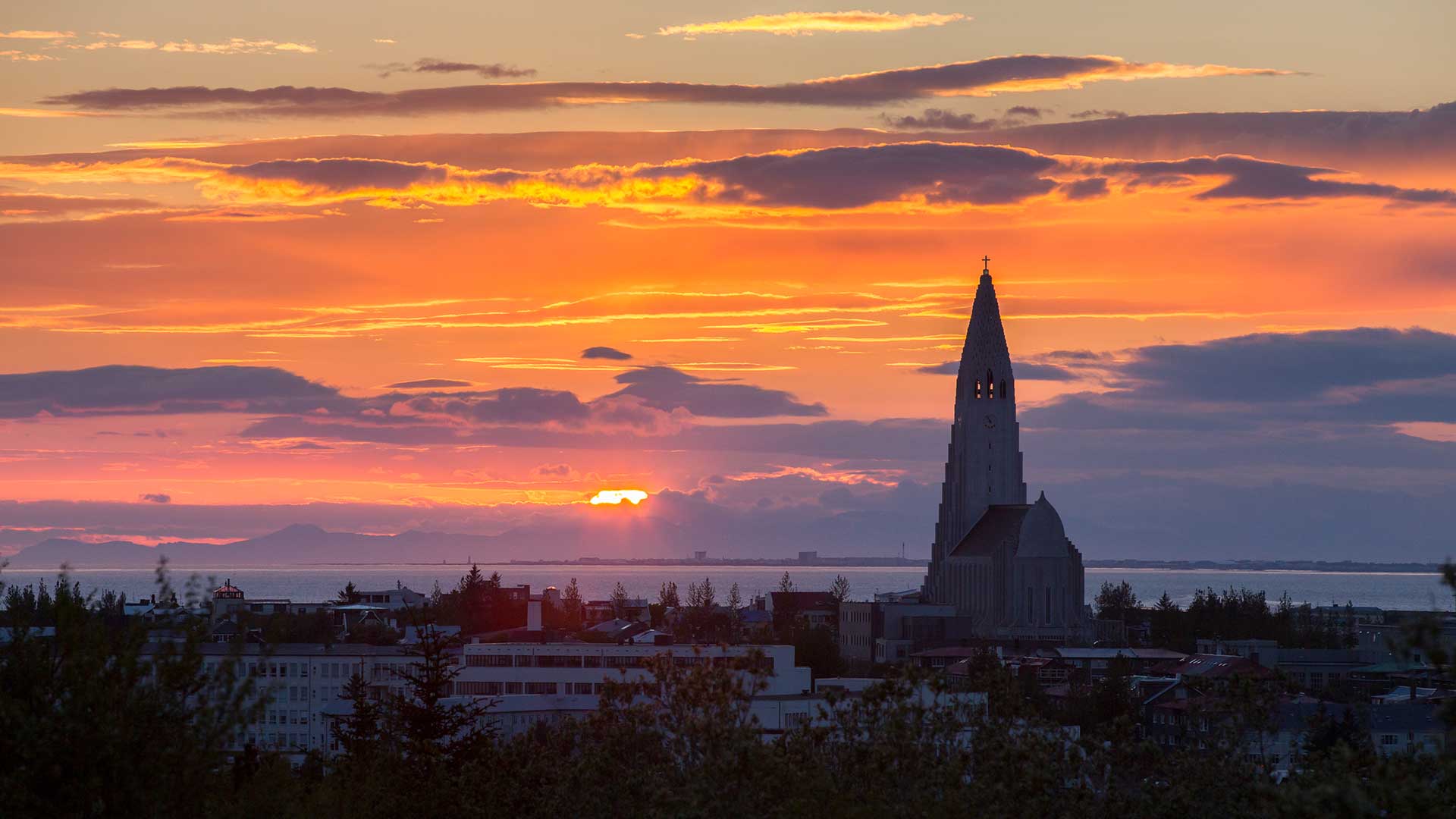
Best time to visit for birdwatchers
If you love birds and birdwatching, you will be spoiled in Iceland!
While it is possible to birdwatch all year round, many of the bird species are migratory and thus only spend a portion of the year in Iceland. This means some periods of the year are indeed better for birdwatching, or for spotting certain kinds of birds.
Generally speaking, the best time for birdwatching is considered to be between mid- April and the end of June . This is the time of the year that sees the most bird species in Iceland, and long daylight hours gives visitors ample time to admire them.
There are five species that people often seek out and we’ve made a wee guide for you:
There are 8 to 10 million puffins that spend their summer in Iceland every year! That makes up nearly 60% of the world’s Atlantic puffin population. These adorable birds can be spotted from late April, with the best period to see them being between May and early August .
Harlequin duck
Since Iceland is the only country in Europe where this colourful duck species can be found, it is an exciting sighting!
There are around 2000 to 3000 pairs that breed around the country. While they stay in the sea around the island during the winter, in the spring they travel up rivers for their nesting season. They can, for example, be found in Ölfusá river.
Barrow‘s goldeneye
90% of the Barrow’s goldeneye around Lake Mývatn and stay there year-round. Around 150 birds can also be spotted on the south coast during the winter, but they head for Lake Mývatn for breeding season around mid- March .
It’s important to note that the Gyrfalcon is a fully protected species and so, no specific location can be given about their breeding location.
While it is not commonly sighted, when it is spotted, it is usually around Lake Mývatn due to the abundance of prey, and around Reykjavík and the Reykjanes Peninsula in the winter.
If you are lucky enough to spot one, please be aware that approaching nesting sites is not permitted. Neither is sharing information about their breeding sites.
Brünnich’s guillemot (also known as thick-billed murre)
In the winter, you can spot this species in the north and east coast of Iceland. But if you happen to be here in the spring or summer, you may be able to observe a Brünnich’s guillemot around the various seabird cliffs around the country.
They are commonly spotted between the end of March and the end of July . As of where to go, we recommend:
- Lake Mývatn area, which is one of the most popular for birdwatching. That’s because it is well-known for its diverse birdlife, especially duck species (there are 14!).
- Látrabjarg bird cliff, located in the West fjords of Iceland, is the largest bird cliff in Europe at 14 kilometres long and up to 441 metres high. There you can get a closer look at millions of nesting sea birds, such as puffins, razorbills and guillemots.
- Hafnarhólmi in Borgarfjörður eystra offers visitors the perfect opportunity to see puffins.
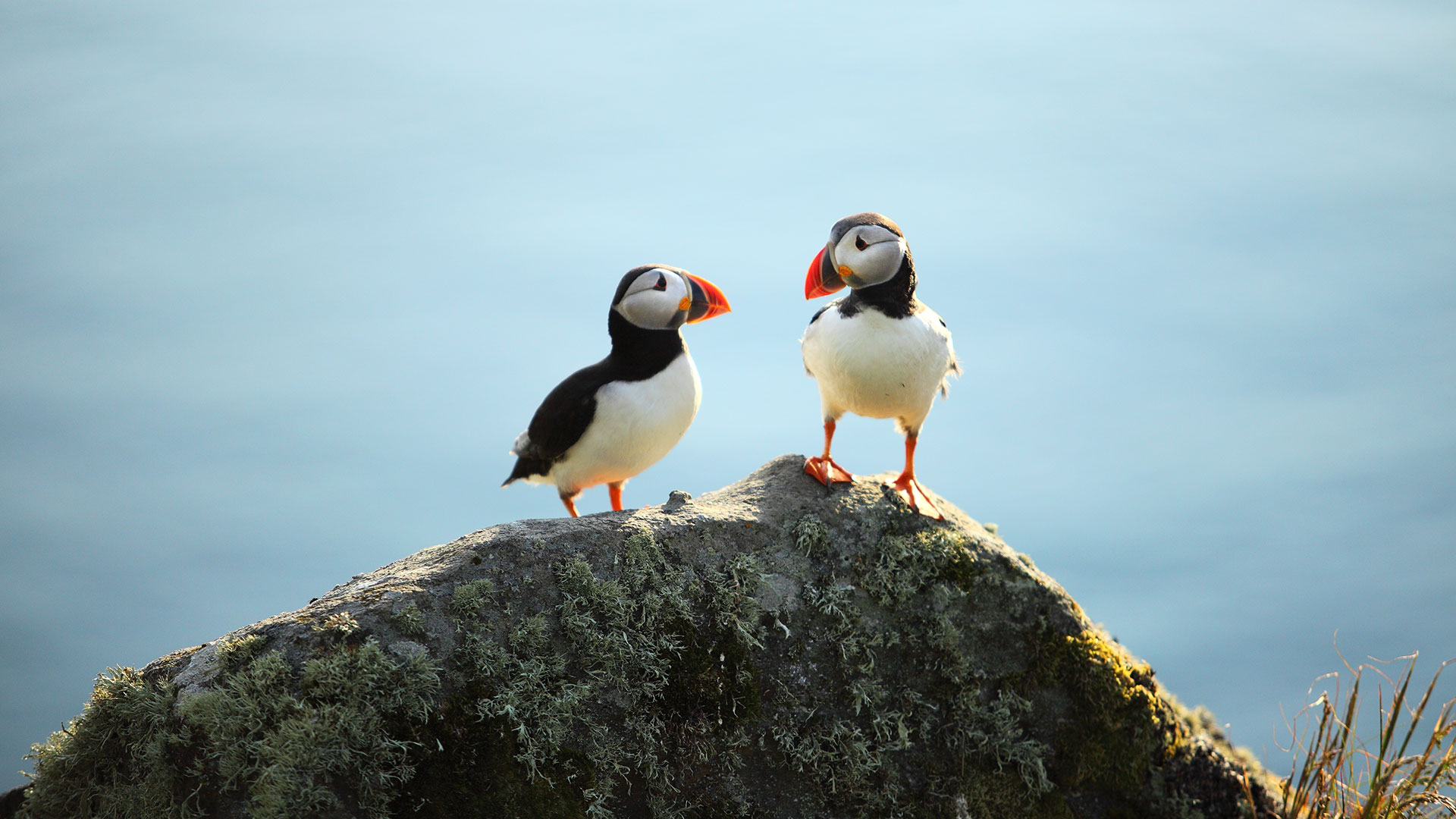
Best time to visit Iceland's Golden Circle
We would recommend visiting during the shoulder season to have the best experience of the Golden Circle and its attractions.
Even though, it is worth mentioning that the Golden Circle is beautiful at all times of the year. In the winter, the landscape will be enchanting, dusted in snow and frost. In the summer, you can enjoy longer walks in the landscape and spend more time at each site.
However, at the peak of summer, you may find that you’re not alone at Þingvellir, Strokkur, or Gullfoss.
Indeed, as they are the closest sights to Reykjavík, they are easy to visit on a city break. It means these locations are usually more crowded than others, especially so at the height of summer.
For a bit of peace and quiet, visit on either side of the summer, in April, May, September or October.
- To travel along the Golden Circle and other iconic sights, look up these classic holidays to Iceland
Best time to visit Iceland for hiking
Hiking in Iceland will be an unforgettable experience as the mountains aren’t just beautiful, but also full of stunning trails. It is also extremely dependent on weather due to the accessibility of those hiking trails.
The best time to visit Iceland for hikers will be between May and September. It is during these summer months that the trails are accessible and when there is the most daylight to take full advantage of the trails and Iceland’s natural beauty.
Hiking in the highlands of Iceland is often limited by the opening of the road leading into the highlands after winter. This is all dependent on weather conditions and location, but will normally open from mid-June.
This also means that some hiking trails high up the mountains may still have snow in May. It is not recommended, as an example, to hike to Stórurð in May because it is usually covered in snow at that time.
Please always be careful as a hiker to not put yourself in danger and always be ready for the weather conditions.
My favourite time to hike in Iceland is in midsummer when everything is green and lush. It can be even better if it’s raining, then the fragrance of nature is so fresh. During this time of year, the highlands turn into a fairy tale and the options are endless. Hills, lava fields, river banks... It doesn’t matter, it’s simply gorgeous! –Perla Magnúsdóttir, Travel consultant for Iceland
- To take on hiking or other adventurous endeavours in Iceland, check out our active tours
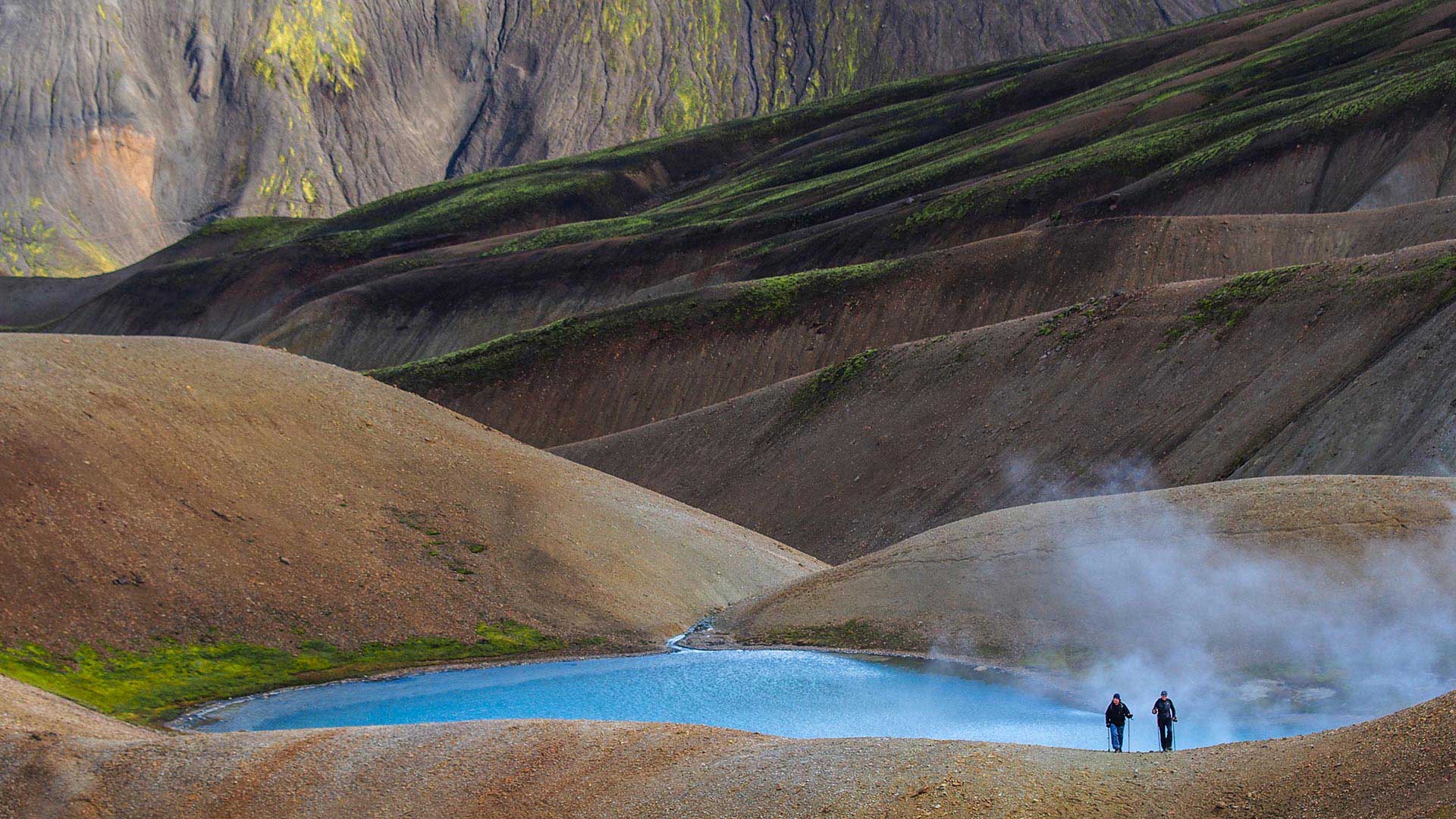
Best time to visit ice caves in Iceland
To explore and experience the surreal atmosphere of an ice cave, come in winter. Between mid-November and early March, you can book an adventure inside the Katla ice cave, located inside the Kötlujökull glacier. You could also walk through parts of the largest glacier in Iceland, Vatnajökull .
Visit the second largest glacier on the island, Langjökull, with the Into The Glacier experience. This is a man-made tunnel taking you into the depths of the glacier.
Or, if you’re coming in summer and still want to experience an ice cave, pop by the Perlan in Reykjavík. This must-see attraction offers you the chance to walk through an artificial ice cave, made as a replica of a real glacier.
Best time to visit Iceland for northern lights
Aurora borealis are one of the most wonderful natural phenomenon to witness and many visitors come to Iceland just for this!
If this has always been on your bucket list, the season to see them is from mid-September until the middle of April, when darkness makes it more likely. But as these are naturally occurring, it means no one can guarantee you will see them.
Sighting depends both on northern lights activity and weather conditions, because it requires both dark and clear skies. You can read more about the northern lights and how best to capture it on our dedicated travel guide .
- Browse our northern lights tours in Iceland
- Related : explore these northern lights tour packages for other Nordic countries
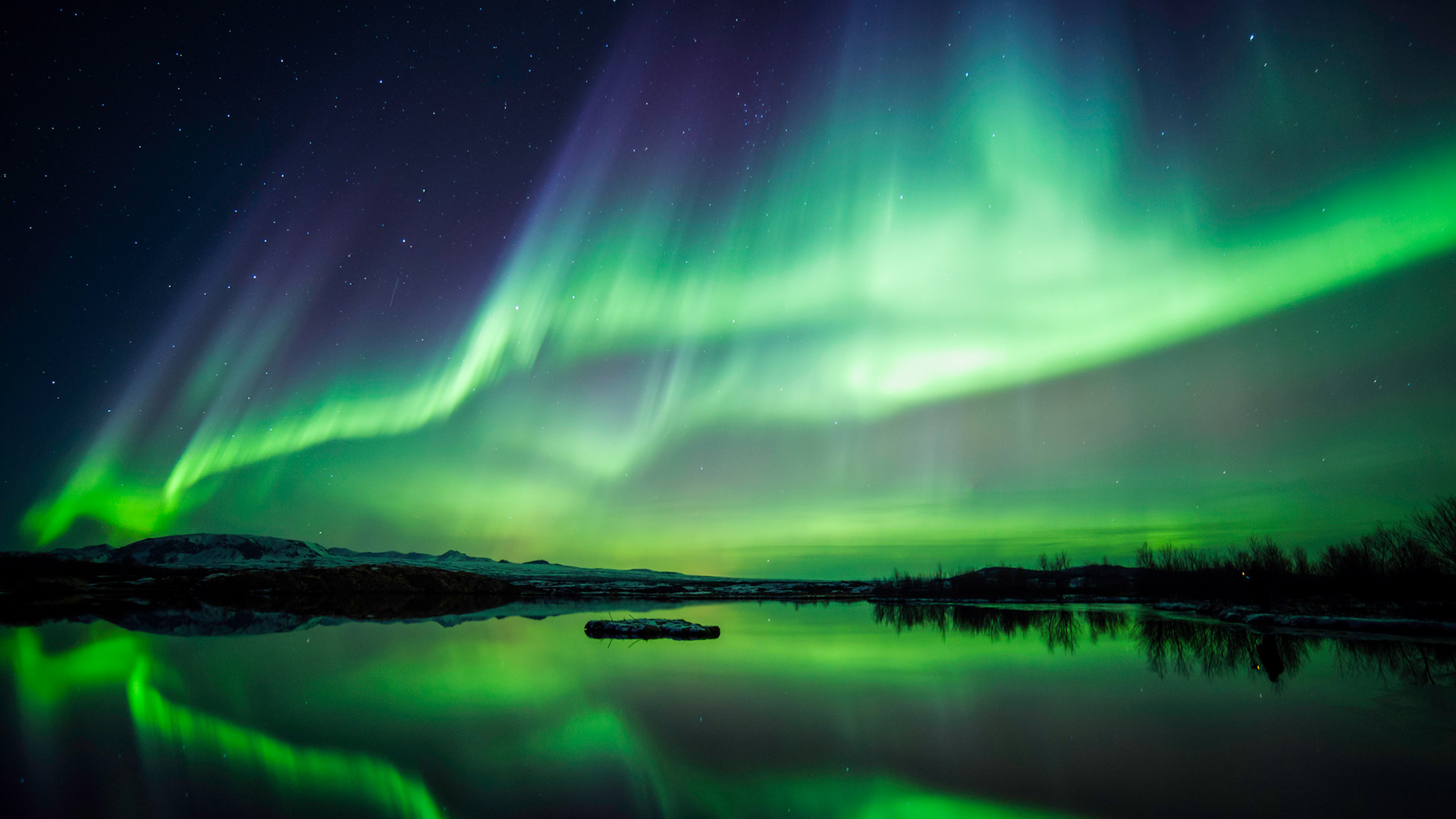
Best time to visit for the midnight sun
To experience the midnight sun, you must visit Iceland during the height of the summer, between May and July. The longest day of the year is at the summer solstice on the 21 June, which means this is when midnight sun peaks in Iceland.
Although you may want to bring an eye-mask to sleep!
- To experience this phenomenon, check out our midnight sun tours in Iceland
Best time to visit Iceland for photography
Photographers will love Iceland regardless of the time of the year, month, or location. The Icelandic landscapes are breathtaking and extremely photogenic, if we can say so ourselves!
Moreover, when the weather is on your side, the light in Iceland is great for photographers!
During the winter months, photographers who look for wintry landscapes and snowy mountain tops will have plenty to enjoy. There is also one added bonus to winter photography in Iceland: blue and golden hour being during the day!
Yes, due to its location in the north, in the winter the sun doesn’t rise very high in the sky. This creates a golden hour that lasts for the duration of daylight (all dependent on the exact date).
Location wise, if you want to take some photos in the east and north of the country, you may want to visit during the summer and shoulder season, when the roads are more accessible and reliable.
And fear not, photographers will also be spoiled for golden and blue hour during the summer! At the peak of the summer months, they both can last for hours!
- Travel with a private, local guide at the wheel to see highlights of Iceland and take stunning photos on the way
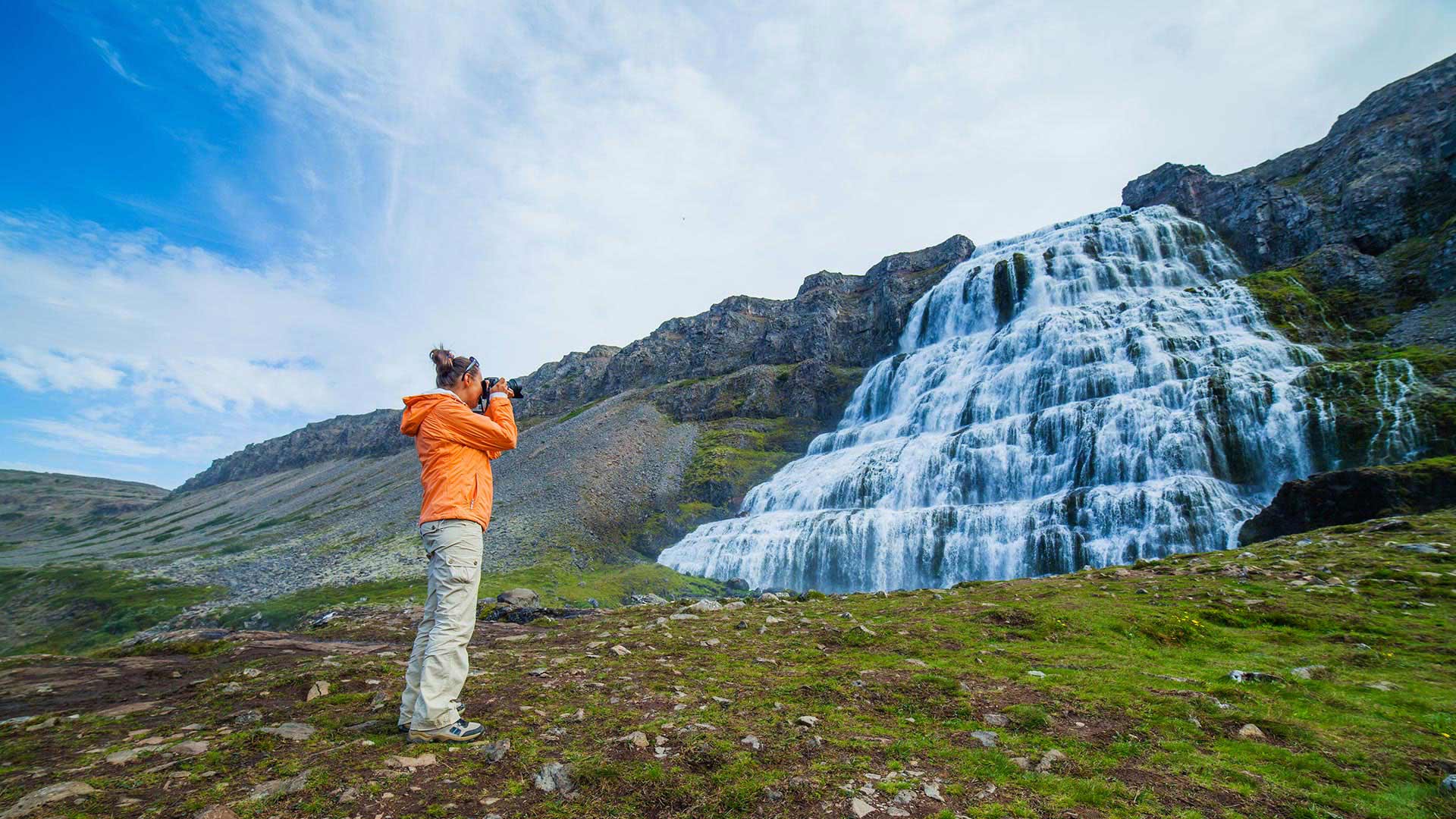
Best time to visit Iceland for families
Coming to Iceland with your family may depend on school or work holidays, or what you’re looking for as an experience. Do you want to see the northern lights or experience the midnight sun? Look up our above categories to get a better idea.
What we do recommend is coming in the summer as there are more kid-friendly activities available at that time.
This includes whale-watching (it is also available in winter, but the seas are rougher at that time), hay cart puffin tours, and boat tours on Jökulsárlón Glacier Lagoon . Something to interest all young adventurers!
Usually, I recommend travelling in the summer time with children, because the long daylight hours give families flexibility to stop frequently and for a longer time. - Kristín Halldóra Halldórsdóttir, Travel consultant for Iceland
We also recommend generally slower-paced tours where you can spend more than one night in one location. This is especially true in winter as you may have to change your plans last minute if the roads are closed due to the weather conditions.
- Discover amazing ways to see Iceland with your children with our family friendly tours
Best time to visit Iceland for honeymoon
Honeymoons all depend on you! What are you planning for? Straight after your wedding or a bit later, when you’ve had time to save and prepare for your dream trip?
If you’ve always dreamed of a honeymoon in Iceland, the best time to come, may depend on what you want out of it.
- Do you want to go hike up one of the iconic Icelandic mountains? Summer.
- Do you want to visit the remote Westfjords ? Summer.
- Do you want to cosy up together and admire the northern lights? Winter.
We believe that travelling in the wintertime can be very romantic! There are fewer people in Iceland at that time of year. This means there are less visitors at each highlight, like the Golden Circle, giving you more time together in a more relaxed atmosphere.
Finally, our travel consultants would recommend spending at least more than one night in the locations you’re visiting, to give you the chance of a leisurely stay with your partner.
- See our romantic and honeymoon trips around Iceland
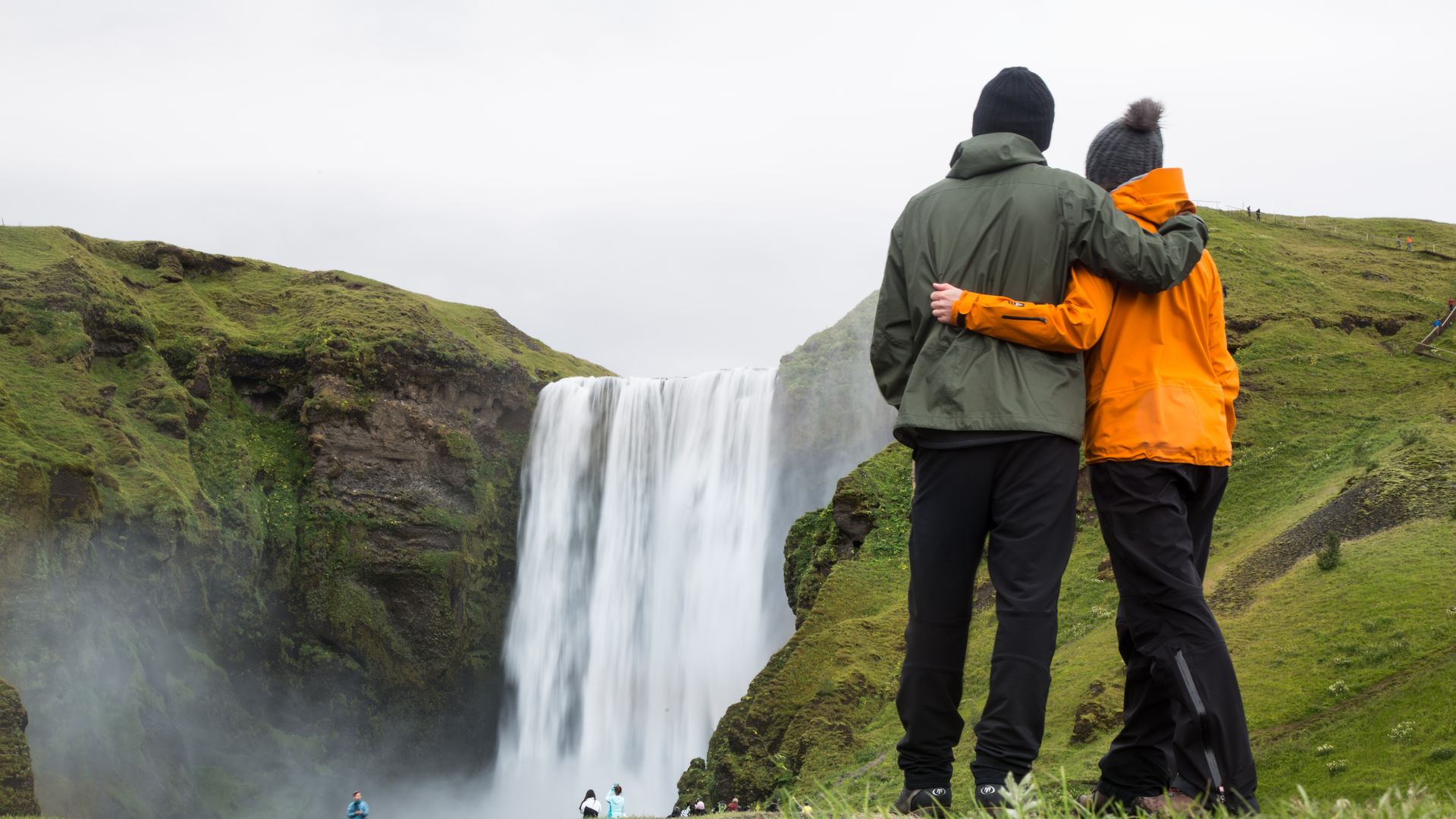
Best time of year to visit the Blue Lagoon, Iceland, & other spas
One way to take advantage of Iceland’s geothermal energy as a tourist (except for the wonderful sight of volcanoes of course!) is to go for a dip into one of the many geothermal pools.
The Blue Lagoon , Iceland’s most famous spa, is a must stop for many visitors. It is open all year round, but those won’t don’t like the cold may prefer to go in the summer.
However, it isn’t the only geothermal pool you can experience on your trip. There are many around the country, including natural hot springs and geothermally-heated public pools in the city of Reykjavík. Most are open all year long.
The winter dips won’t be for the faint hearted as you’ll have to shuffle in your bathing suit from the changing rooms into the water in the cold wind. But it's ultimately worth it!
- To take some time to enjoy the spas, look up these relaxation tours in Iceland
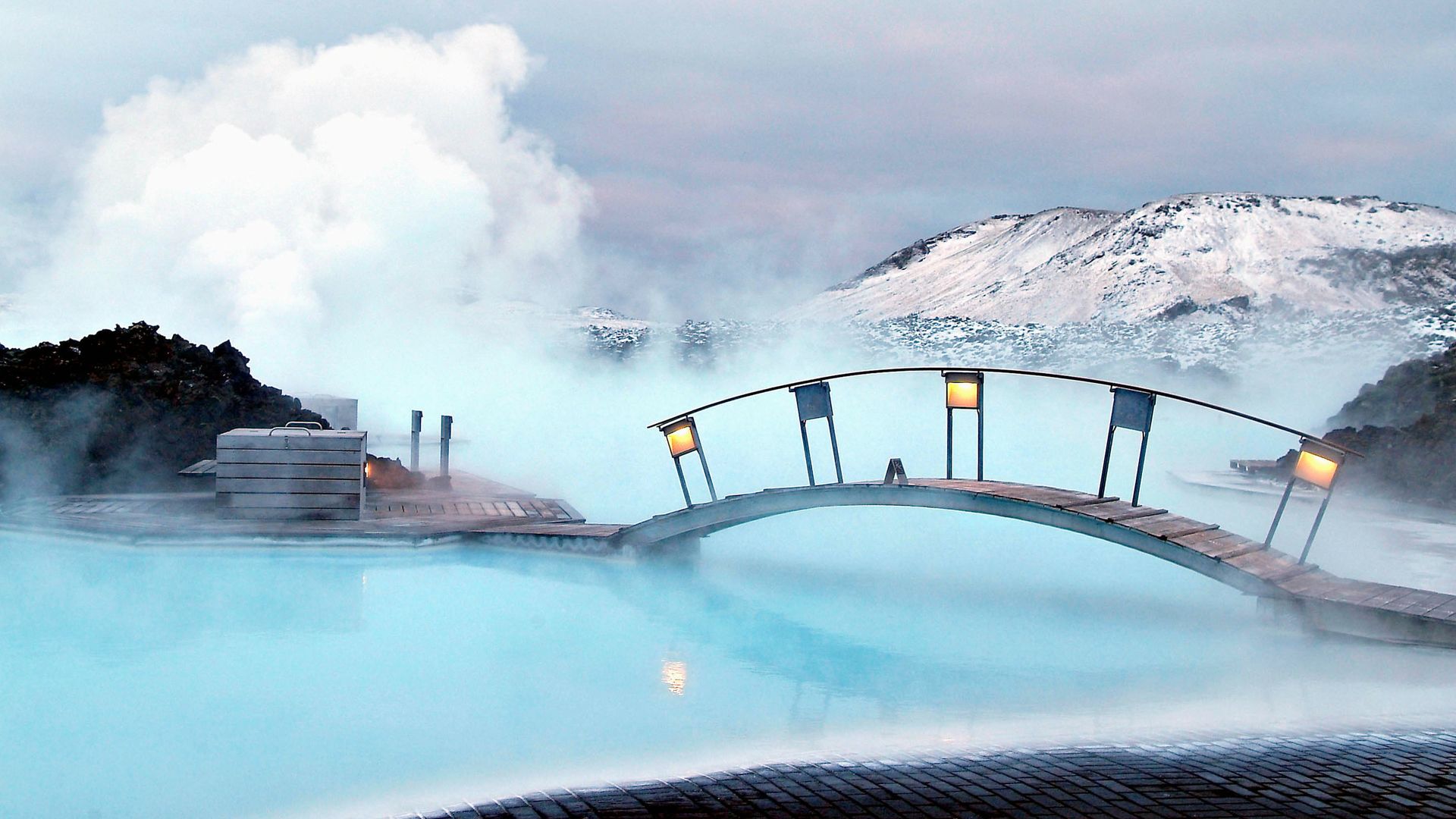
Best time to visit Iceland for hot springs
The beauty of hot springs is that they are warm all year long. That means you could visit at any time of the year and enjoy bathing in the warm, relaxing waters.
Summer is the best time to go hiking to remote areas where you’ll have hot springs to yourself. You may also find it easier to get into your swimming suit and walk in and out of the water during the summer.
The winter isn’t without its advantages though. You could warm up after a day of snowy excursions. Enjoy the difference between the cold air and hot water and admire the snow drop from your cosy spot.
- Take in the sights and dip in all the hot springs you want with an Icelandic road trip
Best time to visit Iceland to see whales
The summertime is the best time to come to Iceland if you want to whale watch. Taking usually a few hours, the excursion is a great addition to any trip around Iceland, especially for those who love to see wildlife. The best location is Húsavík in the north of Iceland.
The northern peninsula Snæfellsnes is also home to orcas if you would like to go orca watching.
Best time to visit for fun events and festivals
There are interesting festivals and events all year long in Iceland. But the summer sees most of the events of the year, as the good weather brings about a festive spirit!
There are also many festivals being held in smaller towns. Verslunarmannahelgin is the most popular weekend of the summer when there are celebrations in many towns around Iceland.
In June there are two big celebrations. The Iceland National Day marks Iceland’s independence from Denmark on the 17th June 1944. It is celebrated on the 17th June and is one of the most popular events of the summer.
The second is an outdoor music festival to celebrate the summer solstice. Held in Laugardalur in Reykjavík, the Secret Solstice Festival sees Icelandic and foreign bans perform under the midnight sun.
One festival we recommend is also Bræðslan, held in July every year in Borgarfjörður eystra in the east fjords of Iceland. It is a music festival where Icelandic and foreign bands perform.
Bakkagerði (the town in Borgarfjörður eystra) is one of the most remote villages in Iceland. It is located amongst a beautiful fjord with colourful mountains towering over the small town.
- Pair a stay in the city with some day tours in the gorgeous countryside with one of these multi-day tours in Iceland
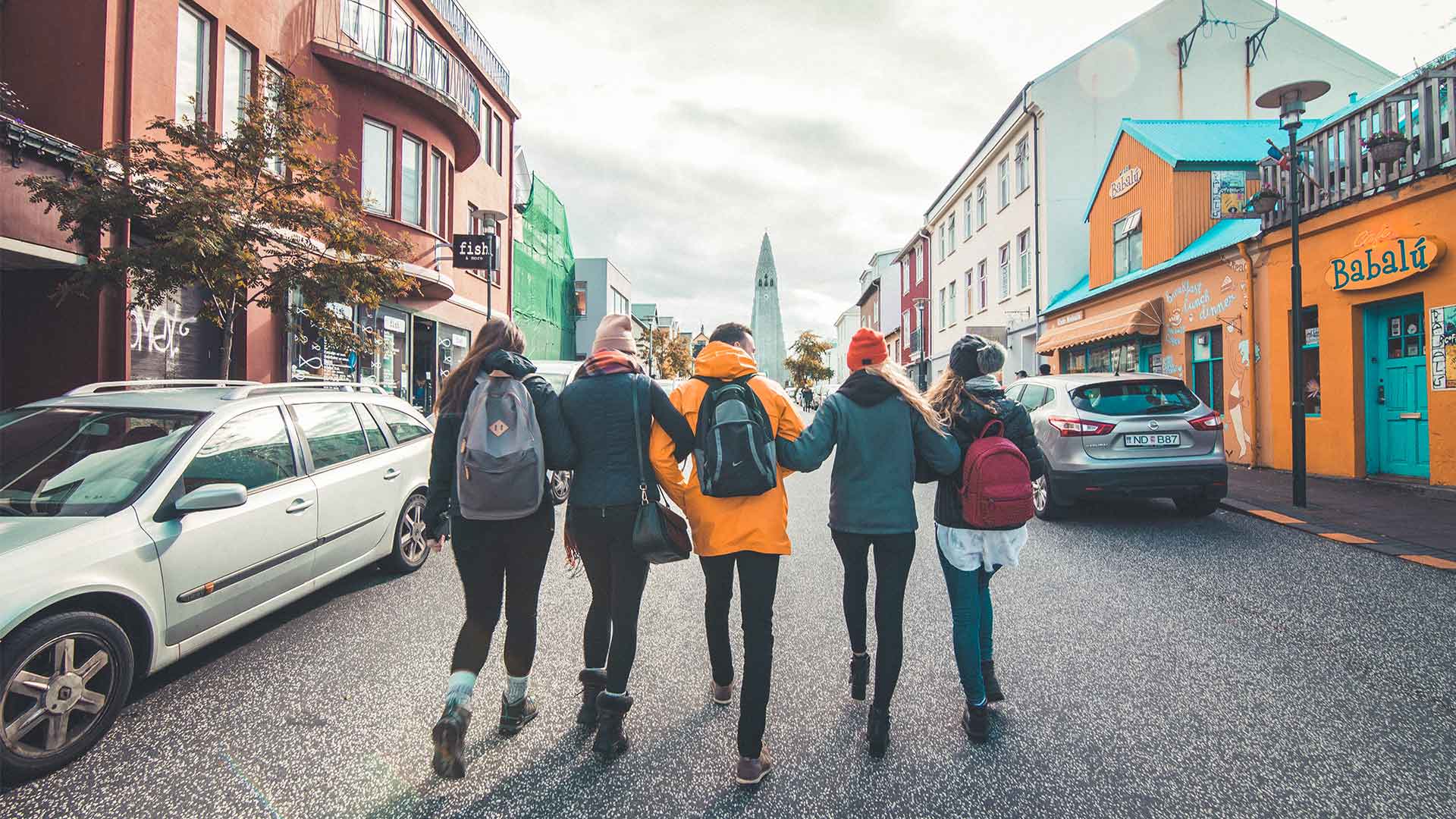
August brings a good mix of interesting events in the capital, with the Reykjavík Pride, the Reykjavík Marathon and the Reykjavík Culture Night.
The latter is especially exciting as it celebrates Iceland’s diverse cultural scene. There are countless free events through the evening, including outdoor concerts, film screenings, art and photography exhibitions, street performances and a firework display by the harbour to close the night.
There are also two major festivals in the autumn that we need to mention. The first is Reykjavík International Film Festival (or RIFF) which features films from both Iceland and abroad (the winner takes home a Golden Puffin!). It is held every year between mid-September and mid-October.
The second is one of the biggest music festivals in the country, Iceland Airwaves. It is held every year in early November and if you love discovering new bands, this is for you!
And last but not least, you could always join us in December for New Year’s Eve celebrations !
For more information about events in Iceland, look at our annual events guide .
Best time to visit Iceland and Greenland
The best time to combine a tour to both these glorious Nordic islands is to travel in summer. Although you could visit at any time of the year, flights to Greenland from Iceland can be affected by severe winter weather.
For that reason, book your Greenland and Iceland trip between June and August. At this time, you’ll also enjoy nicer weather and longer daylight hours for more sightseeing.
You can bask in the glow of the midnight sun while admiring glaciers, icebergs, and more.
- Have a true Nordic experience by pairing Iceland and Greenland in one exciting trip
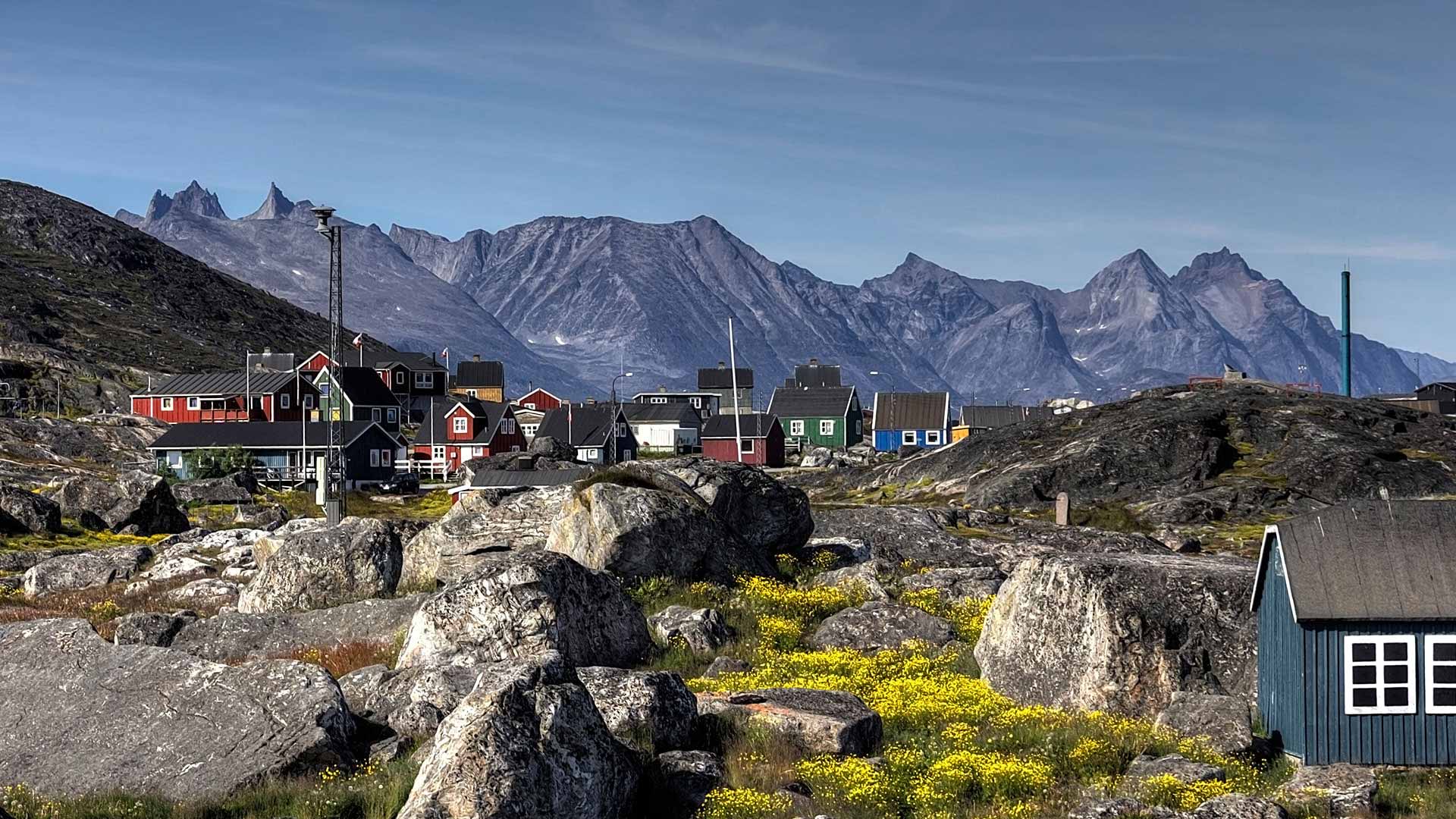
Did you find the perfect time for you to book your Iceland adventure? Or maybe you’re still not sure? Either way, get in touch with our Icelandic travel consultants . Based in Reykjavík, they’ll use their local knowledge to help you figure it all out.
All our itineraries can be tailored to you as well, so don’t hesitate to ask if you want to do something special. You can stay in a location longer, add excursions, day tours, or even spa days to your stay.
Our goal is to make sure you have a great time in Iceland!

Camila grew up between the French Canadian and Chilean cultures, before moving to Scotland in 2012. When she’s not travelling or writing about travels, Camila loves to read, run, and puzzle. Her favourite destinations have been Reykjavík, Copenhagen, Estonia and Cape Town.
Find Camila on LinkedIn .
Getting there
We'd love to give you the same amazing travel experiences as you read about in our blog! To visit the destinations and attractions mentioned in this post - and to discover a few new highlights along the way - check out these recommended Nordic Visitor tours.
ICELAND COMPLETE CLASSIC
- USD ($)
- CAD ($)
- AUD ($)
ICELAND RING ROAD EXPRESS
Best of south iceland, related posts, iceland travel: everything you need to know.
Blogs , Activity , Iceland , Guides , Things to Do
5 Best Road Trips in Iceland: A Local Expert's View
4 best ways to spend a week in iceland, 8 ways to experience glaciers in iceland.
Best time to visit Iceland

The best time to visit Iceland is between September and March to see the northern lights, or between June and August for summer activities. While travel to Iceland may depend on your desired itinerary, generally, the best time to visit is during the summer. During this time, you’ll experience warmer temperatures and long days of sunlight, known as the spectacular midnight sun. While the summer boasts green countryside and animal spotting, the winter is the best time for the Northern lights and the country’s famous geothermal spas when they may not be as busy!
However, if you’re planning a trip to see something specific, such as the puffin or whale migrations, you’ll need to visit during a specific time of year. We've broken down some main factors to consider before choosing when to travel to Iceland.
The phenomenal cosmic light show, known as the aurora borealis or the Northern Lights, is a natural event that occurs from late September to late March. The long and dark winter nights make it an ideal time to visit, however, because it is a sporadic event, a definite sighting can't always be guaranteed. You may be more likely to see the lights during the equinoxes that occur around the 21st/22nd of March and September.
Learn more about the Northern Lights
Iceland’s famous Blue Lagoon is a year-round natural geothermal pool that is said to have healing properties and is situated among a scenic Icelandic landscape. This mineral-rich seawater contains a mix of silica, algae and other bioactive elements that can be particularly beneficial for certain skin conditions.
While the lagoon is open all year, if you’re hoping to visit with slightly warmer weather, you may want to visit in the summer months (May to August). That said, many travelers love to visit the springs in the winter months to be surrounded by the beautiful snowy hills of the region while they relax in the outdoor lagoon.
The Icelandic coastline is famous for its whale activity due to the cold waters and favored feeding grounds of the local marine life. Between April to September is the best time to visit Iceland for whale watching as this is when the whales migrate north for the summer months. Keep a look out for humpback, minke, fin, sperm or even blue whales! You might even see other marine species such as orcas, dolphins, seals or harbor porpoises.
Best for: Þorrablót Mid-winter Festival and ice caves
While mid-winter weather and short days may deter some travelers, the colder months are also perfect for ice cave exploration and catching a glimpse of the Northern Lights. However, if you’d like to stay out of the weather, why not partake in the honoring of the Icelandic ancestors during the Thorrablot festival? While visiting in January, join locals on a historical Icelandic food tour that includes foods such as hangikjot (flavored smoked lamb) or brennivin (a local distilled beverage).
Best for: Winter Lights Festival and Northern Lights
February is one of the best times to visit Iceland for some exciting food and cultural events. The two festivals, Winter Lights and Food & Fun are hosted annually by the capital Reykjavik and can add spark some joy in the coldest and wettest months of the year! But keep a watchful eye out for the Northern Lights.
Best for: Northern Lights, winter sports, Iceland Winter Games and the Annual Beer Festival
The longer and brighter winter days of March make it an advantageous time for winter sports. If you’re looking to downhill or cross-country ski, snowboard, snowshoe or hike the terrain, the nearest mountain is only a 20-minute drive away from Reykjavik.
Best for: puffins and golden plover migration, The Golden Circle and smaller crowds
April marks the start of the spring season in Iceland and the breathtaking return of several local bird species, including the world-renowned puffins and golden plovers. While the locals celebrate the first day of summer shortly after April 18th, this month is a perfect time to visit for lower off-season prices and fewer tourists. Remember that there may still be an assortment of rain, snow, hail or shine, so pack accordingly.
Best for: whale watching, nature adventures and long days
May in Iceland sees the end of the cold winter months, however, temperatures still sit between 32-50,°F although there is less chance of snow. Towards the end of May, there can be up to 20 daylight hours which makes it a great time to do some fun outdoor adventures. Why not take a tour through the lava caves, hike your way across a glacier, snorkel or scuba dive in Icelan's pristine waters or even horseback ride along the countryside?
Best for: midnight sun, Hafnarfjörður Viking Festival, National Holiday of Iceland, Fisherman’s Day and the opening of some highland roads
Summer has arrived! With summer comes longer days and the peak travel season so prices are higher and attractions are busier. June is one of the best times to explore the natural wonders of the Icelandic countryside. However, with a great array of cultural, music and environmental festivals, there’s something for every interest. The end of May to the start of June is also the best time to see the famed midnight sun phenomenon in Iceland so make sure you bring a good sleeping mask!
Best for: Braðslan, nature photography and long days
July is the busiest tourist month of the year for Iceland. With sunshine, greenery and longer days, it’s a perfect time to engage in the bustling city life or explore the vibrant natural scenery. If you’re looking for a slightly less crowded time, try to book in for the start of the month before the local schools are on break.
Best for: Reykjavik Pride, Reykjavik Culture Night, National Festival, Verslunarmannahelgi, Þjóðhátíð and wilderness exploration
Visiting Iceland in August usually ensures full access to the country’s wilderness as inaccessible areas in winter are now fully open. As one of the hottest months, the weather in August - while still unpredictable at times – is best for exploring the rugged and idyllic terrain of the glaciers, volcanoes, hot springs and waterfalls of the Icelandic wild. If nature isn’t your thing, the local scene has plenty of events and attractions to fill your itinerary.
Best for: fewer crowds and mild weather
September marks the end of the busy summer months but temperatures can still fall between 40-50°F. With the bulk of tourists on their way home, you’ll find lower prices and smaller lines for attractions. This is a great time to go if you’re looking to surround yourself with great music or film. Note that some highland roads will be closed by the end of the month for winter.
Best for: Northern Lights and berry picking
See the vibrant autumnal colors that blanket Iceland during October as the temperatures lower and leaves drop. As the colder months set in, plan for the Northern Lights as they can easily be seen at this time of year, especially when away from city areas without cloud cover.
Best for: hot springs, ice caves and Northern Lights
November brings winter into full steam with a drop in temperatures and daylight hours. Winter is often the most scenic time to visit one of Iceland’s many hot springs and relax in the white-blanketed scenery. With the drop in temperatures comes the reformation of the ice caves making November a perfect time to transverse the chilly blue caves and stunning glaciers.
Best for: New Year’s Eve, frozen waterfalls, glacier exploration, Christmas villages and festive lights
Looking to party into the new year? Iceland’s eclectic music scene and picture-perfect Christmas villages can provide you with day-to-night entertainment. While December is known as one of the coldest and windiest months, the Northern Lights are often viewable during this time. Just note that some hotels, services and attractions are closed during the winter.
Let's create an exclusive trip for your group.
Chill out: Beat the summer heat with these cool escapes
Why 2024 is the best year to see the northern lights
How the Icelandic hot dog became an international icon
Iceland’s Folklore: 4 mythical creatures that make the scenery come alive
Top 12 things to do in Iceland
6 of the best hikes in Iceland
10 ways to get closer to nature with Intrepid
In sickness and in health: How I ended up getting married on an Intrepid Iceland trip

The Ultimate Guide: When is the Best Time to Visit Iceland?

Exploring Iceland: Discovering the Best Time to Visit
Have you ever wanted to experience the unique wild beauty of Iceland? This isolated island located in the North Atlantic is known for its stunning glaciers, erupting geysers, and mesmerizing Northern Lights. Despite its extreme weather conditions, every year thousands of tourists flock to Iceland to witness its natural beauty.
But what is the best time to visit Iceland?
- 1.1 The Month of July – Perfect Time for Whale Watching
- 2.1 The Month of January – Ideal Time to Explore Ice Caves
- 3.1 September – Time for Sheep Roundup
Summer in Iceland
If you’re looking to experience Iceland’s stunning landscapes under the midnight sun, summer would be the best time to visit. The summer months from June to August offer you long daylight hours giving you ample time to explore the island’s rugged scenery. During this time, popular activities include hiking, cycling, and even horse riding. You will also have a chance to witness unique natural features like Iceland’s vibrant greenery, which contrasts beautifully with its black volcanic beaches, making summer an ideal time for photography enthusiasts.
The Month of July – Perfect Time for Whale Watching
The month of July is the ideal time to spot whales in Iceland. You can head to the town of Husavik in the north of Iceland, where you’ll find a wide variety of whale species, including humpbacks, Minke, and blue whales. So, if you’re an animal lover, July is the perfect time to catch these magnificent creatures in their natural habitat.
Winter in Iceland
Winter in Iceland is known for its extreme conditions – with only a few minutes of sunlight, you’ll face long periods of darkness. However, Iceland’s winter season also offers breathtaking and unique experiences like the Northern Lights. The winter months from November to February are ideal for catching this beautiful natural phenomenon.
The Month of January – Ideal Time to Explore Ice Caves
If you want to experience the unique natural beauty of Iceland’s ice caves, the month of January is the perfect time to visit. During this time, the ice caves are at their most stable and safe to explore. You can join a guided tour or explore the caves on your own, but make sure to dress warmly and wear crampons as the surfaces can be slippery.
Spring and Fall in Iceland
Both spring and fall bring milder weather conditions, making them perfect times to visit Iceland to experience its unique natural beauty. During these seasons, you’ll have the opportunity to witness the Northern Lights and enjoy the unique Icelandic scenery, including its stunning waterfalls and black sandy beaches.
September – Time for Sheep Roundup
If you visit Iceland in September, you can participate in the annual sheep roundup, known locally as “Réttir”. During this time, farmers gather their sheep from across the countryside, and visitors can join in the experience and witness the unique Icelandic tradition. It’s a perfect opportunity to witness the country’s rural lifestyle and learn more about its history and culture.
Experience Iceland’s Unique Natural Beauty
In conclusion, when deciding the best time to visit Iceland, it’s important to consider what you want to experience. Every season in Iceland offers unique and breathtaking experiences, from the stunning midnight sun to the mesmerizing Northern Lights. With the information above, I hope you’ll be better able to plan your trip and experience Iceland’s unique natural beauty.
Similar Posts

Unveiling the Northern Lights in Iceland: Your Complete Guide to their Likelihood
If you are planning to visit Iceland, then witnessing the Northern Lights has to be on your bucket list!…

Discover Iceland’s Top 3 Must-Try Foods: A Culinary Adventure
Contents1 Exploring the Delightful Cuisine of Iceland1.1 1. Skyr1.2 2. Icelandic Lamb1.3 3. Fermented Shark2 Other Icelandic Specialties3 Cooking…

Winter Guide to Reykjavik: Discover the Coldest Month in Iceland’s Capital
Are you planning a trip to Iceland and wondering what the coldest month in Reykjavik is? Look no further,…

The Ultimate Guide to Drinking Water at Restaurants in Iceland – What You Need to Know!
Have you ever planned a trip to Iceland? As a travel guide, I believe Iceland is one of the…

Discover the Cost of Beer in Reykjavik: Your Ultimate Guide to Iceland’s Drinking Scene
How much is a beer in Reykjavik? Have you ever wondered how much it costs to grab a beer…

Know Before You Go: Iceland’s Quarantine Period Explained
Iceland: What is the quarantine period in Iceland? If you’re planning a trip to Iceland, you may be wondering…
Leave a Reply Cancel reply
Your email address will not be published. Required fields are marked *
Change location
- UK / International
- Call toll-free tomorrow from 9am EDT
- 617-223-4521 617-223-4198 or
- REQUEST A QUOTE
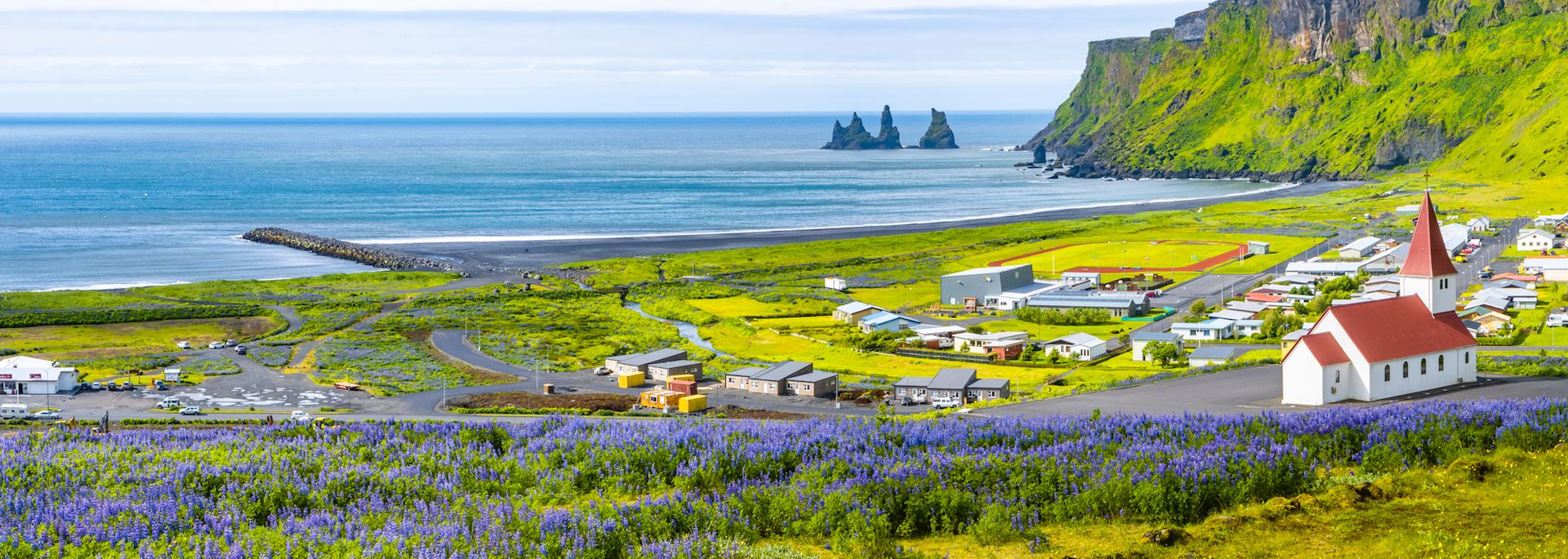
When is the best time to visit Iceland?
- Month-by-month
The best time to visit Iceland to see the northern lights is between November and February, when the nights are longest. The best time to visit if you want to explore inland by 4x4 is from July, once the snow in the highlands has thawed.
Iceland is a great year-round destination, enjoying a temperate maritime climate. Summers are short and cool, with temperatures between 48°F and 55°F. Winters are long but surprisingly mild, with highs of 37°F and lows of 28°F.
Unexpected rain can fall throughout the year, so always be prepared for chilly, wet and windy days. Winter blizzards may delay travel plans, and late thaws in the highlands might affect travel in the summer. But, as Icelanders say: If you don’t like the weather, just wait a bit.
- Make an inquiry
- Request a brochure
Month-by-month guide for traveling in Iceland
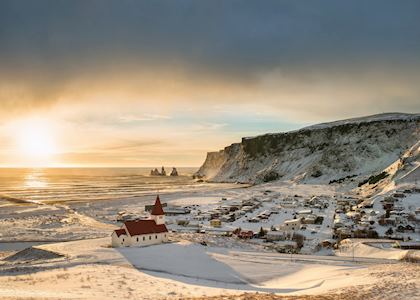
Visiting Iceland in January
The days are short and the nights are long, which improves your chances of seeing the northern lights in the dark, unpolluted skies. Festive lights continue to illuminate towns and cities — a welcome remedy to the wintry darkness. Daytime sightseeing needs to be planned carefully to coincide with the limited hours of sunlight.
Events & Festivals
- The Þorrablót winter festival is celebrated from mid-January to mid-February. Þorrablót is an old pagan festival originally celebrated by Iceland’s early settlers over a thousand years ago. Revived in the 1800s, it brings local people together to eat, drink, dance and sing traditional songs. A Þorrablót menu consists of traditional Icelandic delicacies, including hákarl (fermented shark), smoked lamb and svið (boiled sheep’s head). This is typically accompanied with brennivín — a schnapps made from potato and caraway. During this time, many restaurants will offer these dishes on their menus.
- The northern lights can be viewed in Iceland between early September and early April, if skies are clear and aurora activity is forecast. Chances of seeing them are best between November and February, when the sun sets before 6pm and the nights are longest.
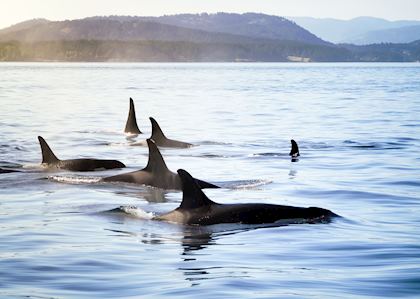
Visiting Iceland in February
The days grow longer at a surprisingly rapid pace, which gives you more time for sightseeing and makes it easier to travel farther into the Icelandic countryside. At this time of year, you can take trips to see orca in the waters surrounding the Snæfellsnes Peninsula, and there are still good opportunities to witness the northern lights strobing across the sky.

Visiting Iceland in March
The Spring Equinox officially marks the end of winter in Iceland, when daytime lasts as long as night-time. This means you can spend longer each day exploring Iceland’s geothermal landscapes and natural landmarks. There’s still a chill in the air, and winter activities such as ice caving are still popular. Although the nights are shorter, it’s still possible to see the aurora borealis late in the evenings.
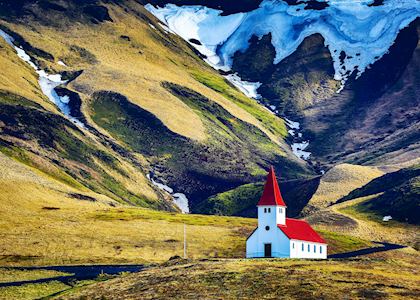
Visiting Iceland in April
April is one of the quieter times to travel, so you’re better able to enjoy sights away from the crowds. Although the Icelandic summer has officially begun, it might not feel like it — rain and snow are still common and lots of summer activities, including puffin viewing, cycling tours and many boat trips, are not yet in operation. As the snow begins to clear, the grassy landscape turns pale yellow.

Visiting Iceland in May
The summer season officially begins, with temperatures becoming milder and more activities opening up throughout the country. The main road around the island — sections of which are often closed during winter storms — is usually fully accessible. Seabirds, including puffins, return to Iceland and you can see them nesting in large numbers on the rugged coastline. Toward the end of the month, lambs seem to be everywhere you look and lupine flowers bloom lilac across the countryside.
- From mid-May until mid-July, Iceland basks in 24 hours of daylight. The sun dips below the horizon at midnight and rises again at 3am, and it’s never truly dark between these hours. Instead, a pinkish twilight lingers in the sky.
- Kirkjubæjarklaustur Chamber Music Festival takes place in the summer (month varies) in southern Iceland, on a magnificent lava-field landscape.
- The Reykjavík Arts Festival takes place for three weeks each year in May or June. This is a major event in the capital that invites hundreds of artists from around the world to showcase their work.
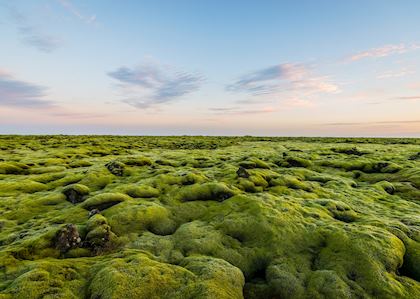
Visiting Iceland in June
The summer solstice marks the longest day of the year, bringing 24 hours of daylight to Iceland as the sun barely dips below the horizon. By now, the landscape is a vivid green, which contrasts sharply with the country’s dark volcanic rock, making for some excellent photography opportunities. Some activities, including quad biking tours and whale watching, take advantage of the midnight sun and are available late into the evening. Plenty of festivals take place in the summer throughout the country, celebrating local arts, food and culture.
- Humarhátið festival takes place in late June or early July in the little town of Höfn, in southeast Iceland. Focused on local seafood, this is a great opportunity to try freshly caught Icelandic langoustine.

Visiting Iceland in July
Snow in the highlands has thawed and roads through Iceland’s wild interior are now accessible, offering opportunities to explore inland by 4x4. One of the most popular times to travel, visitors come to experience the midnight sun and Iceland’s vast array of outdoor activities. You can expect larger crowds at major attractions such as the Golden Circle, Lake Mývatn and along the south coast.
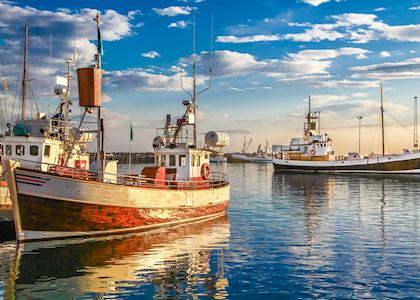
Visiting Iceland in August
The weather is mild and rainfall remains comparatively low. Visitors to Iceland reach their peak, so hotels should be booked well in advance and you can expect the country’s well-known landmarks and attractions to be busy. Many seabirds begin their migration south from the middle of August, so plan your travel at the beginning of the month if you’d like to see them.
- Fiskidagurinn Mikli (Great Fish Day) takes place on the first or second Saturday of August in the fishing village of Dalvík, in north Iceland. This is a big social event, with outdoor seafood buffets, and free fish soup offered in locals’ homes.
- Síldarævintýri (Herring Adventure Music Festival) is hosted in the town of Siglufjörður, in north Iceland, over the early August public holiday. In the past, the festival has featured a broad range of Icelandic music, from folk singing to Sigur Rós.
- Menningarnótt (Culture Night) is celebrated in Reykjavík in August. This is a major event, with roads closing for street performers and fireworks in the evening.
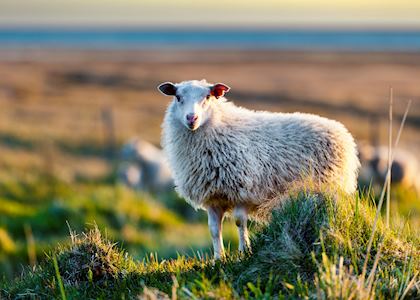
Visiting Iceland in September
As the peak summer season winds down, this is a quieter time to travel in Iceland while the whole island is still generally accessible. September is usually cooler and wetter than July and August, but many summer activities and attractions are still available. As you drive through the countryside, look out for the annual réttur taking place, when farmers round up the 800,000 sheep that have been roaming the land during the summer.
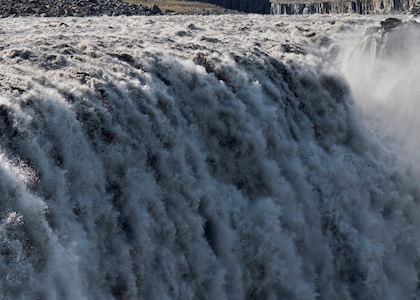
Visiting Iceland in October
October is typically the wettest month in Iceland, but there are noticeably fewer visitors compared to the summer months. Many summer activities are no longer available and adverse weather increases the risk of road closures, so travel is now generally limited to the south coast, north and west Iceland.
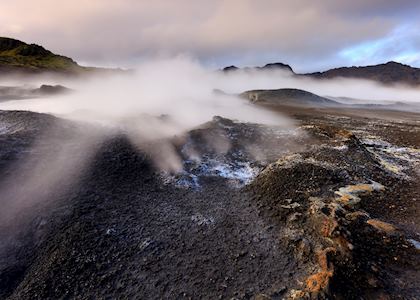
Visiting Iceland in November
As the nights draw in, the northern lights often appear in the sky. Seasonal winter activities, such as ice caving, are also now possible. Temperatures are cool, but there’s still plenty to do to lure you outdoors and the cold air makes the geothermal steam rising from hillsides become more pronounced.

Visiting Iceland in December
A wonderful time to visit Iceland, when festive lights illuminate towns and cities. Toward the end of the month, the sun lingers on the horizon for just four hours, creating a strange, ethereal twilight. Tours need to be planned carefully to make the most of the limited daylight hours, and, weather permitting, the northern lights frequently make an appearance.
- In the 13 days before Christmas, troll-like Jólasveinar (‘Yule lads’) are said to visit children one-by-one in the days leading up to Christmas. Formerly, they tried to play tricks on people, but now they leave children small gifts. You might see the Jólasveinar projected onto buildings in Reykjavík, and they visit some hotels to leave small tokens for guests.
- New Year’s Eve is the biggest party of the year in Iceland, when bonfires and fireworks are lit, and Icelanders gather to share the warmth and sing. Belief in elves (huldufólk) is widespread in Iceland and they’re said to be most active at New Year, so it’s common for Icelanders to reference them in songs at this time of year.
Iceland Climate Guide
Why travel with audley.
- 100% tailor-made tours
- Fully protected travel
- Established for over 25 years
- 98% of our clients would recommend us

Travel advice
Practical tips for traveling to Iceland, from social protocols to guidance on money matters, with a link to the latest US State Department travel advice.

Request our brochure
Covering all seven continents, The World Your Way shows you how you can see the world with us. It features trip ideas from our specialists alongside hand-picked stays and experiences, and introduces our approach to creating meaningful travel experiences.
Trip ideas and travel guides for exploring Iceland
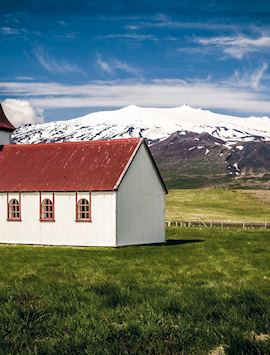
The Golden Circle & west Iceland
7 days from $4,595pp
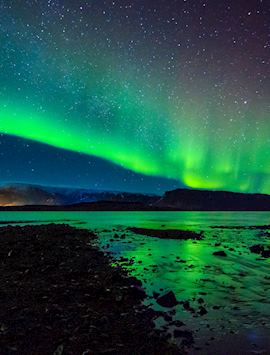
Northern lights winter break in Iceland
6 days from $8,370pp
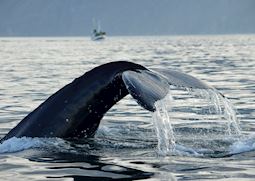
Highlights of Iceland: volcanoes, glaciers, whales and waterfalls
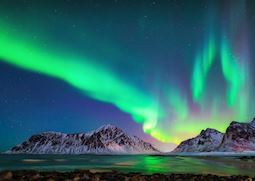
Seeing the northern lights in Iceland: a Q&A
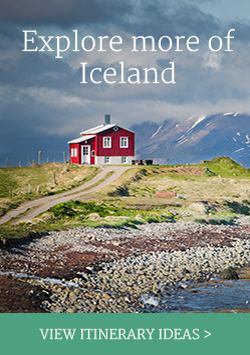
Protect Your Trip »
How to see the northern lights in iceland in 2024.
Increased solar activity means 2024 is a prime time to see the northern lights in Iceland.
Seeing the Northern Lights in Iceland

Tom Archer | Courtesy of Hidden Iceland
While Iceland isn't the only place in the world to view the northern lights, the Nordic country's prime location near the Arctic Circle means the light show can be visible for more than 100 nights per year. And 2024 in particular will provide prime viewing opportunities.
"Interestingly, the sun is reaching its solar maximum (increased activity that's conducive for northern lights) over the next few years, so 2024, 2025 and 2026 are prime years for getting a great light show," explains Ryan Connolly, co-founder of tour operator Hidden Iceland.
While you're never guaranteed to see the northern lights in Iceland, a little planning and forethought can pay off. Read on to discover the best time of year to visit, the most scenic places to go, unique tour options and more.
The best time to see the northern lights in Iceland
Northern lights forecast for iceland, tips for exploring on your own, the 5 best places to see the northern lights in iceland, iceland northern lights hotels, iceland northern lights tours.

Getty Images
According to the country's tourism authority, the best time to see the northern lights in Iceland is from September to mid-April, between 9 p.m. and 2 a.m. – and particularly around midnight.
Within that September to April period, there's some debate about the optimal time to see the lights. Connolly cautions against a visit between late March and mid-April as well as in early September "so you don't have to stay up too late to watch the sun set." He and other experts recommend the following timeframes:
- November to January: You're generally more likely to catch the northern lights during these darkest months. The sun barely rises around this time of the year, and the extremely long nights mean a longer window for the phenomenon to appear each day.
Spring and fall equinoxes: Although midwinter probably offers the best chance of catching the aurora, some people recommend viewing it around the spring or fall equinoxes – that is, around March 19 and Sept. 22 (these dates change slightly each year). The science behind this timing is complex: In short, there tends to be more geomagnetic disturbance around the equinoxes, leading to stronger auroras. But don't forget that the nights at these times are shorter than in midwinter, so your daily window for seeing the northern lights will also be shorter.
"We loved visiting in the fall for the opportunity to see the northern lights and for how few tourists there were," says U.S. News Travel digital producer Leilani Osmundson , who has visited Iceland in the fall. "Sometimes it felt like we had the whole country to ourselves!"
- New moons: Moonlight can make it harder to spot the light show if the aurora is already faint – so serious aurora chasers may want to plan their visit to coincide with a new moon.
During the rest of the year, Iceland experiences near-constant daylight, meaning there isn't enough darkness for the aurora borealis to appear. Put simply, if you visit in late spring or summer, you will not be able to see the lights, even if you go to the best viewing locations.

These are the most reliable resources for determining the likelihood of spotting the northern lights in the coming days:
- The Icelandic Meteorological Office: On the Icelandic Met Office's website , forecasts show the Kp index, which measures disturbances in Earth's magnetic field on a scale of zero to nine; the higher the number on the index, the stronger the aurora activity. The Met Office site also shows the cloud cover across Iceland, helping you determine whether you'll actually be able to see the lights.
- Iceland's Aurora Forecast: Iceland's Aurora Forecast , which is run by locals with expert knowledge of the aurora, offers a similar forecast on a slightly more user-friendly site.
Unfortunately, longer-range predictions (for example, weeks or months in advance) are less reliable. There are 27-day forecasts available, but take note that solar activity can occur rapidly and may not factor into such predictions. However, due to the sun's rotation cycle, if a strong aurora appears, it is considered more likely that the lights will appear again 27 days later, so this type of forecast may still be worth checking.

While it requires some extra planning, you can easily explore Iceland on your own. If you're considering this route for your trip, take these expert travel tips into account:
- Avoid chasing the lights: "Once you are in an area with clear skies, you just need to wait, grab a cup of hot chocolate, and hope for the best," Connolly says. "Driving around aimlessly rarely provides any benefits and isn't much fun."
- Manage your expectations: "The northern lights don't necessarily always appear to the naked eye as we see them in photos," Osmundson explains. "On our trip, they looked super green through the camera, but silvery and very faded to the naked eye."
- Consider a self-drive tour: Several tour companies offer customized itineraries for travelers who want to explore on their own.
- Opt for four-wheel drive: Rent a vehicle with four-wheel drive for safety and peace of mind on wintry roads.
- Heed road restrictions and conditions: Regardless of when you visit, don't go off the beaten track – off-roading is strictly illegal. You'll also want to check road conditions via the Icelandic government's official portal to avoid weather-related accidents.
- Consider travel insurance: An international travel insurance policy can provide car rental protections, medical care coverage and more.
Tips on Trips and Expert Picks Newsletter
Travel tips, vacation ideas and more to make your next vacation stellar.
Sign up to receive the latest updates from U.S News & World Report and our trusted partners and sponsors. By clicking submit, you are agreeing to our Terms and Conditions & Privacy Policy .

The most basic rule for catching the northern lights is to go somewhere dark – and with Iceland's sparse population, there's no shortage of places that fit the bill. From fjords and glaciers to mountains and black sand beaches , these are some of the most notable places to see the northern lights in Iceland.
Jökulsárlón
This glacial lagoon is adorned with icebergs, which break off from the huge Vatnajökull glacier to the north. It's also populated by crowds of seals, making Jökulsárlón a stunning place to commune with nature and a formidable backdrop for the shimmering aurora. You can also watch the light show from Diamond Beach, a black sand beach right where the lake drains into the Atlantic.
Reynisfjara and other black sand beaches
Reynisfjara, near the southern village of Vik, is a popular tourist spot, and it won't be hard to see why once you take in the basalt columns dotted along this black sand beach. You might be able to find yourself a quiet corner either here or on another stretch of shoreline nearby, and you'll be surrounded by beautiful scenery while you wait for the light show.
Be on alert around the water – you must pay attention to your surroundings on the beaches, as so-called "sneaker waves" can cause injury or death. Consider stopping off at the spectacular 200-foot high Seljalandsfoss waterfall on the way; it's about 40 miles from Vik, on the main road from Reykjavik.
Snæfellsnes peninsula
About 130 miles northwest of Reykjavik, the Snæfellsnes peninsula centers around a huge volcano called Snæfellsjökull. There's plenty of impressive places to view the lights here – consider staking out a spot near the unusually pointy Kirkjufell mountain or on Djúpalónssandur beach, with its black sand and craggy rock formations. You can stay overnight in a number of villages in the area.
Reykjanes peninsula
Reykjanes has plenty of naturally beautiful backdrops for catching the lights. Kleifarvatn, a large and tranquil lake ringed by small mountains, sits about 20 miles south of Reykjavik, while another option is Krýsuvík, a geothermal area with hot springs south of the lake.
Thingvellir
This volcanic national park is located on the rift between two continental plates. About a 30-mile drive east of Reykjavik, Thingvellir – written as Þingvellir in Icelandic – offers varied scenery from volcanoes to lakes to famous Iceland waterfalls . Take note: As part of the Golden Circle tour route, Thingvellir is a popular spot for aurora viewing, so you may not be alone.

Kristján Pétur Vilhelmsson | Courtesy of Hotel Rangá
If you're planning a self-guided visit, book an Airbnb or hotel that caters to aurora spotters. Below is a sampling of hotels that offer special viewing locations and wake-up calls if the lights appear after you go to bed.
Hotel Rangá
Tucked in a charming timber building near the south coast of Iceland , this hotel specializes in aurora viewing, with an observatory on its roof and an aurora wake-up service. The hotel also lends out snowsuits for those who want to spend time outside and boasts a 24/7 bar with hot drinks to seal the deal. Guests have praised Hotel Rangá's incredible service, calling it the kind of luxury place that's relaxing and not too formal.
The Retreat Hotel and Silica Hotel
The Blue Lagoon's geothermal waters would be a formidable place to spot the northern lights, but daytime visitors can't stay past late evening – before the aurora tends to appear. However, guests in the two on-site hotels don't have to stress about this timing. Offering ultra-chic minimalist rooms, access to private lagoons and otherworldly views, The Retreat Hotel and Silica Hotel at the Blue Lagoon resort offer a true luxury experience, with prices to match. Despite the price, guests rave about the beauty of this hotel's location and its stylish design.
Hótel Húsafell
Located on a former farm in the Icelandic wilderness, this hotel says it gets an average of three aurora sightings per week in the winter months. Hótel Húsafell also offers a complimentary aurora wake-up service so you don't miss the show. Its location near the Langjökull glacier means stellar views during the day too. Recent visitors enjoyed the range of activities on offer around the hotel in addition to the restaurant, noting that although the menu options are limited, the food is divine.
Panorama Glass Lodge
There's no need to go out in the cold to see the northern lights when you're staying in an all-glass cabin. Hot tubs and heated floors at the Panorama Glass Lodge make the views over the rocky tundra all the more cozy. Guests have plenty of compliments for this lodge's scenic setting, as well as the luxury and comfort of its one-of-a-kind design.
Hótel Búdir
A rustic building now plays host to this stylish yet homey hotel on the Snæfellsnes peninsula, with aurora wake-up calls; fine dining sourced from local purveyors; and stellar views that span glaciers, lava fields and the Atlantic. According to past guests, the old-timey charm and restaurant and bar are serious highlights at Hótel Búdir (also written Búðir).
Skálakot Manor Hotel
This luxury lodge is located on a horse farm in remote southern Iceland – the perfect place to spot the aurora. In addition to tours on horseback, the hotel offers cozy guest rooms, a fine dining restaurant and a spa. Recent visitors, many of whom visited to enjoy the resort's amenities for a day, note how stunning the location is.

Northern lights tours with a guided expert may increase your chances of spotting the natural phenomenon, but remember: Seeing the northern lights is never a sure bet, and as such, tour operators have various policies to account for this. Below are some of the best tour options.
Multiday tours
- Hidden Iceland: Hidden Iceland offers an immersive, private Must See 6+ Day Private Tour Winter Itinerary that combines daytime activities like discovering a blue ice cave with overnight stays in remote locations that are ideal for spotting the northern lights. Recent travelers praise Hidden Iceland, especially the tour guides.
- Arctic Adventures: Arctic Adventures offers a two-day tour focused on the aurora and the Snæfellsnes peninsula north of Reykjavik, including sights of waterfalls and a black sand beach. A six-day tour with Arctic Adventures explores the south of the country, including an ice cave and a black sand beach, as well as a northern lights boat excursion from Reykjavik. Take note, though, that this tour does not accept children younger than 8, while the age minimum for the two-day tour is 6 years old. The company has received generally good feedback for its organization – negative reviews tend to come from customers who didn't get to spot the aurora.
- GJ Travel: Another reliable bet is GJ Travel, which has been showing visitors around Iceland for more than 90 years. This tour operator has garnered high praise for its "jam-packed" itineraries and extremely experienced guides. GJ Travel offers multiple northern lights tours that also stop off at key sights around Iceland. Choose a five-day tour or an eight-day trip , and know that these excursions may carry up to 40 people.
Northern lights tours from Reykjavik
- Iceland Everywhere
- Reykjavik Outventure
- Special Tours
- Elding Whale Watching
For more options, check out our list of the best Iceland tours .
Frequently Asked Questions
Yes, the northern lights can be visible from Reykjavík . "It's a myth that it's impossible to see them in the city," Connolly says. "If you find yourself stuck in Reykjavík each night, don't be disheartened – there are still plenty of places with wide-open views of the ocean and away from direct light, such as along the harbour downtown." Other local viewing spots include:
- Öskjuhlíð: This hill on the south side of Reykjavík offers decent views of the northern lights from the top. While you're up there, you can visit the spectacular glass-domed Perlan, a museum and restaurant offering an immersive aurora documentary in its unique planetarium, as well as spectacular views over Reykjavik. Although it's possible to see the lights from Perlan, the museum typically closes midevening, before the best viewing hours for the aurora.
- Seltjarnarnes peninsula: Located on the western edge of the city, this area's top viewing spot is the Grótta lighthouse, which provides scenic vistas of the night sky just far enough from the city lights.
- Mount Esja: If you have a car but want to stay close to the city, consider driving less than 20 miles out of toward snow-capped Mount Esja, which provides a splendid backdrop for the light show (but note that hiking on the mountain is not recommended during aurora season due to icy conditions).
Yes, though it's less likely as the Blue Lagoon typically closes in the late evening during the winter and early spring, which is often too early to see the northern lights.
Iceland's weather can be unpredictable. Because there's no easy way to plan around the changing forecasts, it's best to book a longer visit to the country. A two-day jaunt could easily be ruined by one patch of cloudy weather; if you stay on the island for a week, however, your chances of catching clear skies are much better.
You might also be interested in:
- The Best Packable Jackets
- How to See the Northern Lights in Alaska
- The World's Best Places to See the Northern Lights
- The Best Travel Insurance for Europe
Most Beautiful Landscapes in the World

Tags: Travel , Europe Vacations , Travel Tips
World's Best Places To Visit
- # 1 South Island, New Zealand
- # 4 Bora Bora
If you make a purchase from our site, we may earn a commission. This does not affect the quality or independence of our editorial content.
You May Also Like
Top things to do in florida.
Gwen Pratesi May 31, 2024

The Best Travel Neck Pillows
Timothy J. Forster and Amanda Norcross May 30, 2024

Road Trip Essentials
Alissa Grisler and Amanda Norcross May 29, 2024

The Best Whale Watching in Santa Barbara
John Rodwan and Suzanne Mason May 29, 2024

The Best Underseat Luggage
Rachael Hood May 28, 2024

Top Pride Parades and Celebrations
Suzanne Mason May 28, 2024

The Best Miami Boat Tours
Gwen Pratesi May 28, 2024

The Best Travel Purses
Rachael Hood May 24, 2024

The Best Beach Games
Gwen Pratesi May 24, 2024

The Best Branson Shows
Carrie A. Back May 23, 2024

Best Time to Take an Iceland Cruise

Iceland Climate

Iceland in June: Weather and Wildlife

Iceland in July: Activities and Adventure
Iceland in august: the last days of the midnight sun.

Iceland in September: Start of Northern Lights Season
Best time of year for northern lights in iceland, take a soak in the blue lagoon waters best time to visit blue lagoon, want to go, top iceland travel destinations.
- Flatey Island
Iceland Trips by Departure Date
- 2024 Iceland trips (92)
- 2025 Iceland trips (50)
- 2026 Iceland trips (7)
- June 2024 (31)
- July 2024 (40)
- August 2024 (49)
- September 2024 (30)
- October 2024 (18)
- November 2024 (16)
- December 2024 (16)
- July 2025 (13)
- August 2025 (18)
Top Experiences in Iceland
- Iceland Cruises (104)
- Iceland Wildlife & Safari Exploration (35)
- Iceland Cultural (26)
- Iceland Luxury (23)
- Iceland Land Tours (10)
- Iceland Trekking (9)
- Iceland Scheduled Group Tour (5)
- Iceland Active (5)
- Iceland Beaches (3)
Iceland Trips by Duration
- 5 day trips (5)
- 8 day trips (8)
- 9 day trips (5)
- 10 day trips (10)
- 11 day trips (10)
- 12 day trips (11)
- 13 day trips (9)
- 14 day trips (13)
- 15 day trips (13)
- 16 day trips (7)
- 17 day trips (5)
- 18 day trips (3)
- 19 day trips (3)
Iceland Trips by Activity
- Iceland wildlife viewing (90)
- Iceland small ship cruises (78)
- Iceland whale watching (57)
- Iceland hiking (49)
- Iceland village visits (37)
- Iceland kayaking (31)
- Iceland archaeological site visits (9)
- Iceland adventure options (9)
- Iceland northern lights (7)
- Iceland land & sea exploration (5)
- Iceland photography seminars (3)
Why Travel With Adventure Life
Recognized by.

Aurora Tracks See Northern Lights

ICELAND Northern Lights Month-by-Month Planner

Planning a successful trip to Iceland for the aurora begins with choosing the right time of year. In this article, we breakdown Iceland Northern Lights month-by-month, and explain what the best month to see northern lights Iceland is.
Iceland is well-renowned as a prime aurora-chasing destination, with many tours and accommodation designed around aurora hunters seeking a glimpse of these spectacular lights. However, despite the inspiring photos and travel marketing hype, it is not as simple as wandering over to the icy land, stepping outside your hotel, and seeing them blaring in the sky whenever you like. There are many factors that come into play which allow you to see the northern lights, and the most important one is choosing the right time of year.
If you plan on visiting Iceland to view the northern lights, it is important to make sure that you plan ahead of time. Every year, countless people make their way up to Iceland in order to hunt for the elusive auroras, which can make it very difficult to find available accommodations if you are searching at the last minute. In this guide, we explain the best month to see Northern Lights Iceland, to ensure you plan and book your trip for the right time and give you the best chance of seeing them. We also explain other factors that affect aurora visibility, so you can plan your trip accordingly.
So, read through this guide as well as our other Iceland Northern Lights articles here , and start planning for a wonderful aurora vacation.
Factors Affecting Iceland Northern Lights Visibility
There are many factors that affect the visibility of the aurora borealis in Iceland. These include the location, the Earth’s magnetic activity, solar activity, weather conditions, light pollution, both the season and time of day, as well as the solar cycle.
Geographical Location
The closer to the poles you are, the easier it is to view the elusive lights. In the northern hemisphere, the best locations to see the aurora borealis are Alaska, Scandinavia, northern Canada, and of course Iceland. The chances of catching a glimpse of the northern lights increase as you get closer to the magnetic poles.
Magnetic Activity
The magnetic activity also plays a very important role in the visibility of the auroras. The lights themselves are actually caused by an interaction of the sun’s solar radiation with the Earth’s magnetic field. When magnetic activity surrounding the planet increases, it helps to enhance the visibility as well as the intensity of the northern lights. The best time for viewing the auroras is when geomagnetic storms are at their highest.
Solar Activity
Naturally, solar activity is crucial to the creation of auroras. The more active the sun is, the greater the visibility of the northern lights. During solar cycle peaks, large amounts of radiation are ejected from the surface of the sun into space. As this solar radiation passes around the Earth’s magnetic field, it results in an ionization of the upper atmosphere. This ionization is what creates the northern lights.
Weather Conditions
While the actual weather conditions play very little role in the creation of the auroras, they are crucial to ensuring that the elusive lights are visible. It takes very little cloud cover or precipitation to completely obstruct the view of the northern lights. This is why most aurora hunters prefer seeking out the elusive lights during the winter months. The skies are darker and clearer during the winter months than at any other time of year.
Light Pollution
The closer you are to a major city, the greater the chances that light pollution can interfere with your ability to see the northern lights. If you have ever taken a trip to another part of the country, then chances are you could easily spot where a major city is on the horizon, by the halo of light that envelops it at nighttime. This is light pollution, and it can greatly diminish your ability to view the elusive lights.
Season and Time of Day
The auroras are technically visible year-round. Astronauts in outer space can view the elusive lights regardless of the time of day or season. But on earth, it is best to hunt for the northern lights during the time of year when the night is the longest. The longer the night, the darker the skies, and the easier it will be to view the auroras.
Solar Cycle
The level of solar activity peaks every 11 years. This is known as the solar cycle. And while it is possible to view the northern lights during the winter when the solar cycle is at its weakest, the odds of capturing a glimpse of the elusive lights increases during the peak of the solar cycle. During the last major solar cycle, the solar activity was so great, that the auroras could be seen as far south as France and Kentucky. For further explanation of the best years to see the aurora and the solar cycles read our article here .
BEST MONTH TO SEE NORTHERN LIGHTS Iceland
When it comes to viewing the aurora borealis in Iceland, the best time of year is between September and April. While there is no guarantee that you will actually view the auroras when visiting Iceland during these months, the odds of catching a glimpse of them increases substantially.
The best months to view Northern Lights in Iceland is September to April.
Of that period, many seasoned aurora hunters choose to do their northern lights hunting in September and October , or February and March . These months are close to the equinoxes which some people have said anecdotally is best for aurora activity. More importantly, these months side-step the snow storms of Winter, which bring in cloud cover that can obstruct views of the aurora. Not to mention, it is more pleasant being outside when it’s not so cold that your hair freezes and breaks off.
Iceland Northern Lights Month-by-Month Planner
It is possible to capture a glimpse of the elusive lights in Iceland over the course of an 8-month period. Starting in September, the days begin to shorten and the nights become longer. This continues on until the peak of winter when the night lasts for nearly 24 hours each day. As the seasons segue from winter into spring, the chances of capturing a glimpse of the auroras decreases with each passing day.

Considerations for Iceland Northern Lights in September:
September is one of the first months of the year that the northern lights can be routinely viewed in Iceland. It is best to visit the country towards the end of September when the weather is still hospitable, but the longer nights provide ample opportunity to hunt for the lights. For sightseeing, the countryside is beautiful as the trees express their red and orange autumn colors, and the days are still mild enough to walk around outside comfortably.
Iceland in October Northern Lights Considerations:
By October, as the nights continue to get longer, the weather conditions change and tend to become a little more difficult to predict. While the temperature is still bearable during the daytime, the night brings the first major snowstorms of the year. As a result, it’s important to pay close attention to local forecasts before making your way out into the Icelandic countryside to hunt for the lights.
Considerations for iceland northern lights november:
The nights continue to get longer throughout November, and the air gets increasingly colder. During this time of year, the snowstorms tend to even out, making it easier to predict the best time to head out into the countryside to view the auroras. Make sure to avoid a full moon, as the moon can create excessive amounts of light pollution.
Considerations for iceland Northern Lights in December:
December provides some of the longest nights of the year. It is also one of the coldest times of year to visit Iceland. While it may be one of the best times of year to visit the country and view the auroras, keep in mind that it is also the most popular time of year for tourism. During December, most of the lodgings will be fully booked.
Considerations for January Northern Lights in Iceland:
During the month of January, the skies are clearer than any other time of year. The nights are at their longest, and the temperatures at their coldest, but the odds of catching a glimpse of the elusive auroras increases substantially. Due to the frigid conditions, the chances of finding vacancies increases as well.
Considerations for February Northern Lights in Iceland:
As the year segues from January into February, the nights begin to shorten and the days grow longer. Nevertheless, the nights are still long enough to ensure plenty of opportunities to view the elusive lights. The skies are generally clear throughout the month, which enhances the visibility of the lights as a dance through the heavens.
Considerations for Iceland northern lights in march
By March, the first thaws of the year begin to warm the Icelandic countryside making it more bearable for aurora hunters. While the nights are still long enough to view the lights, the odds of capturing sight of them decreases with each day. Early March is one of the most popular times of year for seeking the northern lights throughout Europe. However, the snow melt will make the ground wet and boggy for outside hiking, so be prepared and take a good pair of boots.
iceland northern lights in april Considerations:
During the earliest parts of April, it is still possible to view the northern lights in Iceland. However, as the month progresses, it will be increasingly difficult to view them. By mid-April, the chances of capturing a glimpse of the elusive lights fade into oblivion.
May, June, July, August – AVOID THESE MONTHS
Iceland northern lights in may-august considerations:.
While this time of year is popular for vacationers as it coincides with summer break, when it comes to aurora-hunting it is very important that you avoid these months. The days are simply too long and bright, and the short nights do not have the deep darkness that is needed to reveal the northern lights.

Common Question: Can you see the northern lights in Iceland in July?
No, for one main reason, there is too much sunlight. In the northern regions of the world close to the Arctic Circle, the daylight hours are extremely long, reaching almost 24 hours in some parts. For successful northern lights watching, you need total darkness, to allow the aurora to shine against the dark sky. While the aurora borealis is always there, you can only see it when it is dark. Think of northern lights viewing like star-gazing – the stars are always there, but you can’t see them during the daytime because it is too light. The same principle applies to the aurora borealis. It is simply not dark enough to see northern lights in Iceland in July. You will not be able to see northern lights in Iceland in during the entire period of May, June, July for this reason.
Day Activities to Enjoy While Waiting for the Northern Lights in Iceland
While there are some who visit Iceland purely to view the northern lights, many other visitors to the country want to experience all that the country has to offer. This is why most lodgings offer a wake-up service when the lights appear, and provide an endless list of activities to keep you busy throughout the day. Here are some of the best daytime activities to keep you busy while waiting for the northern lights to appear.
Whale Watching
Of course, nothing beats getting up close and personal with whales. May to September are the best months for catching whales crossing through the Icelandic waters, so if you’re visiting Iceland northern lights in September make sure to include whale watching in your itinerary, too. There are countless whale-watching opportunities throughout Iceland. Some of the best destinations to find a whale-watching expedition are Reykjavik, Akureyri, and Husovik. You will have the opportunity to view orcas, humpbacks, as well as minke whales.
Golden Circle Tour
One of the most popular attractions in Iceland is the Golden Circle. This is a route that takes visitors to 3 of the most popular destinations in the country. Visitors who take a tour of the Golden Circle will be able to visit the Geysir geothermal area, Thingvellir National Park, as well as the Gullfoss Waterfall.
Glacier Hiking
For those feeling a little more adventurous, there are plenty of guided tours that will take you hiking out on a glacier. They provide you with all of the proper equipment that you need and an experienced guide will take you out to explore the awe-inspiring landscapes that stretch on for miles.
Ice Cave Explorations
Naturally, if there are glaciers in Iceland, then there are also ice caves to explore. Take advantage of a magical expedition through the many beautiful, blue, ice caves in the country. Experienced guides will take you on an amazing expedition through the frigid blue caves.
Snowmobiling
For those looking for a little bit of an adrenaline rush, snowmobiling is always an excellent way to see the Icelandic countryside. Strap on a cold winter suit, and head out onto a glacier on the back of a high-powered snowmobile as it cuts through the Icelandic countryside at break-neck speeds.
Hot Springs and Geothermal Spas
Not only is Iceland known for its stunning snow-covered vistas, but it is also well known for its geothermal activity. Due to the high level of geothermal activity in Iceland, hot springs are found at many different sites. The most popular hot springs in the country can be found at the Blue Lagoon.
Snowshoeing
During the peak of the winter months, when the Icelandic countryside is covered with fresh layers of powdery snow, the best way to view the magnificent vistas is by snowshoeing through the countryside. There are countless trails and experienced guides will take you on an amazing adventure through the wintry scenery. Since snow is of course essential for this activity, the best months for it are the most snow-covered ones, from December to February/March.
Dog Sledding
But, if you’d really like to view Iceland the way it was meant to be seen, then you have to take a dog sled. There is nothing more thrilling than being pulled across the snow-covered landscape by a team of friendly yet energetic huskies. The time of year to enjoy dog sledding is of course in winter, from November to March, since snow is essential for this activity. But beware, from personal experience, being pulled in a sled at high speed in January is terrifyingly cold, to the point of fearing I had frostbite on my toes – despite that, it was truly a memorable experience.
Final Tips for Iceland Northern Lights Month & Time
By now, you should have a pretty good idea of Iceland northern lights month and time of year options for your aurora vacation. To summarize quickly, the best month to see northern lights Iceland is September to April. To fine-tune that time period, you may like to consider September-October or February-March for your trip. While December and January are very dark and renowned for northern lights, those months are often plagued by snow clouds and it is bitterly cold to spend time outside waiting for the aurora to appear.
Since you’re planning in advance, I also suggest you read about the best years to see the aurora based on solar activity , since we are coming up to a solar peak. Choosing a year with high solar activity will maximize your chances for seeing the northern lights, and it pays to spend a few minutes learning about this aspect of it.
For more resources, be sure to check out our Northern Lights Iceland category page on this website, which is packed full of articles about seeing the aurora in Iceland, to help you plan your vacation.
Happy aurora chasing!
Further Reading and Sources:
- Visit Iceland https://www.visiticeland.com/article/northern-lights-in-iceland
- Thingvellir National Park https://www.thingvellir.is/en/
Related posts:
- ICELAND Where to See Northern Lights | Best Places
- NEWS: ICELAND 2023 Volcano Halts Aurora Borealis Hunters
- What is the Best Time to See Northern Lights NORWAY?
- Best Northern Lights Hotels ICELAND for All Budgets
Related Posts
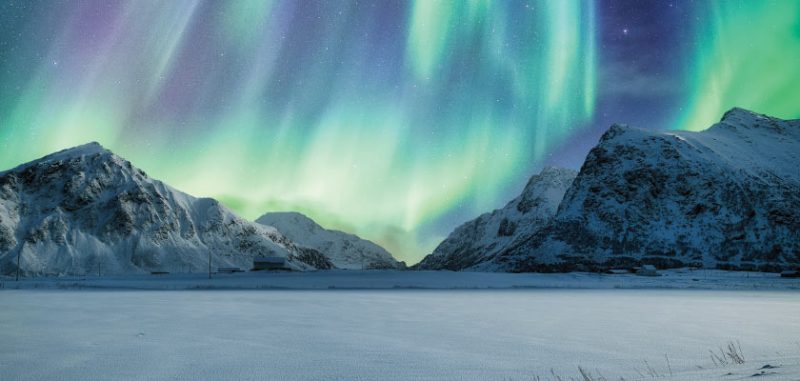
Best Time of the Year to See Northern Lights (Monthly Planner)
Trying to work out the best time of the year to see Northern Lights? In this month-by-month guide to the Aurora we share the best…

Best Place and Time to See Northern Lights 2020-2035
Want to know exactly where and when to see Northern Lights? Discover the best place and time to see Northern Lights across the globe, inc…

5 Great Short Tours to Northern Lights ICELAND
Looking for the best short tour to see Northern Lights in Iceland? In this article, we share some of the most popular short tours to…

5 Most Popular ICELAND Northern Lights Vacation Packages (2022-2023)
Considering a trip to Iceland to see the Aurora? Here we share 5 of the most popular Iceland Northern Lights vacation packages taking bookings for…

Iceland to Norway: 7 most beautiful MUST visit countries in the World
Iceland to Norway are 7 most beautiful countries in the world every travel travel enthusiast must visit. From Iceland's geysers to Norway's fjords, New Zealand's nature, Costa Rica's biodiversity, Scotland's history, Vietnam's diversity, and Peru's Machu Picchu, these destinations offer unforgettable experiences
Iceland to Norway, 7 must-visit countries. From Iceland's geysers to Norway's fjords, offer unforgettable experiences
Norway boasts stunning fjords, deep forests, and a rich Viking heritage. Its capital, Oslo, is a hub of contemporary design and culture
Peru is home to the iconic Machu Picchu, a UNESCO World Heritage Site. Its capital, Lima, offers a blend of colonial and modern architecture
The bustling streets of Hanoi to the serene waters of Halong Bay, it's a traveler's delight
From the lush rainforests of Tortuguero to the stunning beaches of Manuel Antonio, it's a natural wonderland
Scotland is famous for its historic castles, breathtaking highlands, and vibrant cities like Edinburgh. Its culture is rich in tradition, from kilts and bagpipes to Scotch whisky
This Nordic island nation is famous for its dramatic landscapes, including volcanoes, geysers, and glaciers. Has geothermal spas like the Blue Lagoon
Its diverse landscapes range from lush rainforests to rugged mountains. Auckland and Wellington offer vibrant urban experiences


The best places to visit in 2024 and 2025 to see the northern lights
Have you ever dreamt of seeing the northern lights? These mysterious light shows have captured our collective curiosity for as long as human beings have been on the planet. Did you know that there’s a Japanese myth that says the northern lights were the spirits of babies waiting to be born? Norse legends tell many stories about the Valkyries, or ancient warrior women; one tale claims that the northern lights was light reflecting off their weapons, shields, and helmets.
The northern lights—or as they’re also called: the Aurora Borealis—are considered one of the most awe-inspiring natural occurrences in the world. And like any nature-based experience, their elusive nature makes seeing them a bucket list item for travelers all over the world. If you’re lucky enough to live within the Arctic Circle, where they’re typically most visible, this may be old news to you, but for the rest of us, seeing the northern lights could be a once-in-a-lifetime thrill. Scientists are predicting that 2024 and 2025 will be the best time to see the northern lights—and we’ve got the tours that will get you there.

Explore more of our tours

4.7 out of 5 stars

4.6 out of 5 stars
More travel inspiration

UEFA EURO 2024: Meet the 24 teams
Friday, May 31, 2024
Article summary
Get the full lowdown on the 24 teams competing for glory in Germany.
Article top media content

Article body
How they qualified, top scorers, pedigree, key players and the coach – all you need to know about the 24 teams competing for glory at UEFA EURO 2024 in Germany.
Group A fixtures vs Scotland (Munich, 14 June, 21:00) vs Hungary (Stuttgart, 19 June, 18:00) vs Switzerland (Frankfurt, 23 June, 21:00)
Qualifying Qualified automatically as hosts
Pedigree EURO best: Winners 1972, 1980 (both as West Germany), 1996 EURO 2020: Round of 16, lost 2-0 to England
Coach: Julian Nagelsmann Nagelsmann has been on something of a roller-coaster ride since succeeding Hansi Flick in September 2023, but friendly wins against France and Netherlands in March seem to have sparked optimism and belief. The tactically astute 36-year-old selects players based on form, and convincing Toni Kroos to return from international retirement could turn out to be his best move yet.
Did you know? Germany are appearing at a record 14th EURO. They did not qualify for the first three editions (1960, 1964 and 1968) but have not missed a finals since.
Group A fixtures vs Germany (Munich, 14 June, 21:00) vs Switzerland (Cologne, 19 June, 21:00) vs Hungary (Stuttgart, 23 June, 21:00)
Qualifying Group A runners-up: P8 W5 D2 L1 F17 A8 Qualifying top scorer: Scott McTominay (7)
Pedigree EURO best: Group stage (1992, 1996, 2020) EURO 2020: Group stage
Coach: Steve Clarke Scotland have reached back-to-back European Championships under Clarke, the first Scotland manager to achieve that, and have qualified directly for a major finals for the first time since 1998. If they can reproduce their fine qualifying form, the next target for Clarke and company will be to make further history by becoming the first Scotland squad to progress beyond the group stage at a finals tournament.
Did you know? This is the second time Scotland have qualified for back-to-back European Championships.
Group A fixtures vs Switzerland (Cologne, 15 June, 15:00) vs Germany (Stuttgart, 9 June, 18:00) vs Scotland (Stuttgart, 23 June, 21:00)
Qualifying Group G winners: P8 W5 D3 L0 F16 A7 Qualifying top scorer: Barnabás Varga, Dominik Szoboszlai (4)
Pedigree EURO best: Third place (1964) EURO 2020: Group stage
Coach: Marco Rossi Having led Hungary from Nations League C to A, come agonisingly close to progressing from a EURO 2020 group containing Germany, France and Portugal, and now, unbeaten, reached EURO 2024, Rossi's popularity is sky high among players and fans alike. The Italian appears equally smitten, taking Hungarian citizenship. The togetherness, discipline and belief he has instilled among his squad is remarkable, with Hungary looking increasingly capable of springing a surprise or two.
Did you know? Hungary hold the longest current unbeaten run of all EURO 2024 finalists: 14 matches since a 2-0 home defeat by Italy in the Nations League in September 2022. That represents Hungary's longest unbeaten sequence since Ferenc Puskás and the Mighty Magyars – 18 games between July 1954 and February 1956 – under Gusztáv Sebes.
Group A fixtures vs Hungary (Cologne, 15 June, 15:00) vs Scotland (Cologne, 19 June, 21:00) vs Germany (Frankfurt, 23 June, 21:00)
Qualifying Group I runners-up: P10 W4 D5 L1 F22 A11 Qualifying top scorer: Zeki Amdouni (6)
Pedigree EURO best: Quarter-finals (2020) EURO 2020: Quarter-finals, lost 3-1 on penalties to Spain (1-1 aet)
Coach: Murat Yakin The 49-year-old has been at the 'Nati' helm since summer 2021. He oversaw Switzerland's run to the last 16 at the 2022 FIFA World Cup, where they reached the knockout phase for a fifth straight major tournament. After a low-key end to their EURO 2024 qualifying campaign, Yakin will want his team to regain their famed consistency as they bid to extend that impressive run.
Did you know? EURO '96 was Switzerland's first European Championship finals; this year marks their sixth finals appearance in the last eight editions.
Group B fixtures vs Croatia (Berlin, 15 June, 18:00) vs Italy (Gelsenkirchen, 20 June, 21:00) vs Albania (Düsseldorf, 24 June, 21:00)
Qualifying Group A winners: P8 W7 D0 L1 F25 A5 Qualifying top scorers: Joselu, Álvaro Morata (4)
Pedigree EURO best: Winners (1964, 2008, 2012) EURO 2020: Semi-finals, lost 4-2 on penalties to Italy (1-1 aet)
Coach: Luis de la Fuente A likeable Basque who won the Spanish Liga as a full-back with Athletic Club, the Spain boss has the winning habit. His side beat Group B rivals Italy and Croatia as they won the UEFA Nations League last summer, and he previously led national teams to EURO glory at under-age levels – the U19s in 2015 and the U21s in 2019. The levels he can summon from his big players after brilliant club seasons will dictate Spain's trajectory.
Did you know? Spain are the only national team to have won three continental and world titles in a row: EURO 2008, the 2010 World Cup and EURO 2012.
Group B fixtures vs Spain (Berlin, 15 June, 18:00) vs Albania (Hamburg, 19 June, 15:00) vs Italy (Leipzig, 24 June, 21:00)
Qualifying Group D runners-up: P8 W5 D1 L2 F13 A4 Qualifying top scorer: Andrej Kramarić (4)
Pedigree EURO best: Quarter-finals (1996, 2008) EURO 2020: Round of 16, lost 5-3 aet to Spain
Coach: Zlatko Dalić Since taking over in 2017, Dalić has guided Croatia to astonishing achievements, including back-to-back World Cup medals by reaching the final in 2018 and securing third place in 2022. Defeats in the EURO 2020 round of 16 and 2023 Nations League final, both by Spain, have set up a highly anticipated rematch in their opening game here.
Did you know? Croatia have qualified for seven out of eight EURO final tournaments as an independent nation, and have proceeded to the knockout stage in four of their six appearances to date.
Group B fixtures vs Albania (Dortmund, 15 June, 21:00) vs Spain (Gelsenkirchen, 20 June, 21:00) vs Croatia (Leipzig, 24 June, 21:00)
Qualifying Group C runners-up: P8 W4 D2 L2 F16 A9 Qualifying top scorer: Davide Frattesi (3)
Pedigree EURO best: Winners (1968, 2020) EURO 2020: Winners
Coach: Luciano Spalletti The much-travelled Tuscan took over from Roberto Mancini in August, just after leading Napoli to a historic Scudetto title. He wasted little time in conveying his football philosophy to the Azzurri squad, helping them reach the finals in Germany and starting to rebuild the national team by mixing veterans of the EURO 2020 triumph with a new generation of players.
Did you know? The Ukraine stalemate which confirmed Italy's place in Germany was then 24-year-old goalkeeper Gianluigi Donnarumma's 60th appearance for the Azzurri. His predecessor, Gianluigi Buffon, reached the same milestone as a 28-year-old in another goalless draw with Ukraine, ending his career with a record 176 caps.
Group B fixtures vs Italy (Dortmund, 15 June, 21:00) vs Croatia (Hamburg, 19 June, 15:00) vs Spain (Düsseldorf, 24 June, 21:00)
Qualifying Group E winners: P8 W4 D3 L1 F12 A4 Qualifying top scorers: Jasir Asani, Nedim Bajrami (3)
Pedigree EURO best: Group stage (2016) EURO 2020: did not qualify
Coach: Sylvinho Sylvinho's appointment in January 2023 heralded a new era for the Albanian national team. With his background in elite football, the Brazilian has succeeded in rejuvenating the side's playing style and instilling a winning mentality. His leadership has brought unity and cohesion, creating a team capable of surprising their opponents at EURO 2024.
Did you know? Under Sylvinho, Albania have never lost a game after taking the lead – a sequence of six matches into the Brazilian's tenure.
Group C fixtures vs Denmark (Stuttgart, 16 June, 18:00) vs Serbia (Munich, 20 June, 15:00) vs England (Cologne, 25 June, 21:00)
Qualifying Group H runner-up: P10 W7 D1 L2 F20 A9 Qualifying top scorer: Benjamin Šeško (5)
Pedigree EURO best: Group stage (2000) EURO 2020: did not qualify
Coach: Matjaž Kek Back for a second finals after steering Slovenia to the 2010 World Cup, the former centre-back resumed command in November 2018, leading his country to promotion from Nations League League C before overseeing a successful EURO qualifying campaign. The 62-year-old is confident his side can give their Group C rivals a run for their money.
Did you know? Slovenia met England at the 2010 World Cup, Jermain Defoe scoring the only goal in a narrow defeat which cost Kek's men a last-16 place. They face the Three Lions in their final Group C game in Germany.
Group C fixtures vs Slovenia (Stuttgart, 16 June, 18:00) vs England (Frankfurt, 20 June, 18:00) vs Serbia (Munich, 25 June, 21:00)
Qualifying Group H winners: P10 W7 D1 L2 F19 A10 Qualifying top scorer: Rasmus Højlund (7)
Pedigree EURO best: Winners (1992) EURO 2020: Semi-final, lost 2-1 aet to England
Coach: Kasper Hjulmand Hjulmand led Denmark to the semi-finals at EURO 2020 – their best result since winning the tournament in 1992. The coach played an important role as the nation came together after Christian Eriksen's on-field cardiac arrest, and following a disappointing World Cup the former Lyngby, Nordsjælland and Mainz boss will aim to give Denmark fans another summer to remember.
Did you know? To date, Denmark have taken part in eight EUROs since the introduction of the group stage, advancing to the knockout phase on four of those occasions.
Group C fixtures vs England (Gelsenkirchen, 16 June, 21:00) vs Slovenia (Munich, 20 June, 15:00) vs Denmark (Munich, 25 June, 21:00)
Qualifying Group G runners-up: P8 W4 D2 L2 F15 A9 Qualifying top scorer: Aleksandar Mitrović (5)
Pedigree EURO best: Runners-up (as Yugoslavia, 1960, 1968) EURO 2020: Did not qualify Coach: Dragan Stojković Having played at EURO '84 with Yugoslavia and at the 2000 finals with Serbia and Montenegro, 'Piksi' has steered his nation to their first EURO in 24 years – and their first as Serbia. One of the best midfielders in Serbian history, he took charge of the national team on his 56th birthday in 2021. His charisma and desire have propelled the Eagles to the 2022 World Cup and now EURO 2024.
Did you know? Yugoslavia were runners-up at the first-ever EURO in 1960; the Soviet Union denied them the title with an extra-time winner in Paris.
Group C fixtures vs Serbia (Gelsenkirchen, 16 June, 21:00) vs Denmark (Frankfurt, 20 June, 18:00) vs Slovenia (Cologne, 25 June, 21:00)
Qualifying Group C winners: P8 W6 D2 L0 F22 A4 Qualifying top scorer: Harry Kane (8)
Pedigree EURO best: Runners-up (2020) EURO 2020: Runners-up, lost 3-2 on penalties to Italy (1-1 aet)
Coach: Gareth Southgate After reaching a EURO final as well as a World Cup quarter-final and semi-final in his three major tournaments in charge, Southgate will be desperate for this to be fourth time lucky. The former Three Lions centre-back, a hugely popular figure with his players, will seek to get the best out of the vast amount of talent at his disposal in Germany.
Did you know? England have lost just once in their last 65 European Championship and World Cup qualifiers: a 2-1 defeat to Czechia in the EURO 2020 preliminaries.
Group D fixtures vs Poland (Hamburg, 16 June, 15:00) vs France (Leipzig, 21 June, 21:00) vs Austria (Berlin, 25 June, 18:00)
Qualifying Group B runners-up: P8 W6 D0 L2 F17 A7 Qualifying top scorers: Cody Gakpo, Calvin Stengs, Wout Weghorst (3)
Pedigree EURO best: Winners (1988) EURO 2020: Round of 16, lost 2-0 to Czechia
Coach: Ronald Koeman Koeman had a stuttering start to his second spell in charge of the Oranje, losing three of his first four matches – against France, Croatia and Italy. However, he steadied the ship, with the Dutch winning all their group qualification games bar those against the French. A EURO winner as a player in 1988, the 61-year-old would achieve immortality in the Netherlands if he repeated the feat as coach.
Did you know? Wim Kieft's fortuitous effort against the Republic of Ireland during Oranje's victorious EURO ‘88 campaign was the Netherlands' first headed goal at a major finals. It was also the only one of the eight Dutch strikes in West Germany that was not finished or created by Marco van Basten.
Group D fixtures vs Austria (Düsseldorf, 17 June, 21:00) vs Netherlands (Leipzig, 21 June, 21:00) vs Poland (Dortmund, 25 June, 18:00)
Qualifying Group B winners: P8 W7 D1 L0 F29 A3 Qualifying top scorer: Kylian Mbappé (9)
Pedigree EURO best: Winners (1984, 2000) EURO 2020: Round of 16, lost 5-4 on penalties to Switzerland (3-3 aet)
Coach: Didier Deschamps One of the most decorated figures in world football, Deschamps will be eager to get his hands on the one trophy that has evaded his clutches as a coach. He came agonisingly close in 2016, and that heartbreak should stoke the fire within this fierce competitor. A cool character and a measured communicator, the World Cup winner looks well placed to lead his side to glory.
Did you know? France's Antoine Griezmann holds the record for most consecutive appearances in international football history, after featuring in 84 games between August 2017 and November 2023.
Group D fixtures vs Netherlands (Hamburg, 16 June, 15:00) vs Austria (Berlin, 21 June, 18:00) vs France (Dortmund, 25 June, 18:00)
Qualifying Group E third place: P8 W3 D2 L3 F10 A10. Qualified via play-offs after beating Estonia and Wales Qualifying top scorer: Robert Lewandowski (3)
Pedigree EURO best: Quarter-finals (2016) EURO 2020: Group stage
Coach: Michał Probierz Probierz replaced Fernando Santos in September and steered his nation through the play-offs to ensure participation in his first major international tournament. Probierz spent his playing days in Poland and Germany, while his best coaching achievement in club football has been winning the Polish Cup with Jagiellonia Białystok and Cracovia.
Did you know? Poland have regularly appeared at World Cup finals yet did not qualify for their first EURO until 2008. Since then they have not missed a single edition of the tournament.
Group D fixtures vs France (Düsseldorf, 17 June, 21:00) vs Poland (Berlin, 21 June, 18:00) vs Netherlands (Berlin, 25 June, 18:00)
Qualifying Group F runners-up: P8 W6 D1 L1 F17 A7 Qualifying top scorer: Marcel Sabitzer (4)
Pedigree EURO best: Round of 16 (2020) EURO 2020: Round of 16, lost 2-1 aet to Italy
Coach: Ralf Rangnick Known as one of the godfathers of 'gegenpressing', Rangnick has left an indelible mark on modern football and Austria's current crop of players. No longer a side inhibited by a defensive mindset, Rangnick's charges have produced some eye-catching attacking performances. Belief is growing that Austria can make the knockout stage, like they did in 2021.
Did you know? Christoph Baumgartner grabbed international headlines in March when he scored the fastest international goal of all time after just SIX seconds against Slovakia.
Group E fixtures vs Romania (Munich, 17 June, 15:00) vs Slovakia (Düsseldorf, 21 June, 15:00) vs Belgium (Stuttgart, 26 June, 18:00) Qualifying Group C third place: P8 W4 D2 L2 F11 A8. Qualified via play-offs after beating Bosnia and Herzegovina and Iceland Qualifying top scorer: Viktor Tsygankov (3) Pedigree EURO best: Quarter-finals (2020) EURO 2020: Quarter-finals, lost 4-0 to England Coach: Serhiy Rebrov One of Ukraine's best-ever forwards, Rebrov formed a formidable partnership with Andriy Shevchenko in the late 1990s. He started his coaching journey at Dynamo Kyiv in 2014, winning the league and the Ukrainian Cup twice before taking charge of the national team during EURO 2024 qualifying, following successful spells in Saudi Arabia, Hungary and the United Arab Emirates. His side narrowly missed out on second place in Group C but got to Germany via the play-offs. Did you know? Due to the ongoing Russian military invasion in Ukraine, the national team played all of their nominal home matches abroad in qualifying: two in Poland and one each in Slovakia, Czechia and Germany.
Group E fixtures vs Belgium (Frankfurt, 17 June, 18:00) vs Ukraine (Düsseldorf, 21 June, 15:00) vs Romania (Frankfurt, 26 June, 18:00)
Qualifying Group J runners-up: P10 W7 D1 L2 F17 A8 Qualifying top scorer: Lukáš Haraslín (3)
Pedigree EURO best: Winners (as Czechoslovakia, 1976), round of 16 (as Slovakia, 2016) EURO 2020: Group stage
Coach: Francesco Calzona Calzona took the reins in August 2022, replacing Pavel Hapal. He started with a home stalemate against Luxembourg in EURO qualifying but has not looked back since, guiding Slovakia to victories in all their remaining games other than those against table-topping Portugal. Since February, he has combined the national team job with the head coach position at Napoli.
Did you know? EURO 2016 was Slovakia's first European Championship finals since the separation of Czechoslovakia in 1993. Ján Kozák's team reached the round of 16, being eliminated by Germany.
Group E fixtures vs Slovakia (Frankfurt am Main, 17 June, 18:00) vs Romania (Cologne, 22 June, 21:00) vs Ukraine (Stuttgart, 26 June, 18:00)
Qualifying Group F winners: P8 W6 D2 L0 F22 A4 Qualifying top scorer: Romelu Lukaku (14)
Pedigree EURO best: Final (1980) EURO 2020: Quarter-final, lost 2-1 to Italy
Coach: Domenico Tedesco Born in southern Italy, Tedesco played in the German lower divisions before moving into coaching. In 2017, as a 31-year-old, he took charge of German second-tier club Erzgebirge Aue, helping them avoid relegation. He later managed Schalke and Spartak Moscow before winning the German Cup and reaching the Europa League semi-finals with Leipzig. Now ready to take on his biggest challenge yet.
Did you know? Since replacing Roberto Martínez, coach Tedesco is unbeaten in his first year directing the national team.
Group E fixtures vs Ukraine (Munich, 17 June, 15:00) vs Belgium (Cologne, 22 June, 21:00) vs Slovakia (Frankfurt, 26 June, 18:00)
Qualifying Group I winners: P10 W6 D4 L0 F16 A5 Qualifying top scorers: Nicolae Stanciu, Valentin Mihăilă, Denis Alibec (3)
Pedigree EURO best: Quarter-finals (2000) EURO 2020: Did not qualify
Coach: Edward Iordănescu Son of Anghel Iordănescu, Iordănescu Jr's Romania side came through qualifying unscathed to book their place at this EURO following an eight-year absence. Synonymous with a modern and meticulous approach to match preparation, Iordănescu's goal is to build an exciting new generation for the national team. He will strive to get the most out of his players in Germany and give the travelling Romania fans plenty to cheer about.
Did you know? Edward Iordănescu's father Anghel coached the team to the World Cup quarter-finals in 1994 – their best performance at a major championship.
Group F fixtures vs Czechia (Leipzig, 18 June, 21:00) vs Türkiye (Dortmund, 22 June, 18:00) vs Georgia (Gelsenkirchen, 26 June, 21:00)
Qualifying Group J winners: P10 W10 D0 L0 F36 A2 Qualifying top scorer: Cristiano Ronaldo (10)
Pedigree EURO best: Winners (2016) EURO 2020: Round of 16, lost 1-0 to Belgium
Coach: Roberto Martínez Fernando Santos's replacement has made an impressive start as Portugal boss, overseeing a perfect qualifying campaign for the EURO 2016 winners. The Spaniard has also won over fans and players by learning to communicate in excellent Portuguese. He has built a group that will form the core of his squad in Germany, while also introducing new tactical ideas in the hope of extracting the max from the preternaturally talented players at his disposal.
Did you know? Cristiano Ronaldo is in line for his sixth EURO finals appearance. The 39-year-old holds the record for most goals (14) and appearances (25) at the tournament. João Neves was not even born when Ronaldo started to shine for the Seleção at EURO 2004.
Group F fixtures vs Portugal (Leipzig, 18 June, 21:00) vs Georgia (Hamburg, 22 June, 15:00) vs Türkiye (Hamburg, 26 June, 21:00)
Qualifying Group E runners-up: P8 W4 D3 L1 F12 A6 Qualifying top scorers: Tomáš Souček, Václav Černý (3)
Pedigree EURO best: Winners (as Czechoslovakia, 1976), runners-up (as Czechia, 1996) EURO 2020: Quarter-finals, lost 2-1 to Denmark
Coach: Ivan Hašek A former central midfielder who captained Czechoslovakia at the 1990 World Cup, Hašek won 56 caps, scoring five goals. He also lifted six league titles with Sparta Praha, later playing in France and Japan. His coaching career includes spells at Sparta as well as clubs in France, Japan and the Gulf States, along with the Gabon and Lebanon national teams. The 60-year-old wants his charges to play positive attacking football.
Did you know? Czechia have won all three EURO penalty shoot-outs they have been involved in (including as Czechoslovakia). They have also converted all 20 spot kicks taken in those shoot-outs.
Group F fixtures vs Türkiye (Dortmund, 18 June, 18:00) vs Czechia (Hamburg, 22 June, 15:00) vs Portugal (Gelsenkirchen, 26 June, 21:00)
Qualifying 4th place in a Group A: P8 W2 D2 L4 F12 A18. Qualified via play-offs after beating Luxembourg and Greece Qualifying top scorer: Khvicha Kvaratskhelia (4)
Pedigree EURO best: Debut
Coach: Willy Sagnol A multi-decorated player at club and international level, Sagnol takes a major step forward as a coach at this tournament. Using his enormous big-match experience, he found the right words to motivate his team for their qualifying play-offs. The 47-year-old has an air of authority and will give Georgia the confidence to travel to this EURO with a sense of ambition beyond merely being there.
Did you know? Georgia have qualified for the first time as an independent country, although three representatives of the nation won this competition's inaugural edition in 1960. That USSR team included Givi Chokheli, Mikhei Meskhi and Slava Metreveli, with Zaur Kaloev an unused substitute. Metreveli equalised in the final against Yugoslavia, also setting up the clinching goal. Overall, 11 Georgians have played at EUROs, including Murtaz Khurtsilava, Revaz Dzodzuashvili and Givi Nodia, runners-up in 1972, and Tengiz Sulakvelidze, likewise in 1988.
Group F fixtures vs Georgia (Dortmund, 18 June, 18:00) vs Portugal (Dortmund, 22 June, 18:00) vs Czechia (Hamburg, 26 June, 21:00)
Qualifying Group D winners: P8 W5 D2 L1 F14 A7 Qualifying top scorers: Kerem Aktürkoğlu, Cenk Tosun (2)
Pedigree EURO best: Semi-finals (2008) EURO 2020: Group stage Coach: Vincenzo Montella After two successful seasons in charge of Adana Demirspor in the Turkish Super League, Montella was named national team coach with three EURO 2024 qualifying matches still to play, leading Türkiye to the finals with victories over Croatia and Latvia and a draw against Wales. Having helped Italy reach the EURO 2000 final as a player, Montella will make his first appearance as a coach at the European Championship.
Did you know? Türkiye were in the same group as Portugal and Czechia at EURO 2008. They defeated the latter in their final group matches in both 2008 and 2016, triumphing 3-2 and 2-0 respectively.
Selected for you

TV channels and live streams

EURO 2024 match schedule

EURO 2024 fixtures by team

EURO 2024: Host cities

Download the official app

Your in-depth guide to EURO

Pick your EURO Fantasy team!

Six games to look out for
We've detected unusual activity from your computer network
To continue, please click the box below to let us know you're not a robot.
Why did this happen?
Please make sure your browser supports JavaScript and cookies and that you are not blocking them from loading. For more information you can review our Terms of Service and Cookie Policy .
For inquiries related to this message please contact our support team and provide the reference ID below.

IMAGES
VIDEO
COMMENTS
Audley provides 100% tailor-made trips to fit your budget, interests, & tastes. Plan your perfect custom trip at the time of year that's right for you. Find out more.
Deciding on the best time to visit Iceland for your needs is one of the most important parts of planning an Iceland trip. If you are unsure where to start, we have made it super easy for you by explaining what you can expect month by month.
June to August is the best time for good weather and cheaper prices. There is no better time to visit Norway than in summer. Let's start with the weather. This being a Scandinavian country with much of its territory within the Arctic Circle, we can't guarantee sunshine every single day, but from June to August, clear, mild days with a ...
Discover the best time to visit Iceland, a land of stunning volcanic landscapes, where every season offers unique experiences from midnight sun to magical northern lights.
The best time to visit Iceland depends on what you want to do while you're there. We've got the lowdown on the seasonal highs and lows to help you decide.
When is the best time to visit Iceland? It's actually a hard question to answer because there is no BEST time. Just a time that suits you.
Here's when to visit Iceland for good weather, the northern lights, and fewer crowds.
Want to know the best time to visit Norway? This guide breaks down exactly when is the best time to go to Norway, so you can plan your trip!
The Best Time to Visit Iceland. While there are many unique travel opportunities, various adventures, and great events year-round in Iceland, the best time to visit Iceland is in June when the weather starts to warm up and the country experiences 24 hours of sunlight. However, if you're planning your first trip to Iceland, the best time of year ...
There are many reasons to visit Iceland, such as exploring the Golden Circle, seeing the northern lights, or enjoying the midnight sun. However, each time of year brings different experiences and things to do. In this article, we will tell you the best time to visit Iceland and what each season brings in the land of ice and fire.
Choose the best time to visit Iceland for a perfect vacation. Comprehensive breakdown of the seasons, what to expect and plenty of travel tips.
The best time to visit Reykjavik, Iceland, is during the summer months, from June to August. This period offers the mildest weather, extended daylight hours for exploration, and a vibrant cultural scene.
Discover when is the best time to visit Iceland in this month-by-month guide to one of the world's top travel destinations. It's not when you think.
Deciding on the best time to visit Iceland hinges on what you're looking for in this mesmerizing land of contrasts. Each season reveals a different facet of its beauty, from the verdant summers illuminated by the Midnight Sun to the cosy winters under the Northern Lights. This guide aims to navigate the seasonal landscapes of Iceland, providing insights into what you can expect and how to ...
Planning a trip to Iceland? Discover the best time to visit based on your interests or must-do activities. Our travel experts explain all in this guide.
Learn the best time to visit Iceland this year with tips for traveling during the high season, during the winter, when to see the northern lights and more.
The best time to visit Iceland is between September and March to see the northern lights, or between June and August for summer activities. While travel to Iceland may depend on your desired itinerary, generally, the best time to visit is during the summer. During this time, you'll experience warmer temperatures and long days of sunlight ...
In conclusion, when deciding the best time to visit Iceland, it's important to consider what you want to experience. Every season in Iceland offers unique and breathtaking experiences, from the stunning midnight sun to the mesmerizing Northern Lights.
Best time to visit. The best time to visit Iceland to see the northern lights is between November and February, when the nights are longest. The best time to visit if you want to explore inland by 4x4 is from July, once the snow in the highlands has thawed. Iceland is a great year-round destination, enjoying a temperate maritime climate.
With stunning volcanic landscapes like few other places on earth, Iceland is a destination all curious travelers should try to visit at least once.
The best time to view Arctic wildlife is from April to September. The best time for an Arctic Circle tour is in the summer, between June and September, when the sea ice breaks up. The loosened ice allows our ships — purpose built to travel in polar conditions — to explore the region's more remote areas. Because of their exceptional ice ...
Discover the best time to see the northern lights in Iceland, how to spot the aurora borealis on your own or with an expert-led tour, where to stay, and more.
Discover the best times to visit Iceland, including the greatest times to see the Northern Lights, the midnight sun, whale watching, and the Blue Lagoon. Learn about Reykjavik's climate and best weather for camping, hiking, and wildlife spotting.
Planning a successful trip to Iceland for the aurora begins with choosing the right time of year. In this article, we breakdown Iceland Northern Lights month-by-month, and explain what the best month to see northern lights Iceland is.
Its diverse landscapes range from lush rainforests to rugged mountains. Auckland and Wellington offer vibrant urban experiences. Iceland to Norway are 7 most beautiful countries in the world every ...
1. Iceland. Though almost all of Iceland is located just south of the Arctic Circle, it's still one of the best places for a northern lights sighting in 2024. If you go on our Iceland tours between October and April, you may very well see the northern lights regardless of which itinerary you take.
How they qualified, top scorers, pedigree, key players and the coach - all you need to know about the 24 teams competing for glory at UEFA EURO 2024 in Germany.
Nvidia Clears the Way for AI Stocks to Keep Powering Higher Shares of hardware makers are rallying after Nvidia's earnings Nvidia put to rest concerns about a slowdown in AI spending